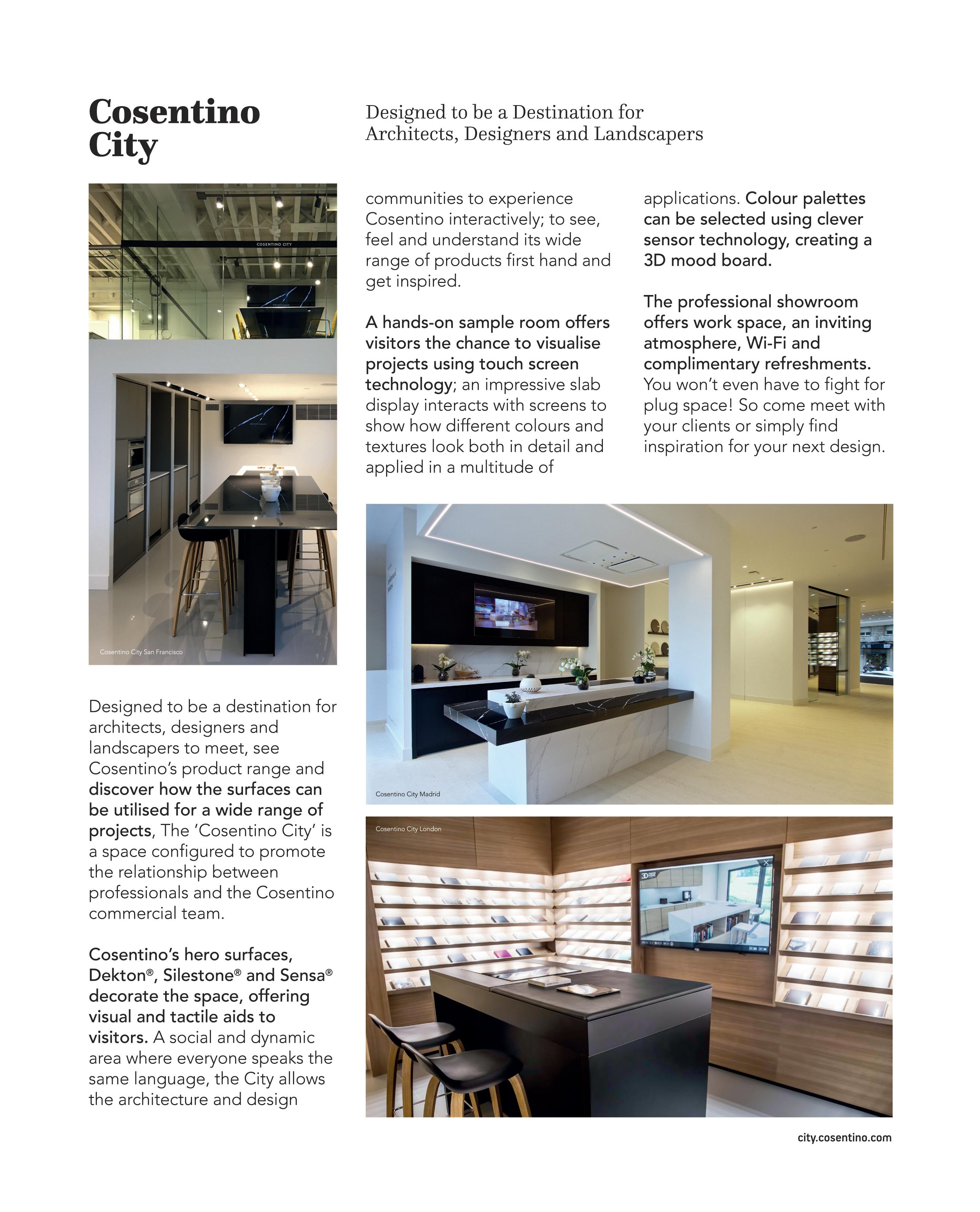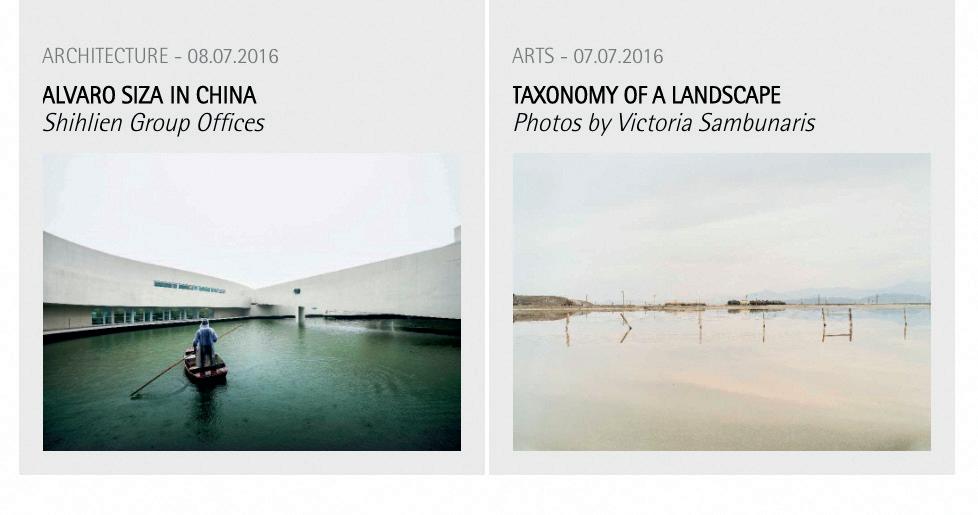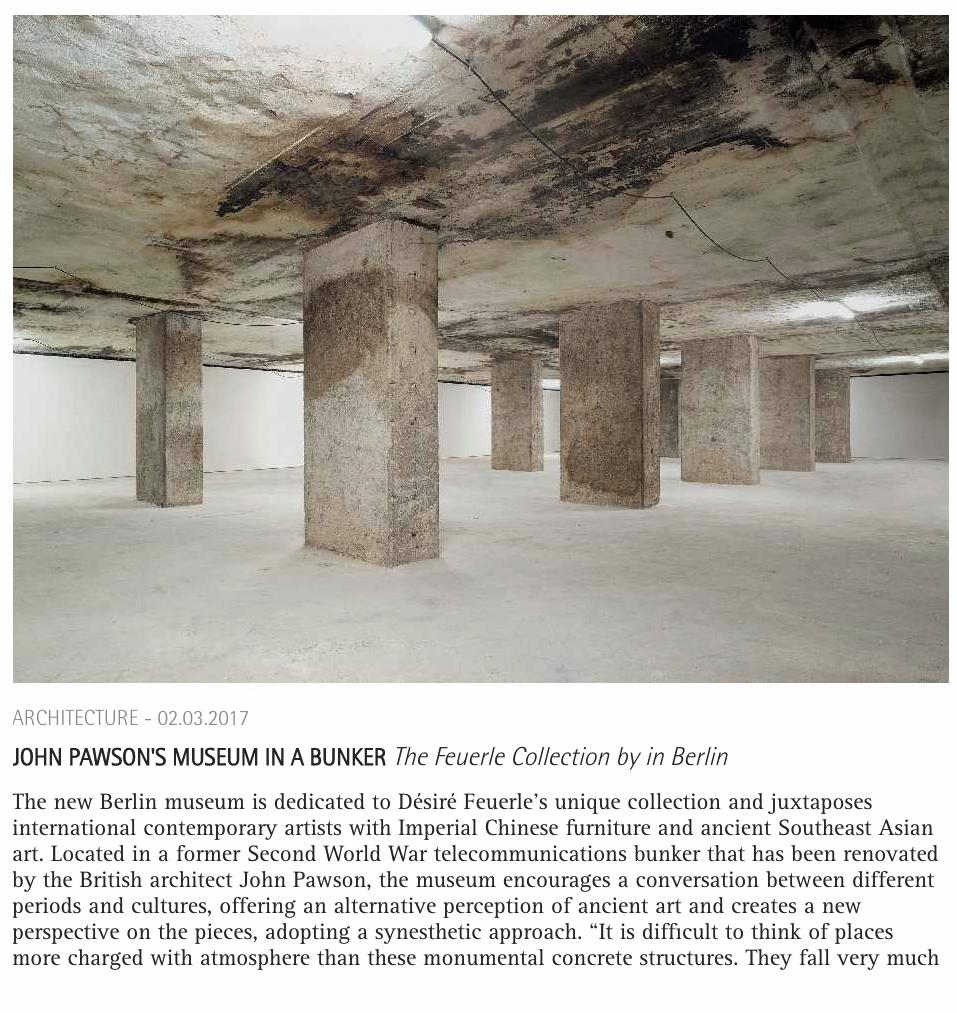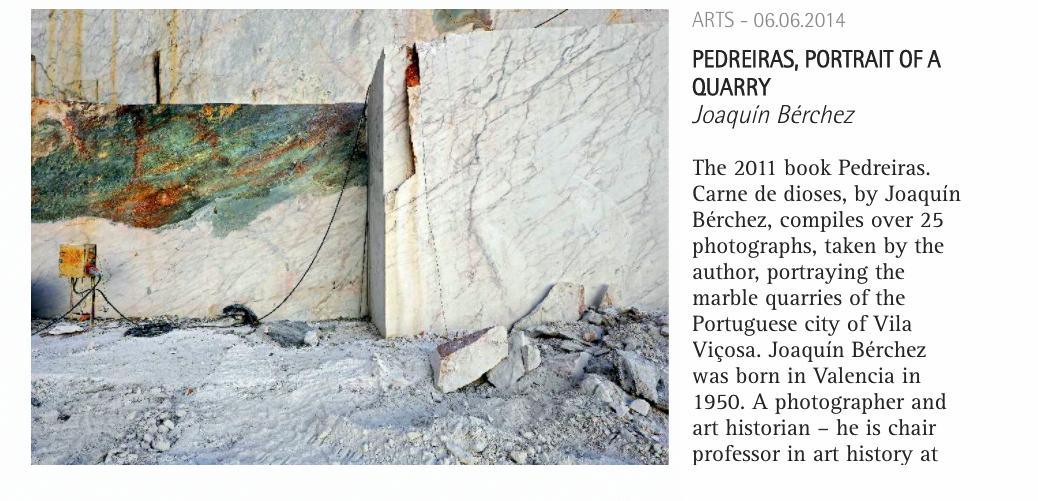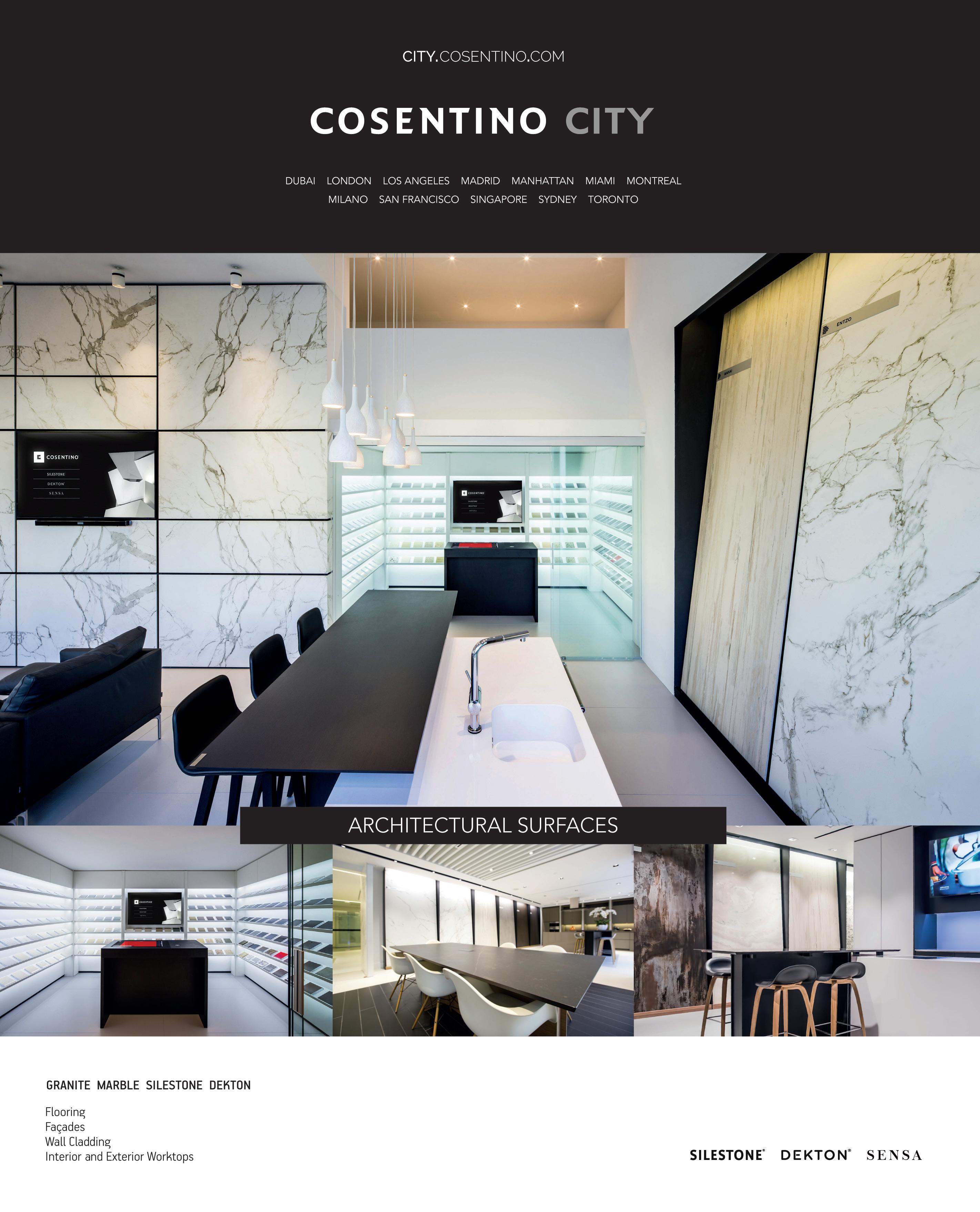c
 16 architecture & everything else
16 architecture & everything else


 16 architecture & everything else
16 architecture & everything else

06 INDUSTRIAL REHAB Vector Architects in China
Un antiguo molino azucarero se transforma en hotel frente al paisaje kárstico del río Li. An old sugar mill is transformed into a hotel facing the karst landscape of Li River.
16 AERIAL ABSTRACTION Tom Hegen Evidencias a vista de pájaro del impacto del ser humano en la Tierra. Bird’s-eye view images documenting human impact on Earth.


26 OMA *AMO FOR PRADA Runway Fashion Show
Una colección de escenografías que desafían las convenciones en los desfiles de moda. A collection of scenographies that challenge the conventions of runway show design.
36 DEKTON HEIGHTS Leonardo Tower by Co-Arc in Johannesburg Más de 25.000 m2 de superficie ultracompacta revisten el edificio más alto de África. More than 25,000 m2 of ultracompact surface wrap the tallest building in Africa.

46 LIGHT WALLS RCR Artotec in Bordeaux
Una sucesión de patios acristalados renueva la espacialidad de un antiguo almacén. A sequence of glazed courtyards renovate the spaces of an old industrial building.
50 BRAZIL CUISINE Dekton Clads Pipo Restaurant in São Paulo
Las texturas neutras de Cosentino protagonizan el diseño interior firmado por RCB. Neutral textures by Cosentino fill the spaces in the restaurant designed by RCB.
56 PINÓS & CHINCHILLA In dialogue
Las arquitectas intercambian reflexiones sobre la cuestión de género en la profesión. The two architects reflect on the gender factor in the field of architecture.
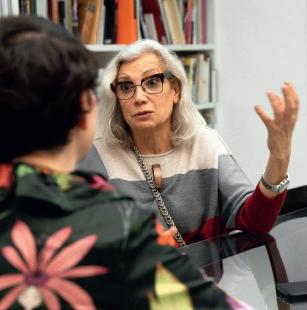
68 AMSTERDAM Netherlands
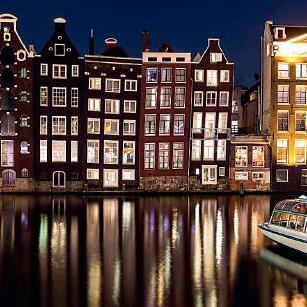
Un recorrido por los principales hitos arquitectónicos de la capital de Holanda. A guide of the key architectural landmarks in the Dutch capital.
78 COSENTINO CITY Flagship Stores
Diseñado para ser el lugar de encuentro de arquitectos, diseñadores y paisajistas. Designed to be a destination for architects, designers, and landscapers.
80 MAGACEEN C Magazine’s Digital Platform
La revista muestra su web dedicada a la arquitectura, el arte y el diseño. The magazine shows its website devoted to architecture, art, and design.
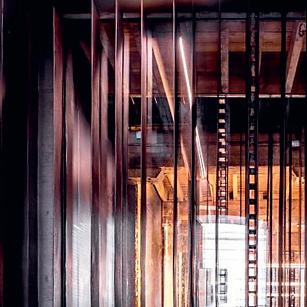

Santiago Alfonso Rodríguez Director adjunto Deputy Director
José Yuste Director de arte Art Director
Miguel Fernández-Galiano
Editado por Edited by Cosentino / Arquitectura Viva Diseño y producción editorial Graphic design and editing Arquitectura Viva S.L.
Maite Báguena
Sandra Borge
Pablo Canga
Cuca Flores
Laura González
Santiago Landín
Jesús Pascual
David Ruiz
Paloma Sanz
Raquel Vázquez
Traducción Translations
Gina Cariño, Laura Mulas Impresión Printing Artes Gráficas Palermo S.L.
La famiLia Martínez Cosentino ha tenido siempre la vocación de superar los desafíos más ambiciosos. A partir de 2014, con la revista C, Cosentino se propuso hacer una nueva aportación al ámbito de la arquitectura, en esta ocasión desde el campo de la comunicación, con la difusión de las mejores innovaciones, diseños y proyectos que contribuyen a hacer el mundo más sostenible y bello.
The marTínez CosenTino family has always applied itself to meeting the most ambitious challenges. From 2014, with C magazine, Cosentino set out to contribute anew to the world of architecture but from a different field, that of communications, through information on the best and latest innovations, designs, and projects that make for a more sustainable and more beautiful world.

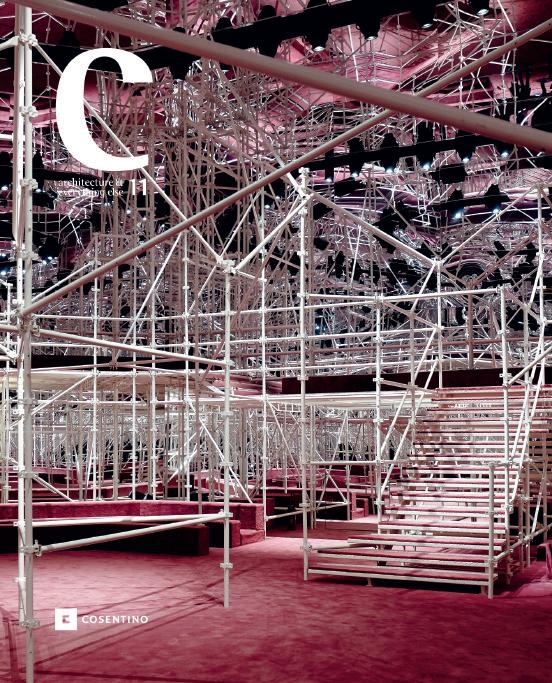

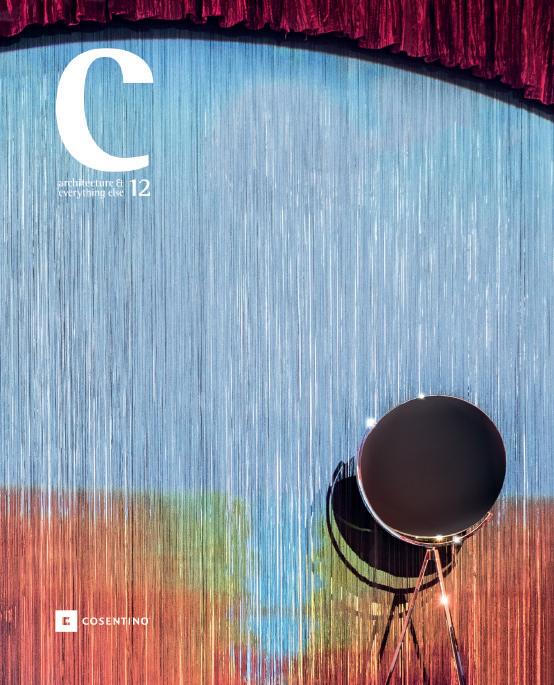
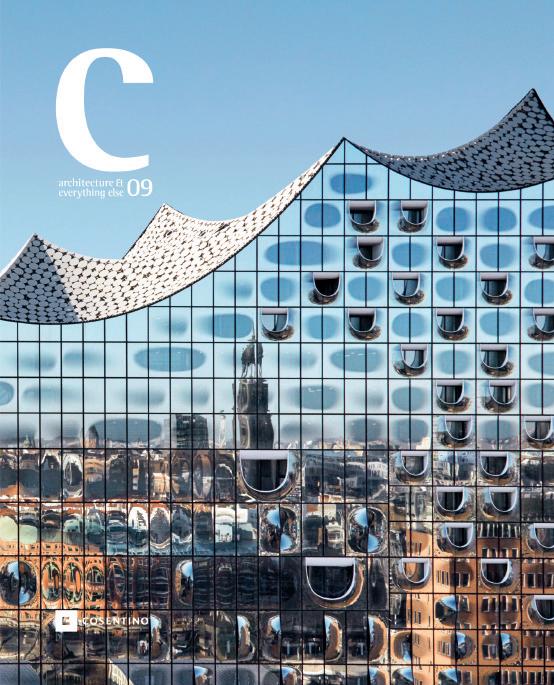
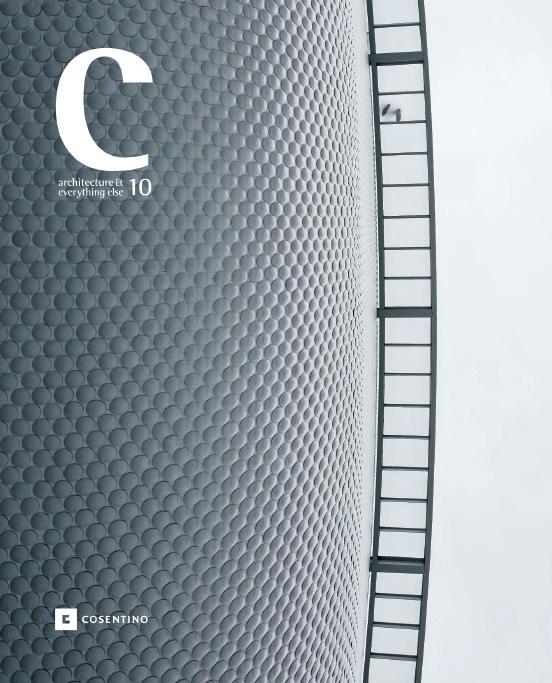

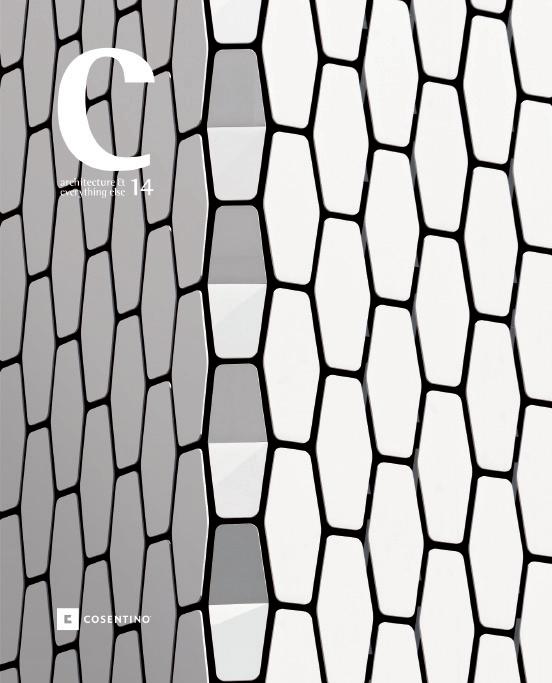
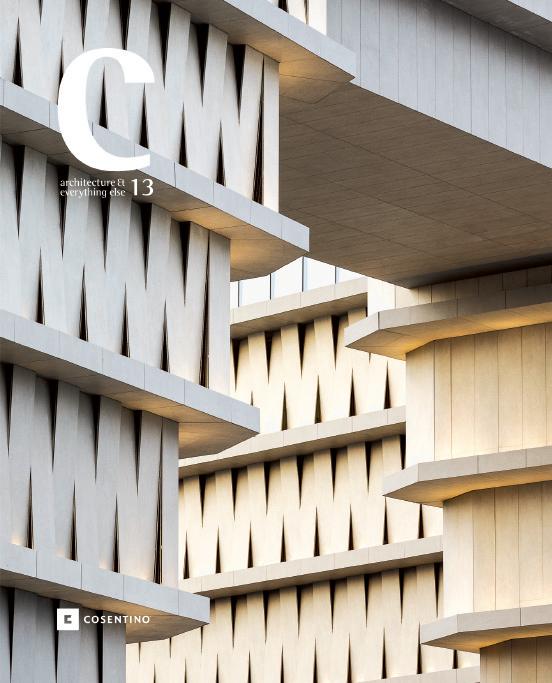
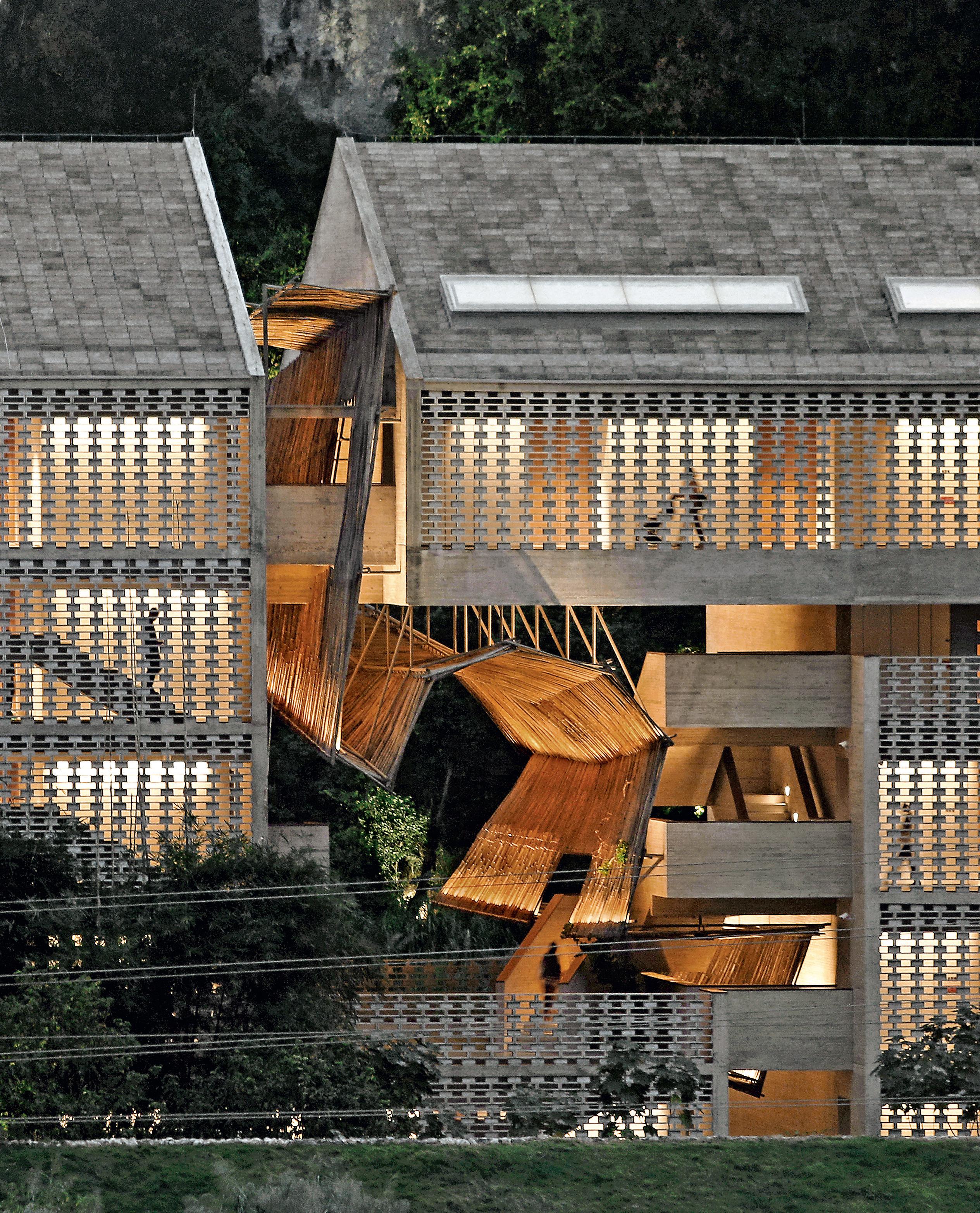 © Su Shengliang
© Su Shengliang
Industrial Rehab
Vector Architects in China
Un antiguo molino azucarero se transforma en hotel manteniendo la continuidad de los tonos y la tectónica de las construcciones antiguas sin renunciar por ello a un lenguaje contemporáneo.
El hotel Alila Yangshuo está enclavado en el pintoresco valle del río Li, en Guangxi, al sur de China, una región que se caracteriza por sus paisajes de montañas kársticas ondulantes. En este entorno singular, el proyecto ha intervenido sobre un molino azucarero construido en la década de 1960 y muy bien conservado, y el respeto a este patrimonio se ha convertido en una de las premisas de la intervención. El molino y el resto de antiguas piezas industriales ocupan la parte central del hotel, mientras que los nuevos edificios, dedicados a habitaciones y villas, se sitúan en los flancos. Una plaza rehundida y una lámina de agua acentúan el simbolismo del conjunto, además de evocar el significado de la vieja instalación. La piscina se sitúa sobre los antiguos muelles de carga, en un saliente que se asoma hacia el valle y enmarca las vistas.
La sensación de continuidad se ha reforzado respetando los materiales y tonos del edificio preexistente, pero sin renunciar a introducir una paleta más contemporánea. En este sentido, los bloques de cemento y el hormigón encofrado con madera in situ contribuyen a la ligereza y la transparencia de los nuevos volúmenes. Dos circulaciones principales atraviesan el edificio del hotel: una funciona como un corredor interno; la otra hace las veces de vía pública. Finalmente, el contraste entre la horizontalidad de la arquitectura y la verticalidad poderosa de las montañas kársticas sugieren la interacción entre lo artificial y lo natural.
The project involved transforming an abandoned sugar mill into a hotel preserving the tones and the tectonic features of the existing buildings while embracing a contemporary language.
Alila Yangshuo hotel sits in the picturesque Li River valley of Guangxi, in southern China, surrounded by the region’s characteristic karst mountain scenery. In this unique context, the project intervenes on an old sugar mill built in the 1960s, which had been beautifully preserved. This industrial heritage represents the spirit of older generations, and respecting it becomes the guiding premise of this project. The mill and the rest of the old industrial pieces occupy the central part of the hotel complex, flanked by the newly added suite building and villas. The sunken plaza and reflecting pond accentuate the spiritual symbolism and significance of the old structure.
The pool sits on two old loading docks, on a cantilever that overlooks the valley and frames the views. The design seeks a sense of consistency by using more contemporary materials and construction methods while preserving the tinge and masonry structure of the old. In this sense, the use of hollow concrete blocks and wood-formed cast-in-place concrete serves to make the new volumes lighter and more transparent. Two main circulation systems pass up and through the suite building: one being a completely functional corridor system with the other serving as a free public walkway. The contrast between the horizontality of the architecture and the verticality of the karst mountains suggests an interaction between the artificial and the natural.

Las construcciones preexistentes alojan las zonas comunes del hotel, mientras que los volúmenes de nueva planta —dispuestos en torno a dos estanques y una plaza rehundida— albergan las habitaciones.
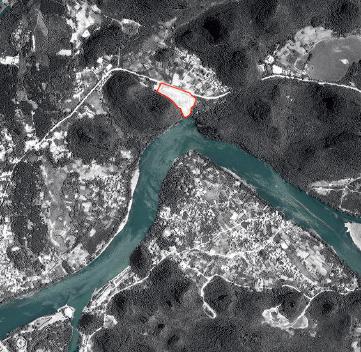

The existing buildings house the communal areas; the new volumes, arranged around two ponds and a sunken square, contain the bedrooms and the villas; the swimming pool is in the former loading area.
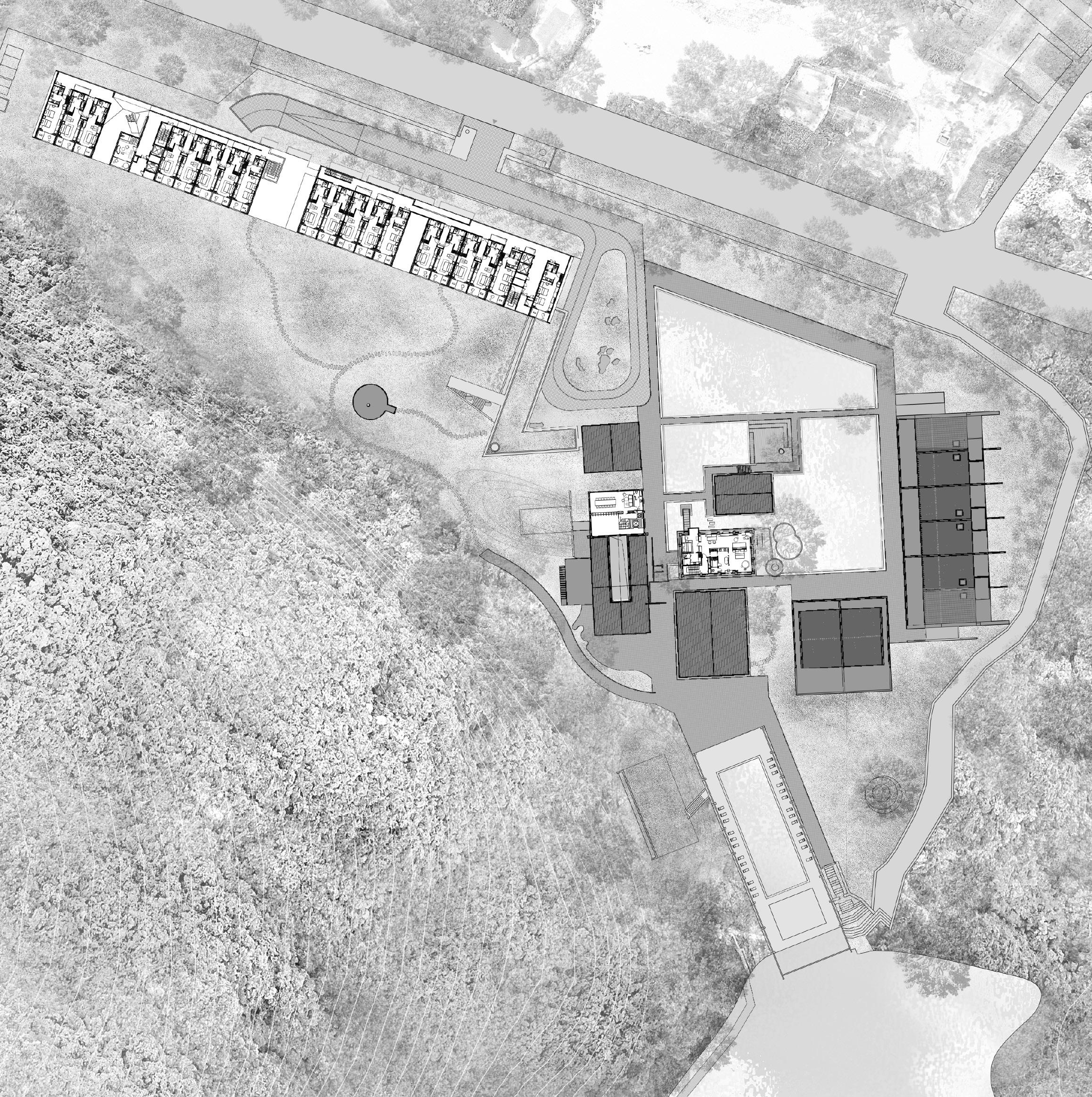
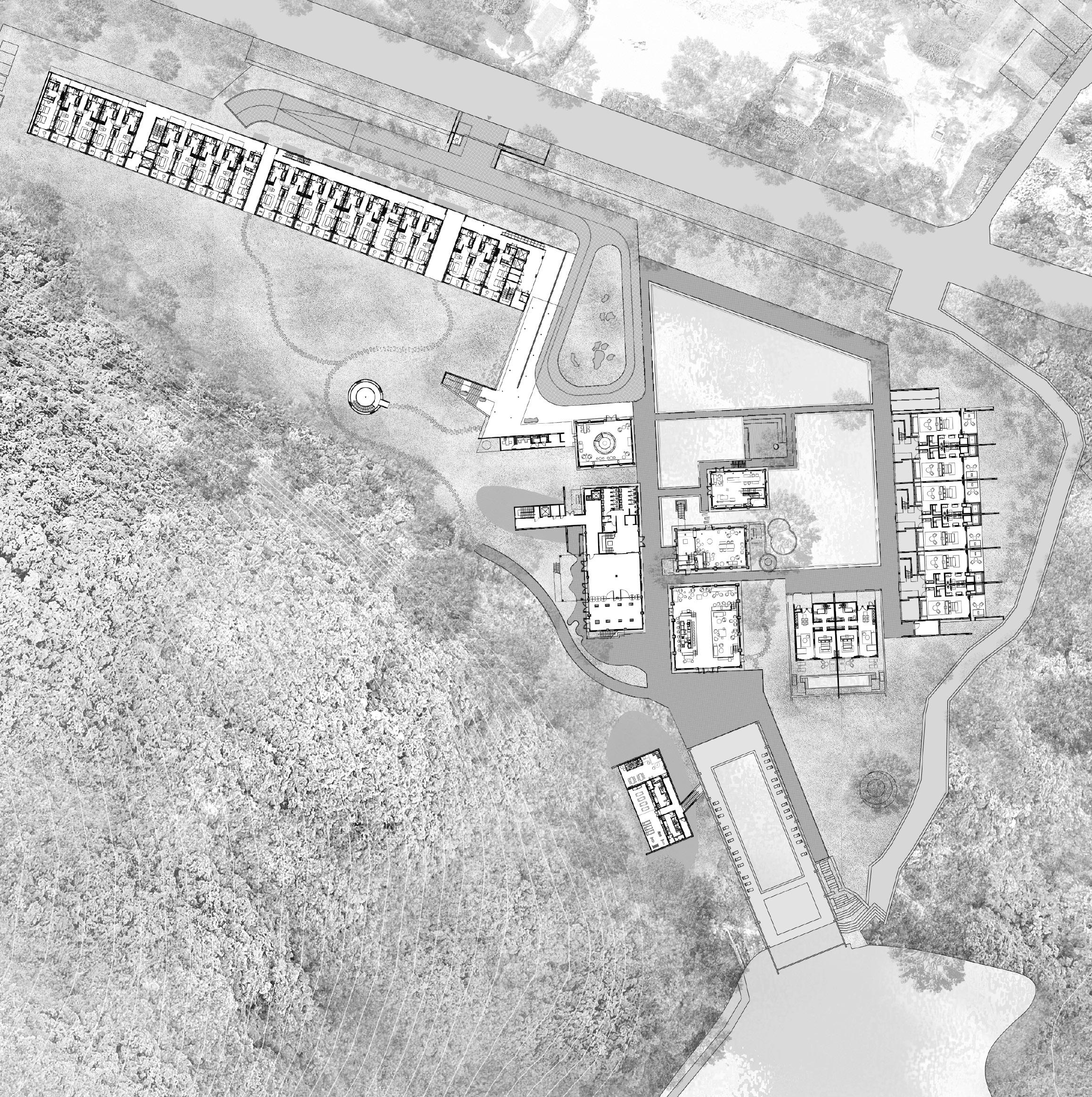
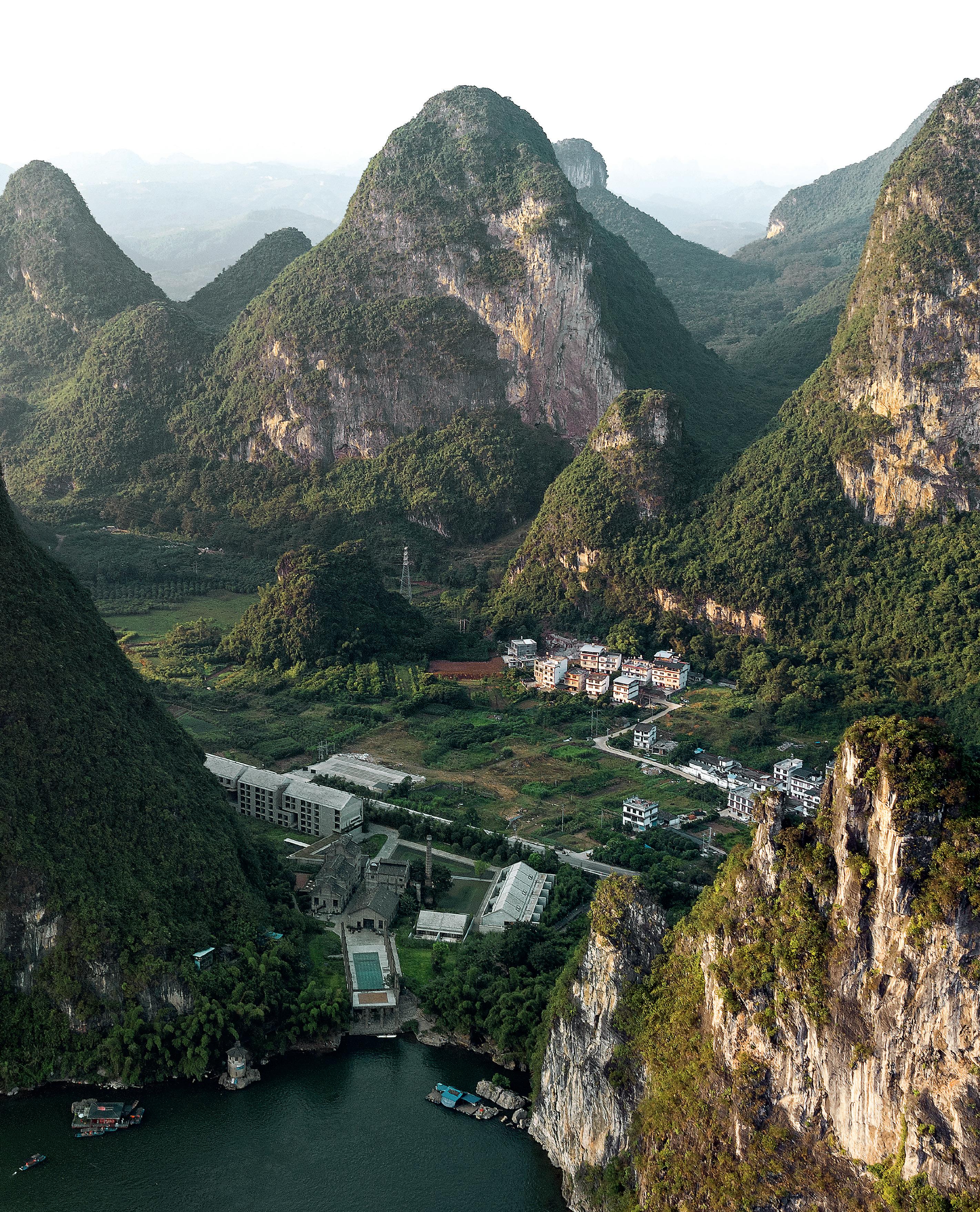
La horizontalidad de los nuevos edificios se contrapone con la verticalidad del paisaje kárstico que los rodea. La celosía, formada por bloques de cemento llenos y vacíos, genera una imagen de ligereza.

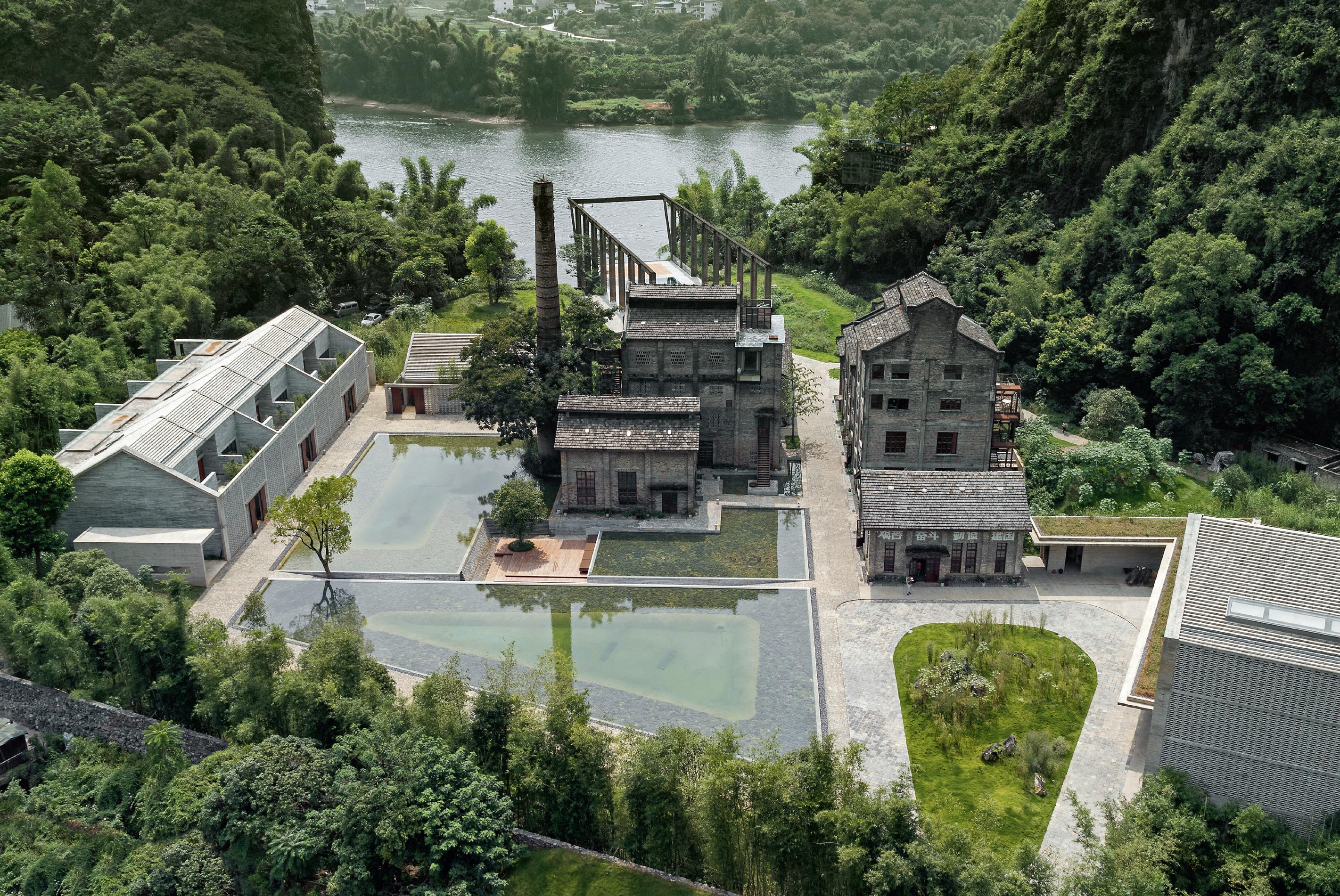
The horizontality of the new buildings contrasts with the vertical karstic landscape around it. The latticework, formed by cement blocks of solids and voids, creates a sense of lightness and transparency.


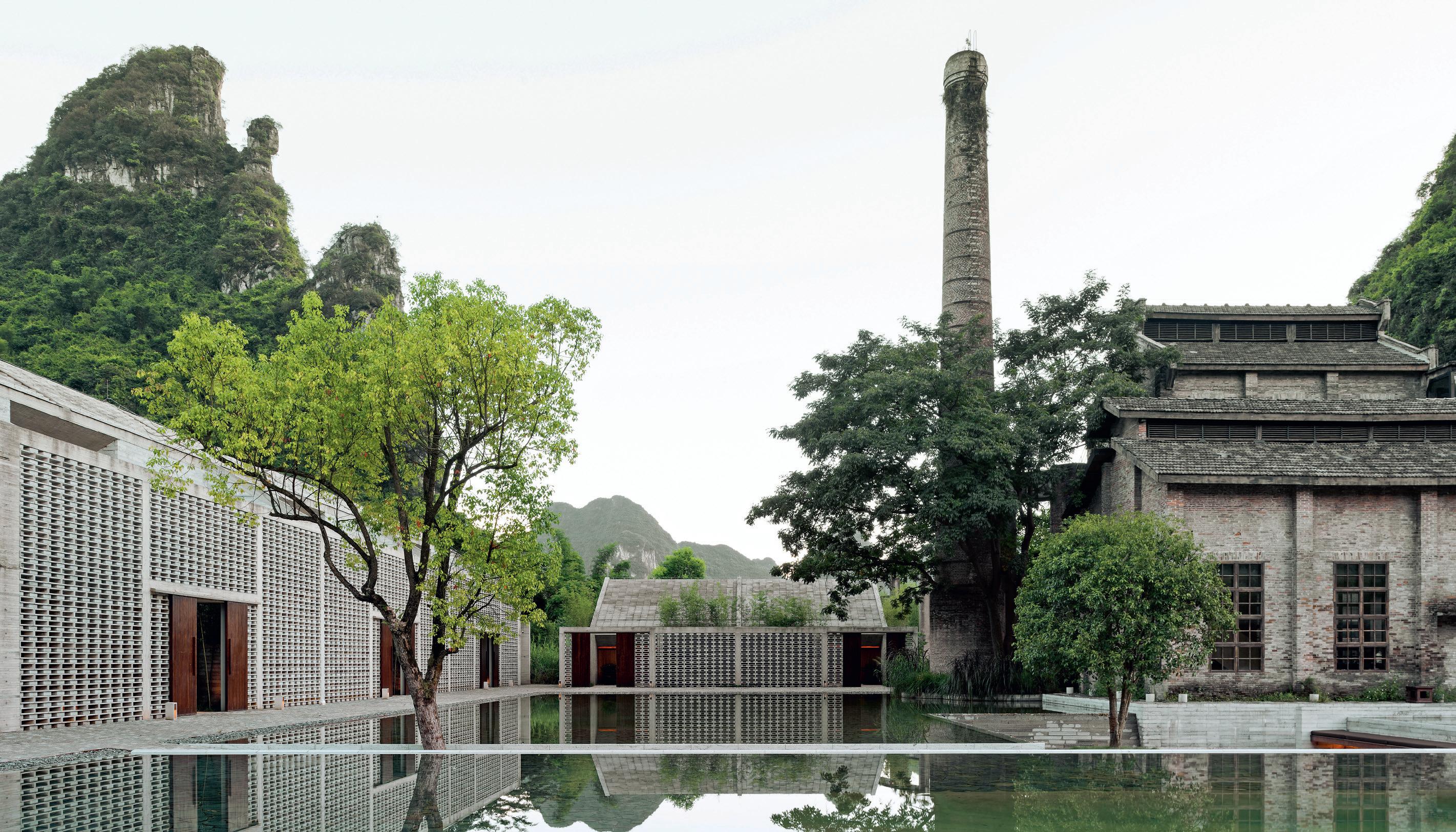
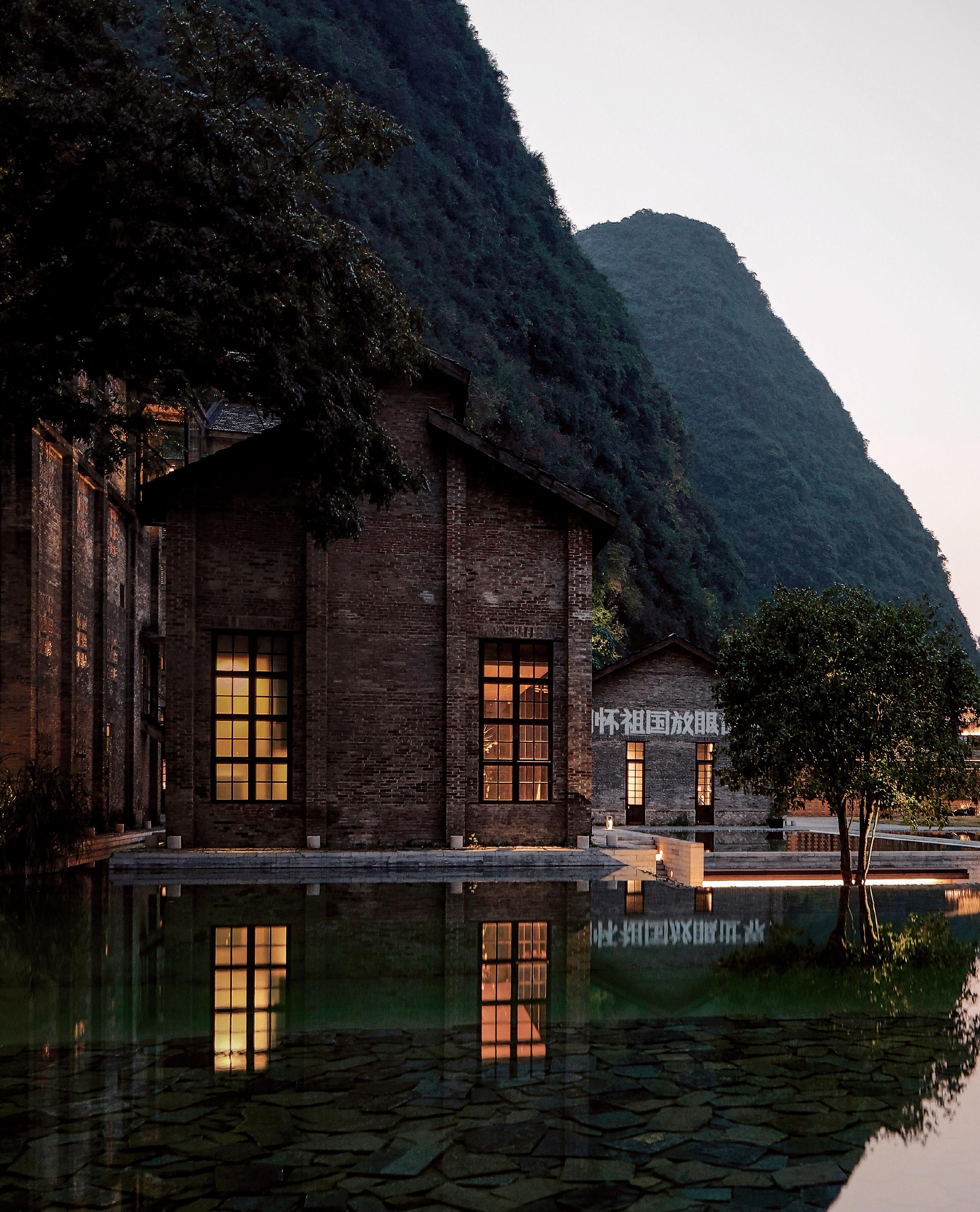
Arquitectos Architects

Vector Architects / Gong Dong (socio partner); Bin He, Nan Wang, Chen Liu, Fangzhou Zhu, Xiangdonbg Kong, Peng Zhang, Liangliang Zhao, Jian Wang, Mengyao Xu, Yue Han, Zhiyong Liu, Bai Li, Xiaokai Ma (equipo team); Bin Ju / Horizontal Space Design (interiorismo interior design); Jinjing Wei, Yaocheng Wei, Hongming Nie, Luokai Zhang, Fanyu Luo, Wenjun Zho (equipo de interiorismo interior design team); Liangliang Zhao, Peng Zhang, Yingfa Li, Xipu Li (dirección de obra site architect)

Colaboradores Collaborators
Guilin Institute of Architectural Design Co.,Ltd., Jianmin Qin, Mu Yang, Yuanxin Lu (LDI); Sen Lin, Haijia Li, Fuliang Wei, Jiaorong He, Yu Gao – Shenzhen JS M&E Engineering Desing (instalaciones installations); Albert Martin Klaasen (iluminación lighting); Wenfu Zheng, Bo Li, Xianzhong Zhou (estructuras structures); Dengsheng Lin, Xiaoyan Lu, Jing Deng (ingeniería MEP engineering); Qianbai Yu, Yingying Xiao (paisajismo landscaping)
Cliente Client
Landmark Tourism Investment Company
Fotos Photos Chen Hao, Su Shengliang (pp. 10, 12)
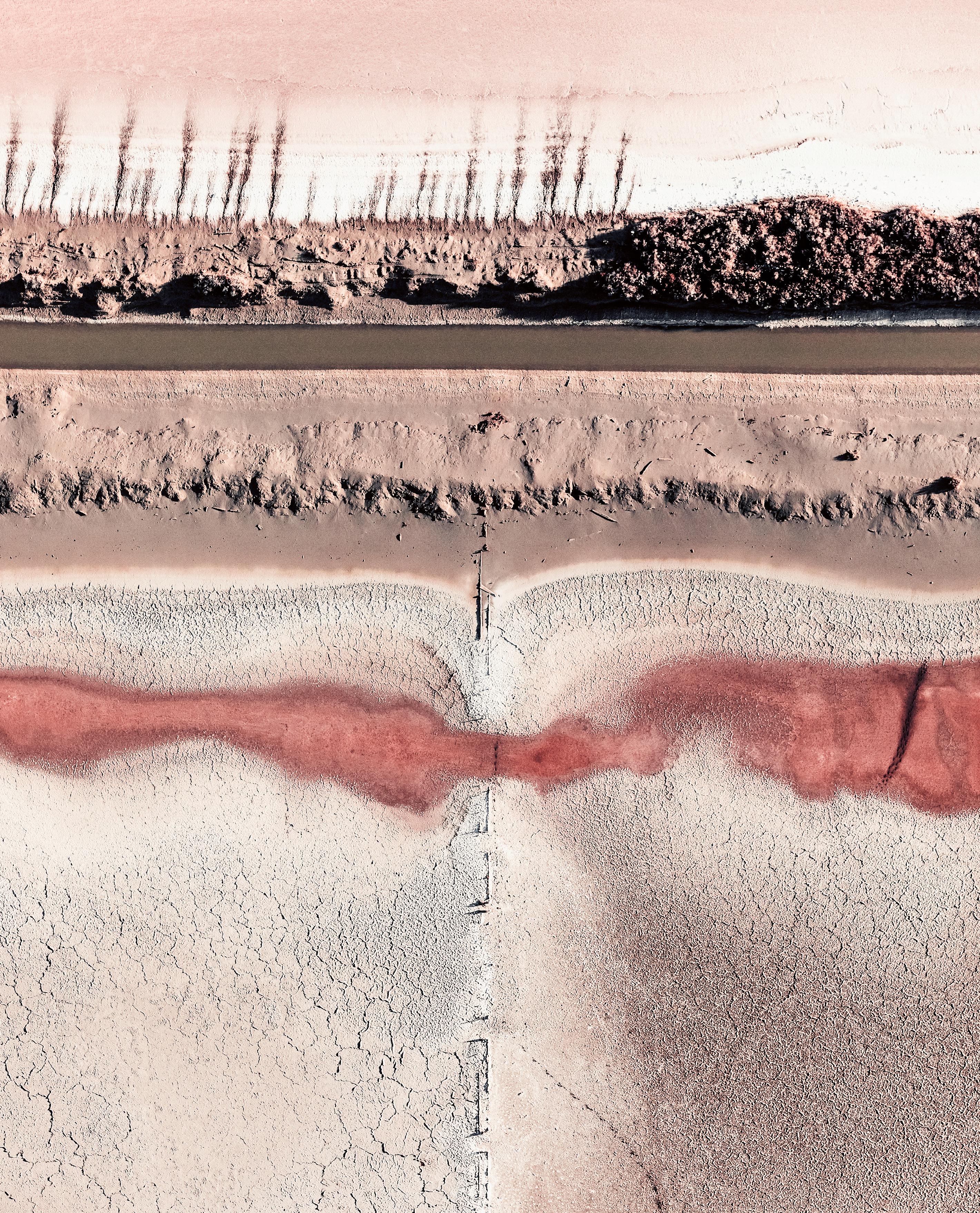
Aerial Abstraction
Tom Hegen
Basada en una intensa investigación sobre el concepto de Antropoceno, la obra del fotógrafo con sede en Múnich Tom Hegen registra visualmente el efecto de las actividades del hombre en la Tierra.
El brillo de los colores, las geometrías de los paisajes y unas texturas casi táctiles hacen de las imágenes de Tom Hegen (Königsbrunn, 1991) aparentes cuadros abstractos, cuando son en realidad documentos objetivos de la realidad. El fotógrafo y diseñador muestra, a través de imágenes aéreas, el impacto del ser humano sobre la Tierra, buscando territorios transformados artificialmente para invitar al observador a descubrir el mundo desde otra perspectiva, enfrentarle a la dimensión de sus intervenciones y hacerle consciente de su responsabilidad en la conservación de nuestro planeta.
After an intensive process of research on the concept of Anthropocene, the Munich-based photographer Tom Hegen has flown over different regions to document the human impact on the Earth’s natural landscapes.
The shine of the colors, the geometries of the landscapes, and the almost tactile textures make the images of Tom Hegen (Königsbrunn, 1991) look like impressive abstract paintings, when they are actually objective documents of reality. Through aerial images the photographer and designer shows the human impact on Earth, searching for artificially transformed territories and inviting the observer to discover the world from a different perspective, placing them face to face with the dimension of their interventions and making them aware of their responsibility in the preservation of our planet.


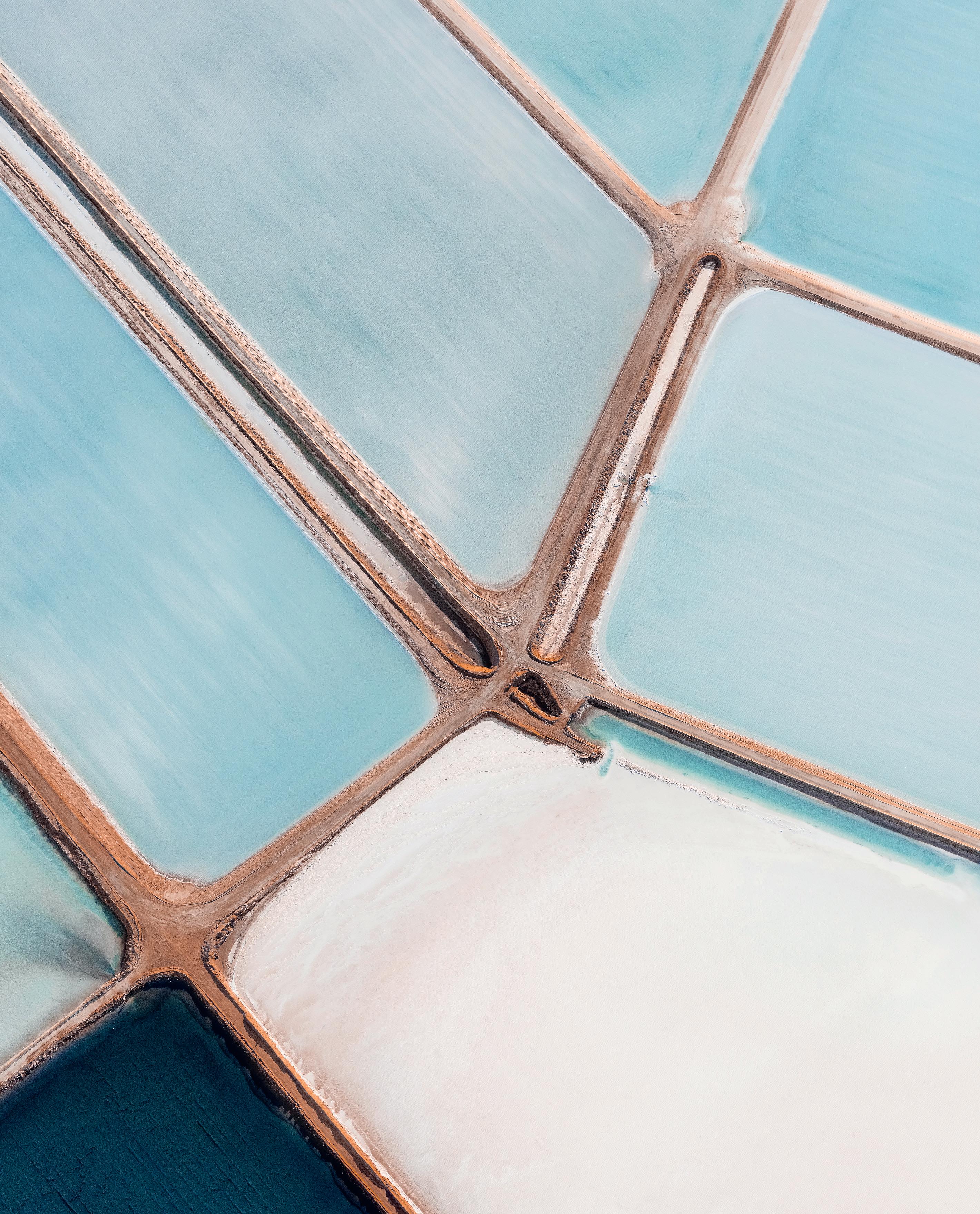
‘The Salt Series’ es una colección abstracta de imágenes sobre la intervención humana en los paisajes productivos. La presencia de microorganismos y la salinidad cambian el color de los distintos estanques.

‘The Salt Series’ is an abstract collection of images that explore human intervention in the production of salt. The presence of microorganisms and salinity change the color of the ponds.
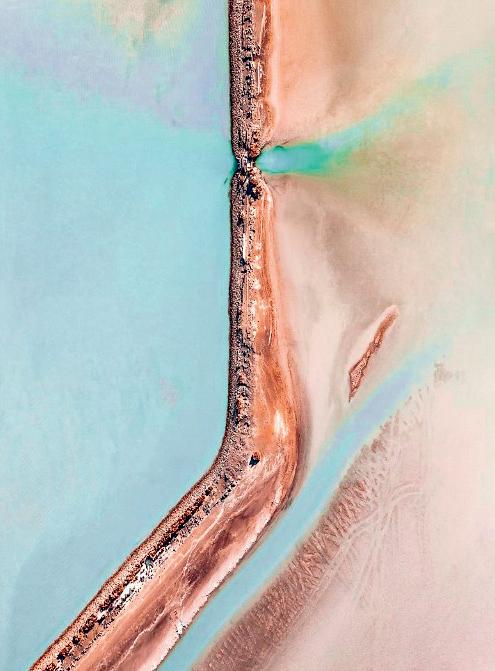
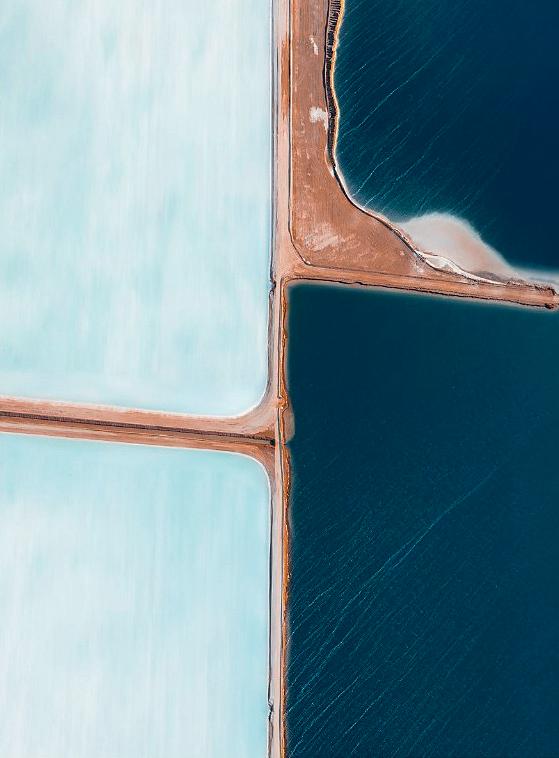
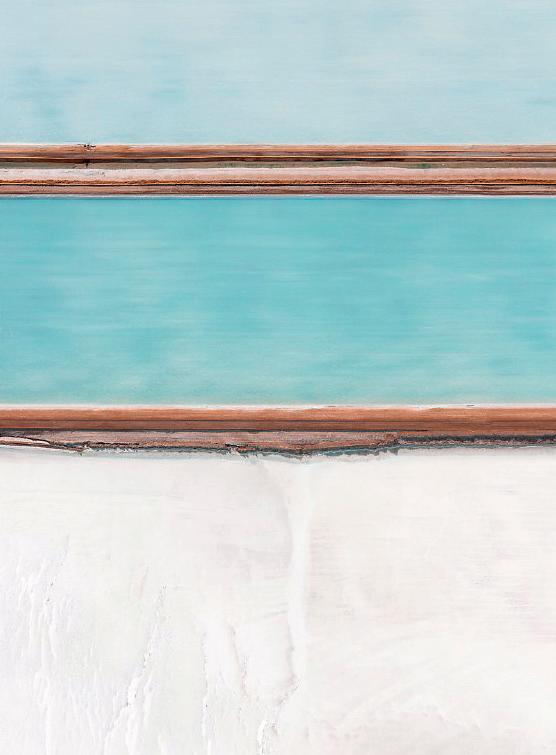
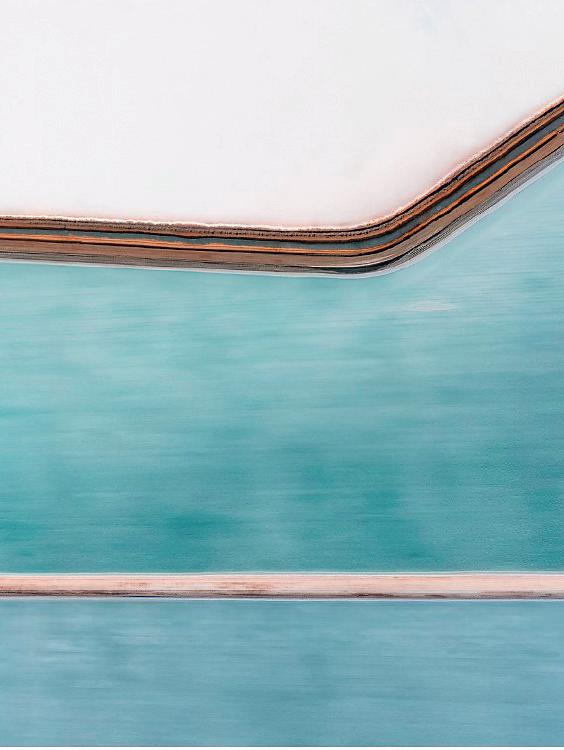


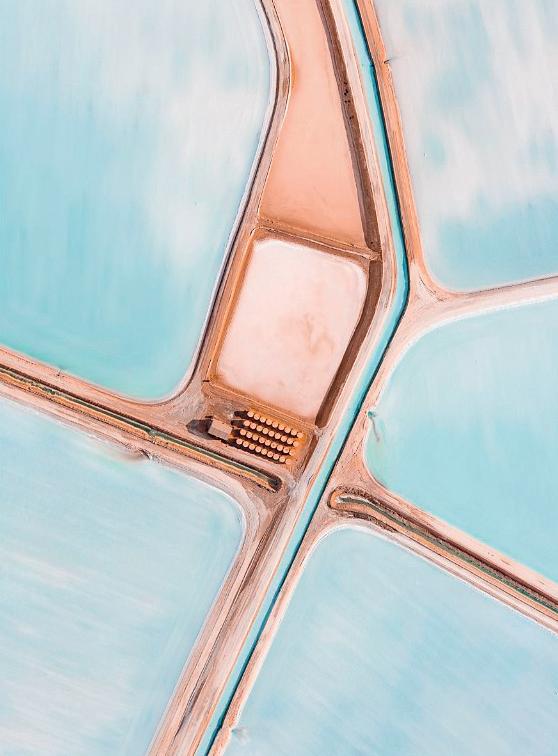
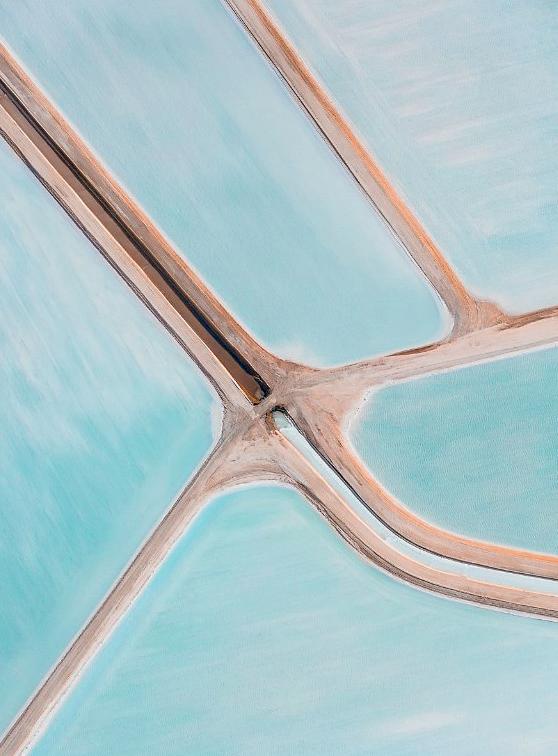
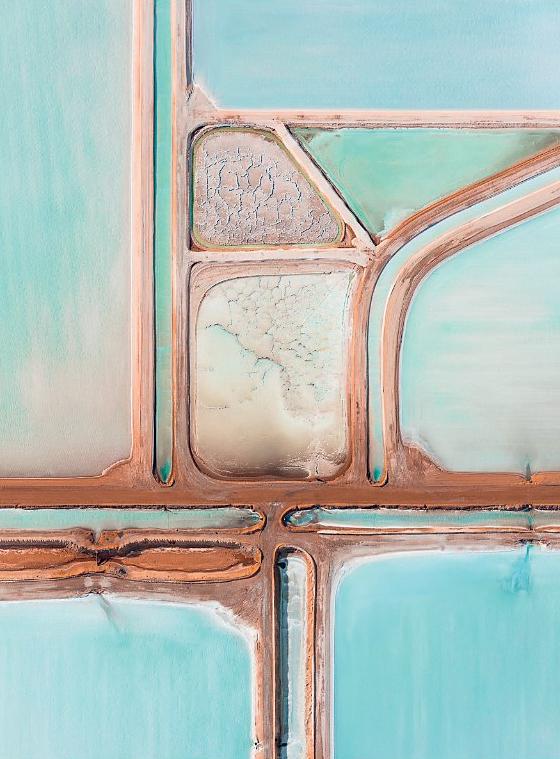

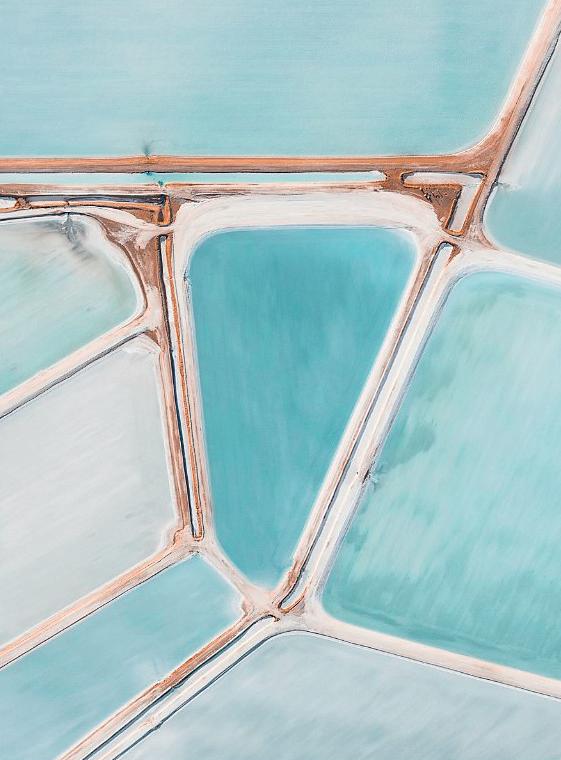


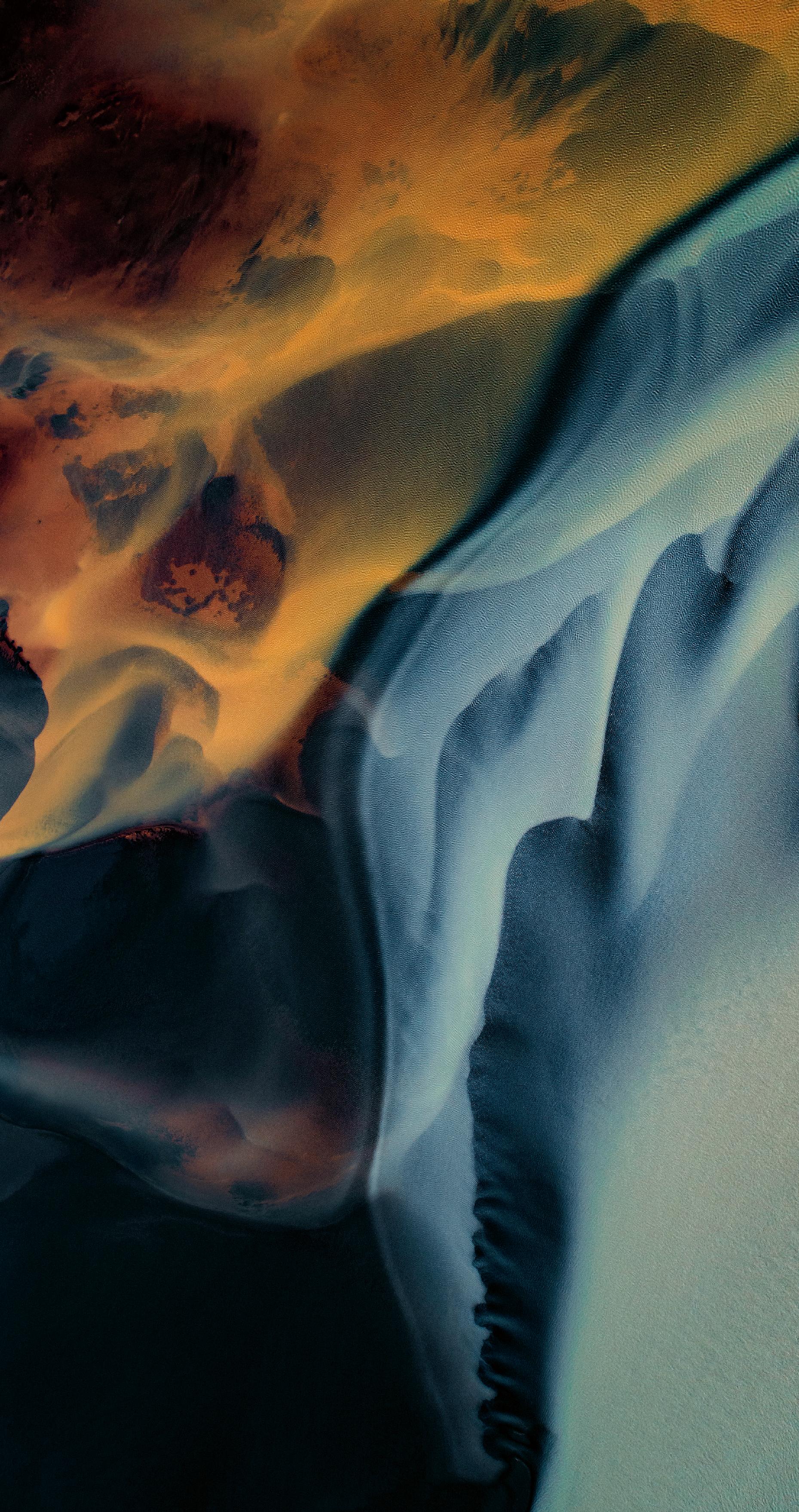

En ‘The River Veins Series’ se intuyen los patrones dibujados al derretirse los glaciares sobre la negra arena volcánica de Islandia, mientras que ‘The Iceberg Series II’ recoge la geometría del fiordo groenlandés de Ilulissat.
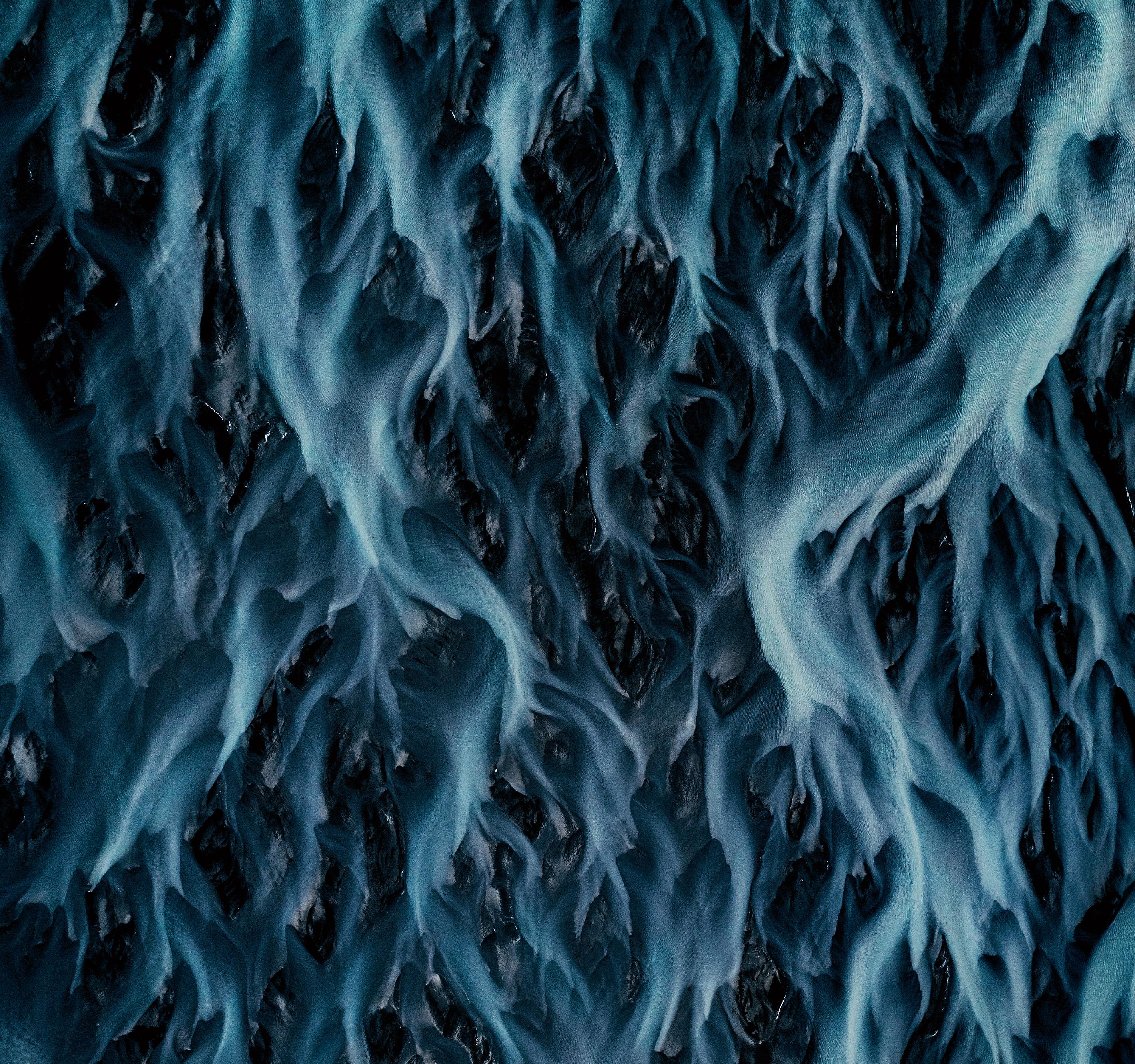

‘The River Veins Series’ reflects the patterns left when the glaciers melt on black volcanic sand in Iceland, and ‘The Iceberg Series II’ captures the shapes of Ilulissat Icefjord in Greenland.

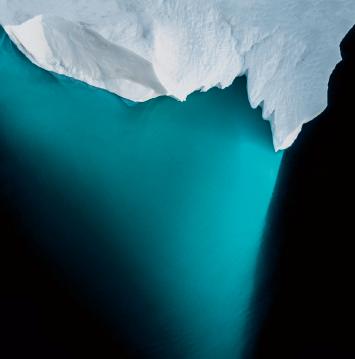 ‘The Iceberg Series II’
‘The Iceberg Series II’
Tanto ‘The Quarry Series’ como ‘The Marble Series’ revelan los procesos previos a la construcción de las ciudades al documentar los métodos de extracción y procesado de las materias primas.
‘The Quarry Series’ and ‘The Marble Series’ both show the various methods developed for mining and processing of the raw materials needed in the construction of growing cities and infrastructure.


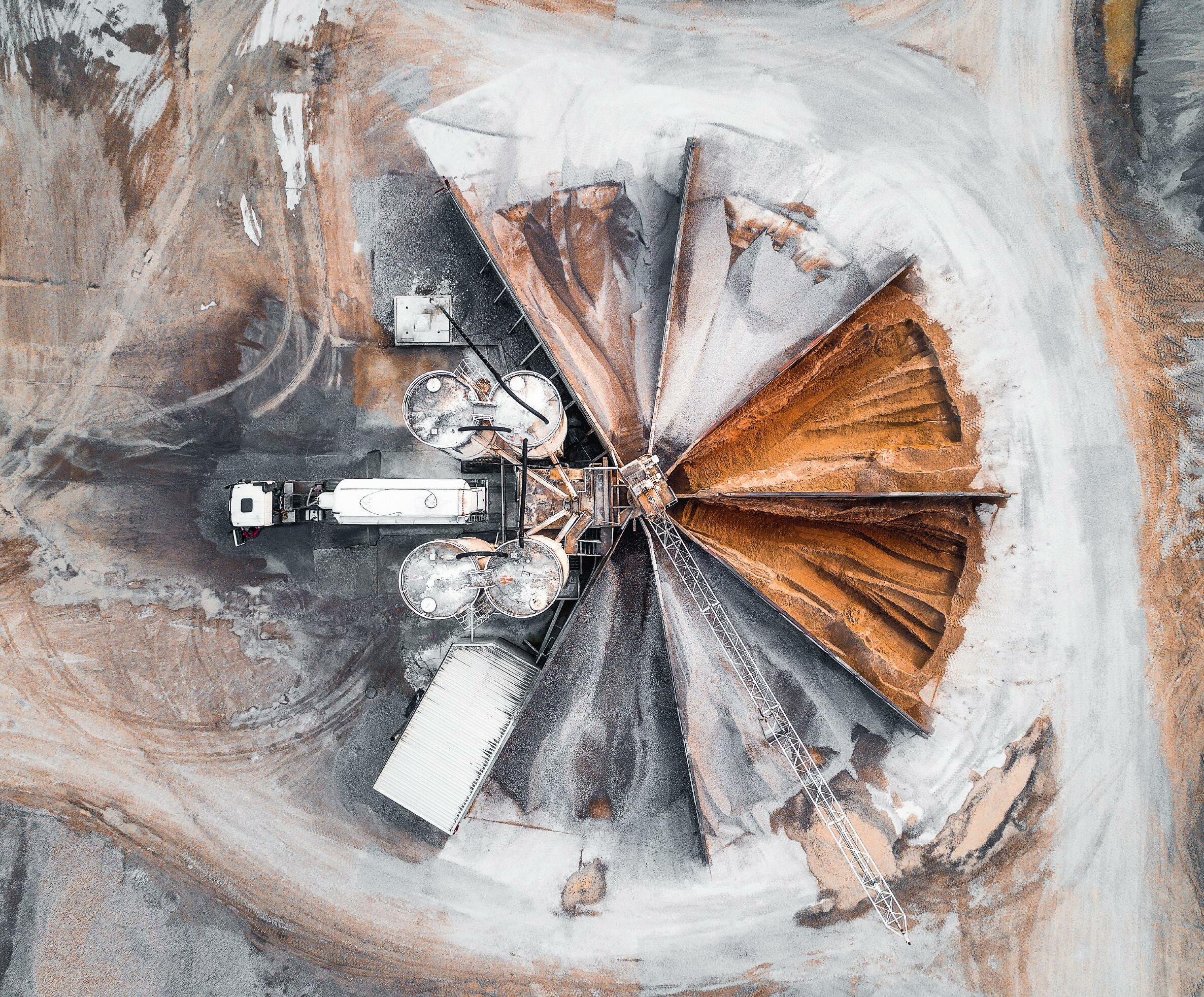


OMA*AMO for Prada Runway Fashion Show
Envisaged as true architectural projects, the runway show designs developed by AMO permit a high level of creative experimentation that resonates with Prada’s innovative character.

Desde su primera colaboración en 2004, cada año AMO —el think tank de OMA, la oficina de Rem Koolhaas— diseña para Prada las escenografías en las que la firma de moda milanesa presenta sus colecciones. Planteando cuestiones como la relación del espectador con la moda, la jerarquía de la industria, o el uso de los espacios performativos, los proyectos de AMO transmutan espacios industriales, como los de la sede del grupo en vía Fogazzaro o los de la Fondazione Prada —construida por OMA en una antigua destilería en 2015—, en impactantes escenarios que convierten las pasarelas en auténticas experiencias sensoriales protagonizadas por la moda tanto como por la arquitectura.
La configuración de los espacios no está necesariamente relacionada con la colección que se presenta, sino que busca desafiar las convenciones establecidas situando al público en una posición inesperada o reinventando la manera de desfilar. A través de recursos como la iluminación, la materialidad o el color, las pasarelas evocan escenas teatrales, paisajes extremos o ambientes futuristas inspirados en diferentes referencias culturales o artísticas que trasladan al espectador a un territorio onírico.
Since their first collaboration in 2004, every year AMO – the research and design branch of OMA, the office founded by the Dutch architect Rem Koolhaas –designs the sets for the runway shows of the Milanese luxury fashion house Prada. Proposing issues like the relationship of spectators with fashion, the hierarchy of the industry, or the use of performative spaces, AMO’s projects transform industrial facilities like those in the group’s headquarters on Via Fogazzaro or those of Fondazione Prada – built by OMA in 2015 in an old distillery – into dazzling stages, turning the fashion shows into true sensory experiences protagonized by fashion and architecture alike.
The design of the settings is not necessarily related with the collection presented, but seeks challenging the established conventions, placing the audience in an unexpected place or reinventing the way of walking down the runway. Through resources like lighting, materiality, or color, the catwalks evoke theater scenes, extreme landscapes, or futuristic atmospheres inspired by different cultural or artistic references that take spectators to an oneiric world.

Como resultado de la colaboración entre AMO y Prada, los desfiles de la firma italiana se han convertido en impactantes eventos que modifican y alteran la percepción del espacio industrial donde se desarrollan los mismos.
The collaboration between AMO and Prada has turned the runway shows of the Italian fashion house into spectacular events that modify and alter the perception of the industrial spaces chosen to present the collections.

 Prada Spring/Summer 2019 Men’s Show. © Agostino Osio
Prada Spring/Summer 2019 Men’s Show. © Agostino Osio
Prada Spring/Summer 2019 Men’s Show. © Agostino Osio
Prada Spring/Summer 2019 Men’s Show. © Agostino Osio
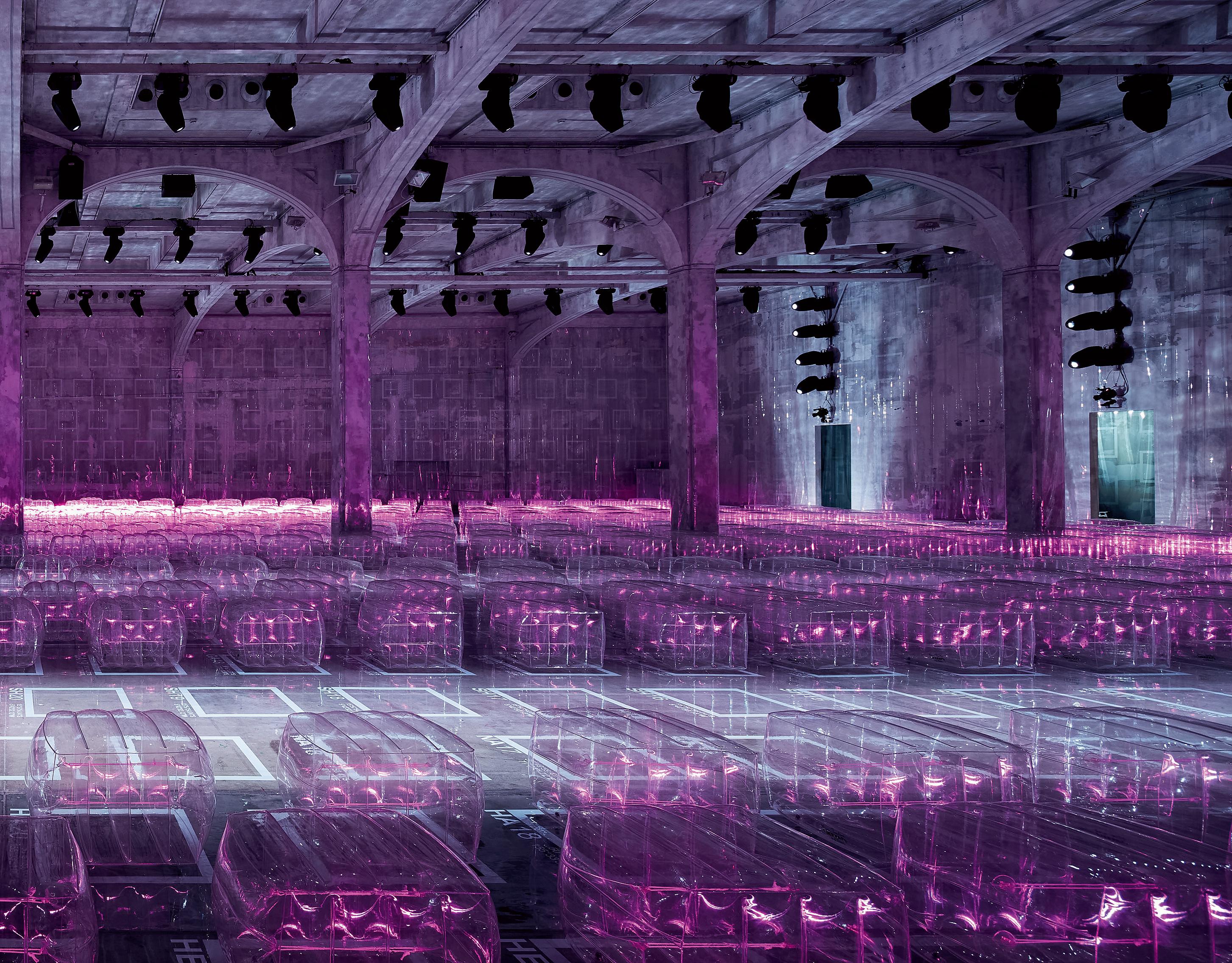

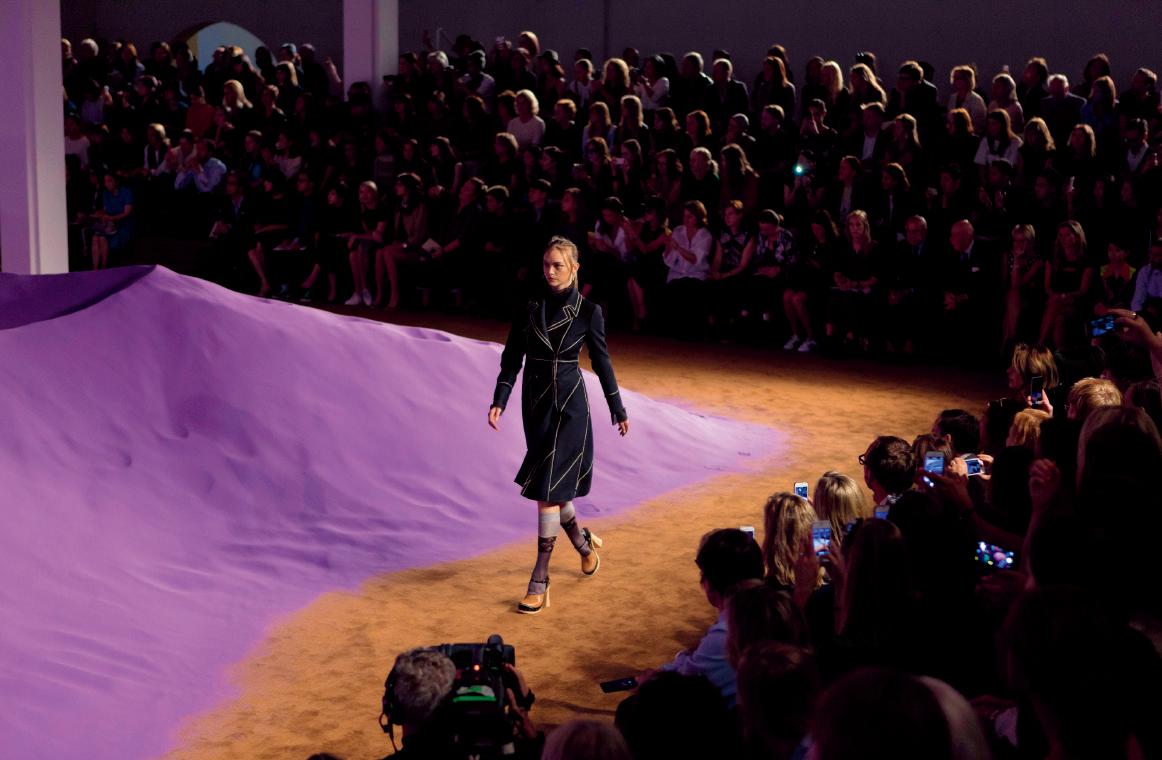 Prada Spring/Summer 2015 Men’s and Women’s Show. © Agostino Osio
Prada Spring/Summer 2015 Men’s and Women’s Show. © Agostino Osio
Las pasarelas están inspiradas en diferentes referencias culturales o artísticas como el teatro, el paisaje o la ciudad; y llevan al límite recursos expresivos como la iluminación, la materialidad o el color.

The catwalks are inspired in different artistic or cultural references like theater, the landscape, or the city, and take to the extreme expressive resources like lighting, material quality, or color.

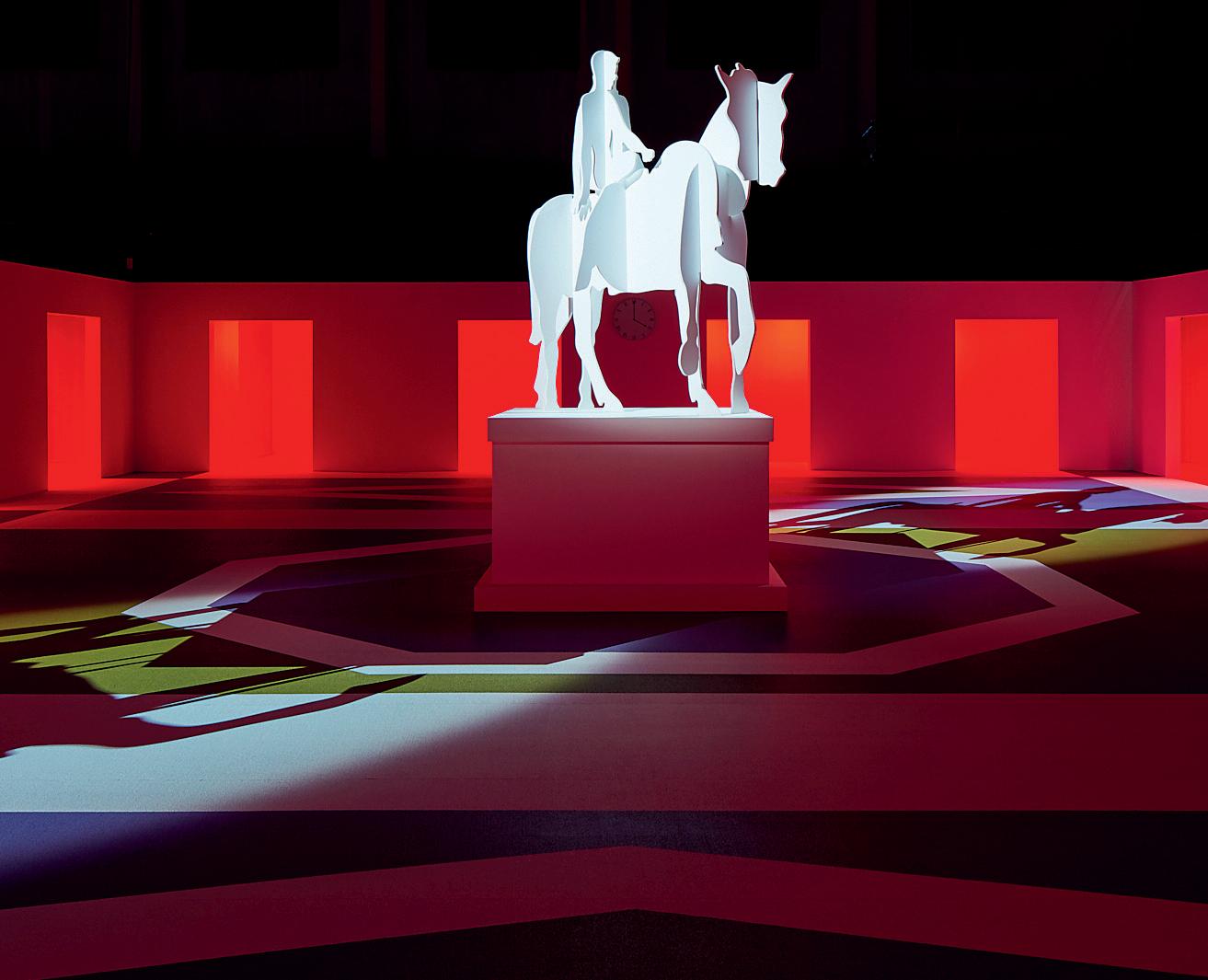
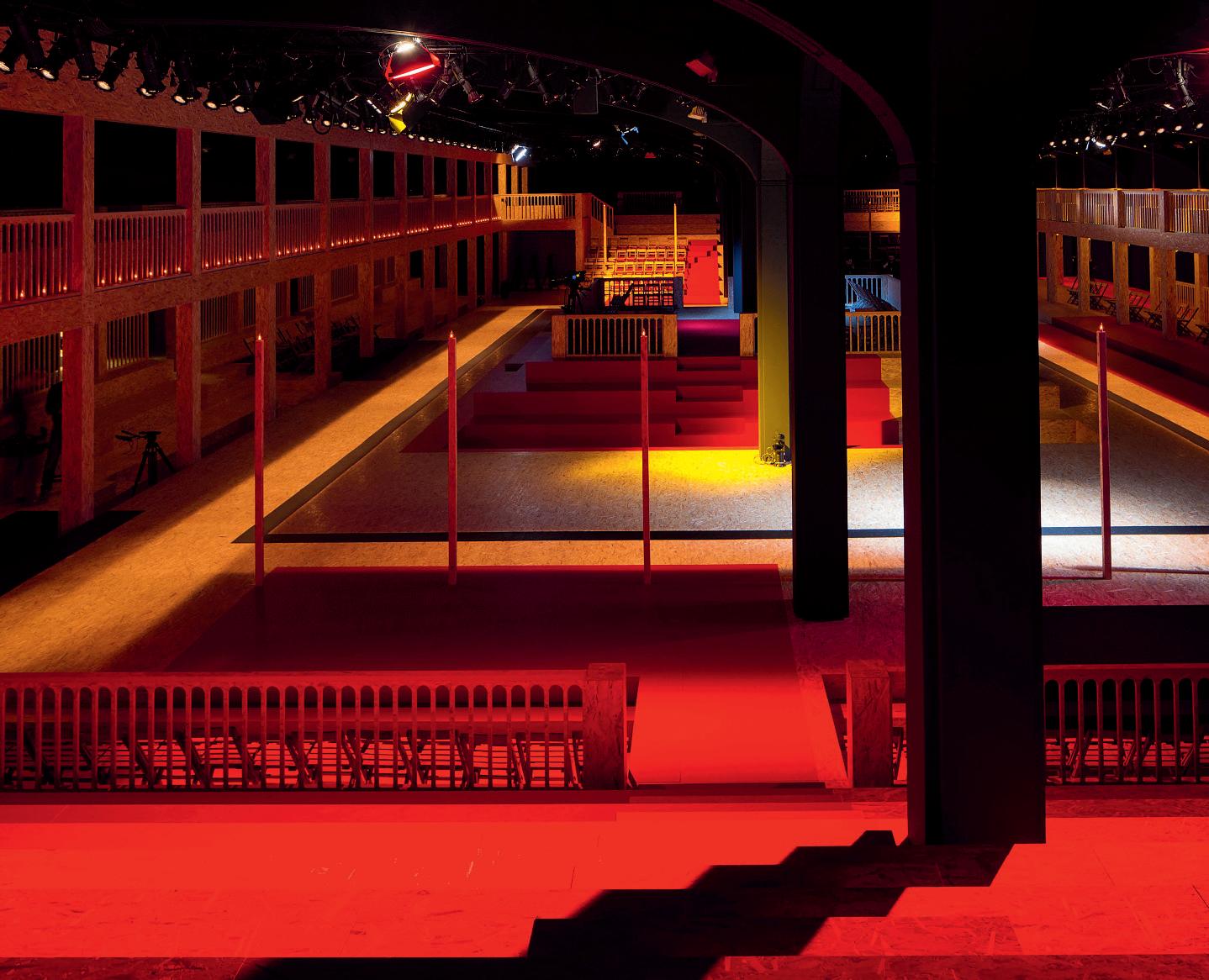
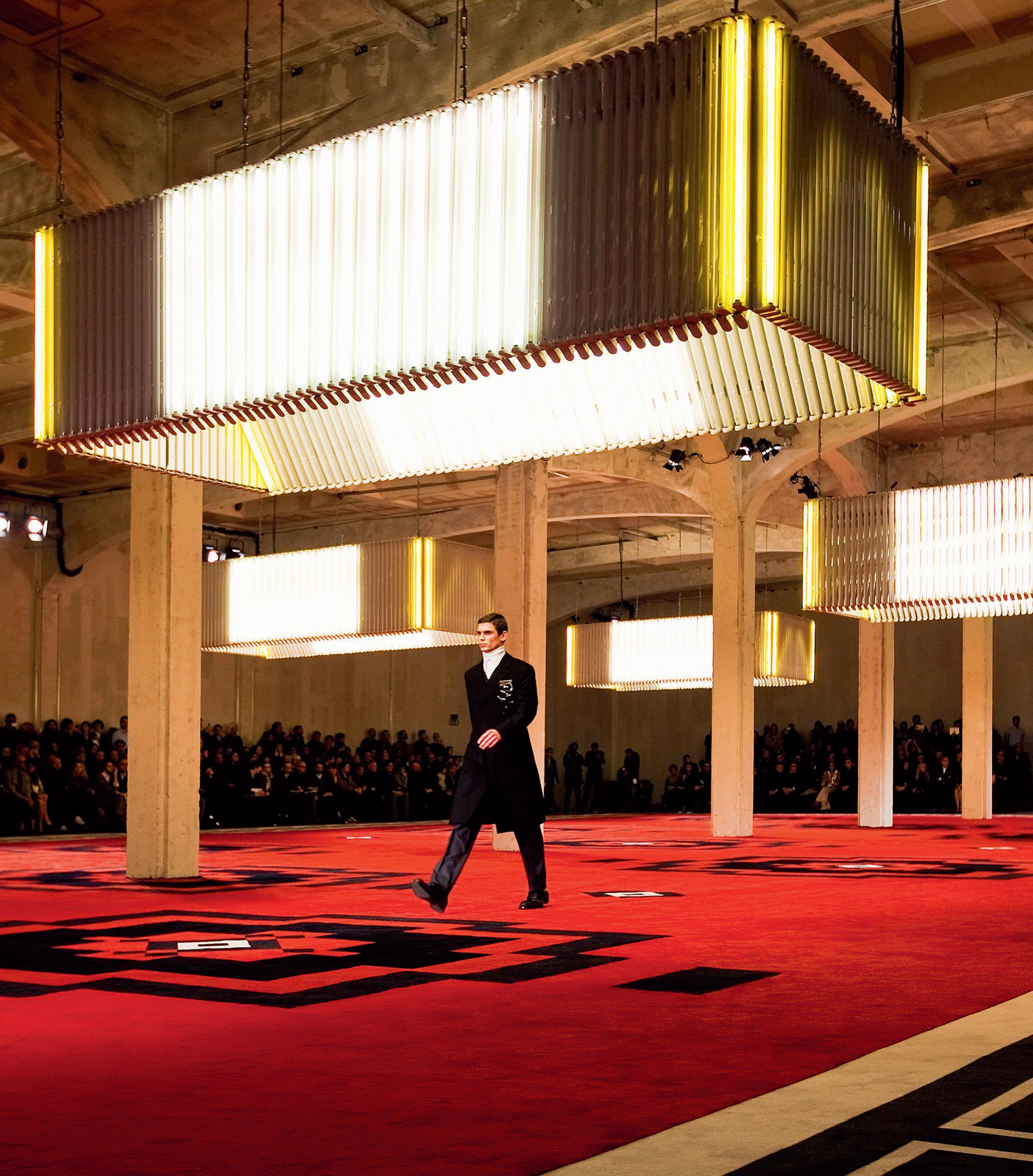
600 cubos de espuma azul crean una retícula uniforme de asientos donde se distribuye el público, de manera que se multiplican los recorridos del desfile y se transforma el punto de vista del espectador.
600 cubes of blue foam create a uniform grid of seats where the audience watches the fashion show, multiplying the runway paths and transforming the point of view of spectators.
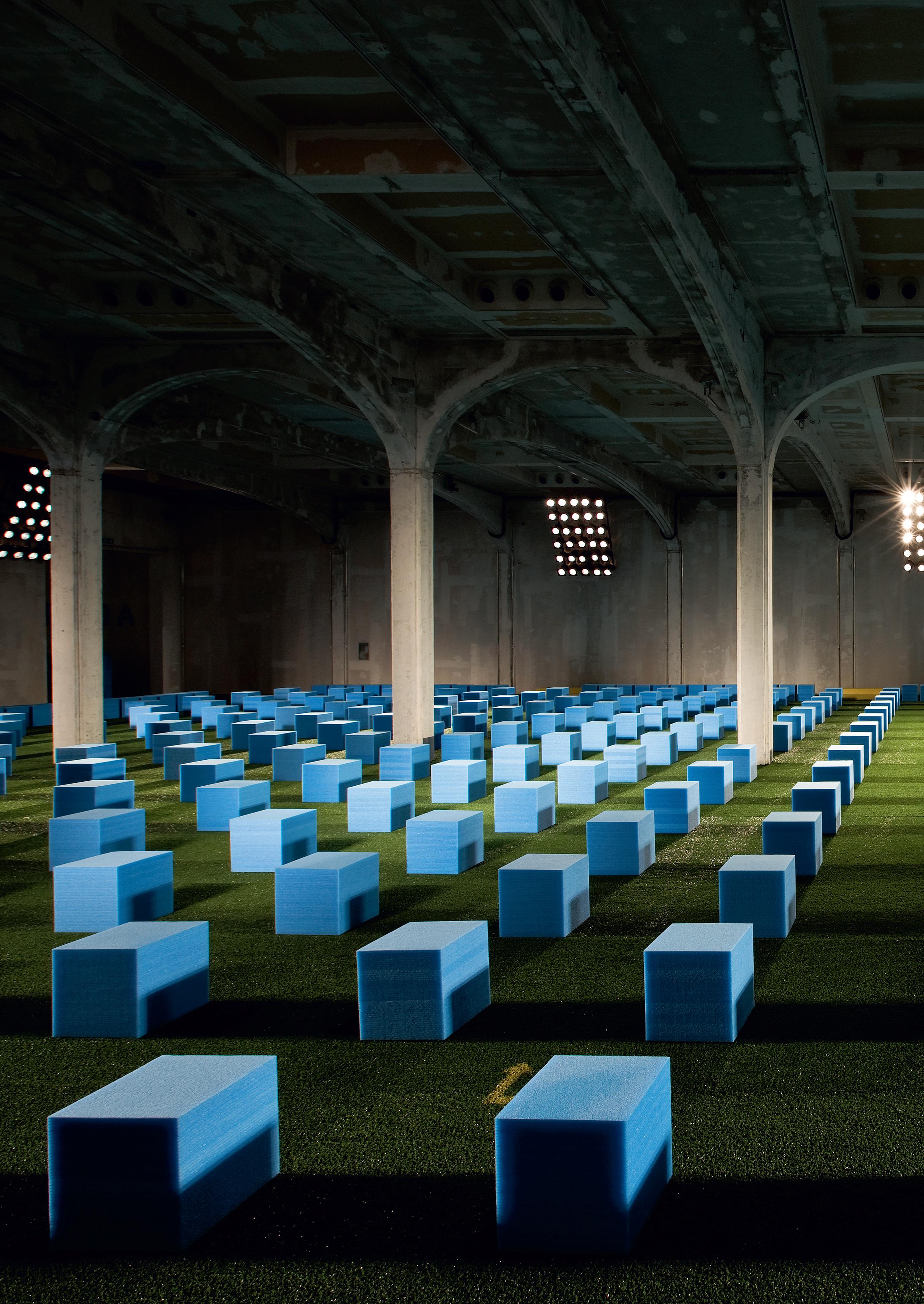 Prada Spring/Summer 2012 Men’s Show. © Agostino Osio
Prada Spring/Summer 2012 Men’s Show. © Agostino Osio

© Fernando Alda

Dekton Heights
Leonardo Tower by Co-Arc in JohannesburgArquitectos Architects: Co-Arc International Architects Colaboradores Collaborators: Legacy Development, Aveng Grinaker, Arup, SM Schneid, Ritchie Midgley, WIN Consulting Engineers, MNS, Wat-Sol Design Technology, Special Fire Technology Rational Designs, Landmark Studios, Linspace, Cairnmead
Con 234 metros de altura, la torre Leonardo es el edificio más alto de África. Situado en Sandton, un suburbio en la zona norte de Johannesburgo, el volumen de 55 alturas, diseñado por el equipo internacional Co-Arc, se ha convertido en un símbolo de la ciudad visible desde la distancia.
Inicialmente, estaba previsto que la fachada fuera totalmente acristalada, pero después se optó por una solución más ecológica, con un mejor rendimiento energético, que transmitiese una imagen de solidez. Una piel de 25.000 m2 de superficie Dekton Gada reviste una primera capa de vidrio, de manera que se añade profundidad a los alzados, se regula la incidencia del sol y se enmarcan los diferentes huecos. Este producto se compone de una mezcla de doce materias primas sometidas a un proceso de alta tecnología equivalente al cambio metamórfico que experimentaría una piedra natural durante miles de años, por lo que se trata de una superficie ultracompacta y resistente. Además, la posibilidad de alcanzar espesores de tan sólo 8 mm hace que se reduzca significativamente el peso total respecto a otras opciones como el mármol o el granito, lo que convierte a Dekton en una opción idónea para un edificio de gran altura.
Elevada sobre un podio comercial, la torre alberga oficinas, viviendas y un hotel. En el interior, diferentes tipos de Silestone se utilizan en cocinas, baños, restaurantes y gimnasios; mientras que 500 m2 de la superficie Dekton Keon revisten el suelo.
With 234 meters in height, Leonardo Tower is the tallest building in Africa. Located in Sandton, a suburb in the northern area of Johannesburg, the volume of 55 heights, designed by the international team Co-Arc, has become a city landmark that can be seen from afar.
Initially the facade was going to be completely glazed, but later the design shifted towards a more ecological option, more energy efficient, which would transmit an image of solidity. A skin of 25.000 square meters of Dekton Gada surface clads a first layer of glass. This system adds depth, controls sunlight, and frames the different openings. This product is constructed from a combination of twelve raw materials treated with a high-technology process equivalent to the metamorphic change that natural stone would undergo after thousands of years, so it is an ultracompact and resistant surface. Besides, the possibility of reaching thicknesses of just 8 millimeters significantly reduces the total weight with regards to other options like marble and granite, which turns Dekton into an ideal option for high-rise construction.
Built on a podium containing commercial facilities, the tower accommodates offices, housing, and a hotel. Inside, the different types of Silestone are used in kitchens, bathrooms, restaurants, and gymnasiums, while 500 square meters of Dekton Keon clad the floor surfaces.

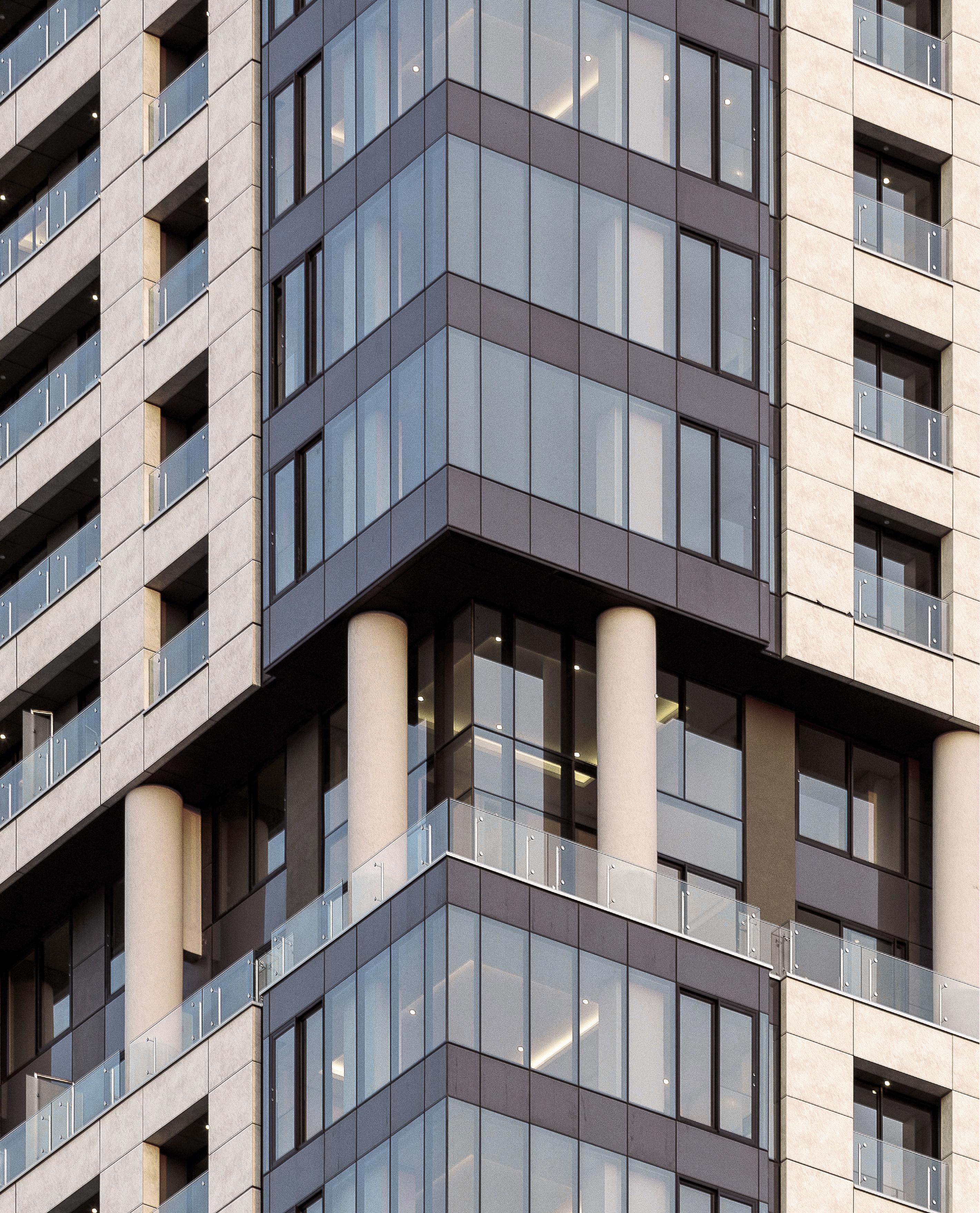
Gracias a sus ajustados espesores, que alcanzan 8 mm, la superficies Dekton son una opción idónea para edificios en altura, ya que se reduce el peso, manteniendo la capacidad resistente y la imagen de solidez.
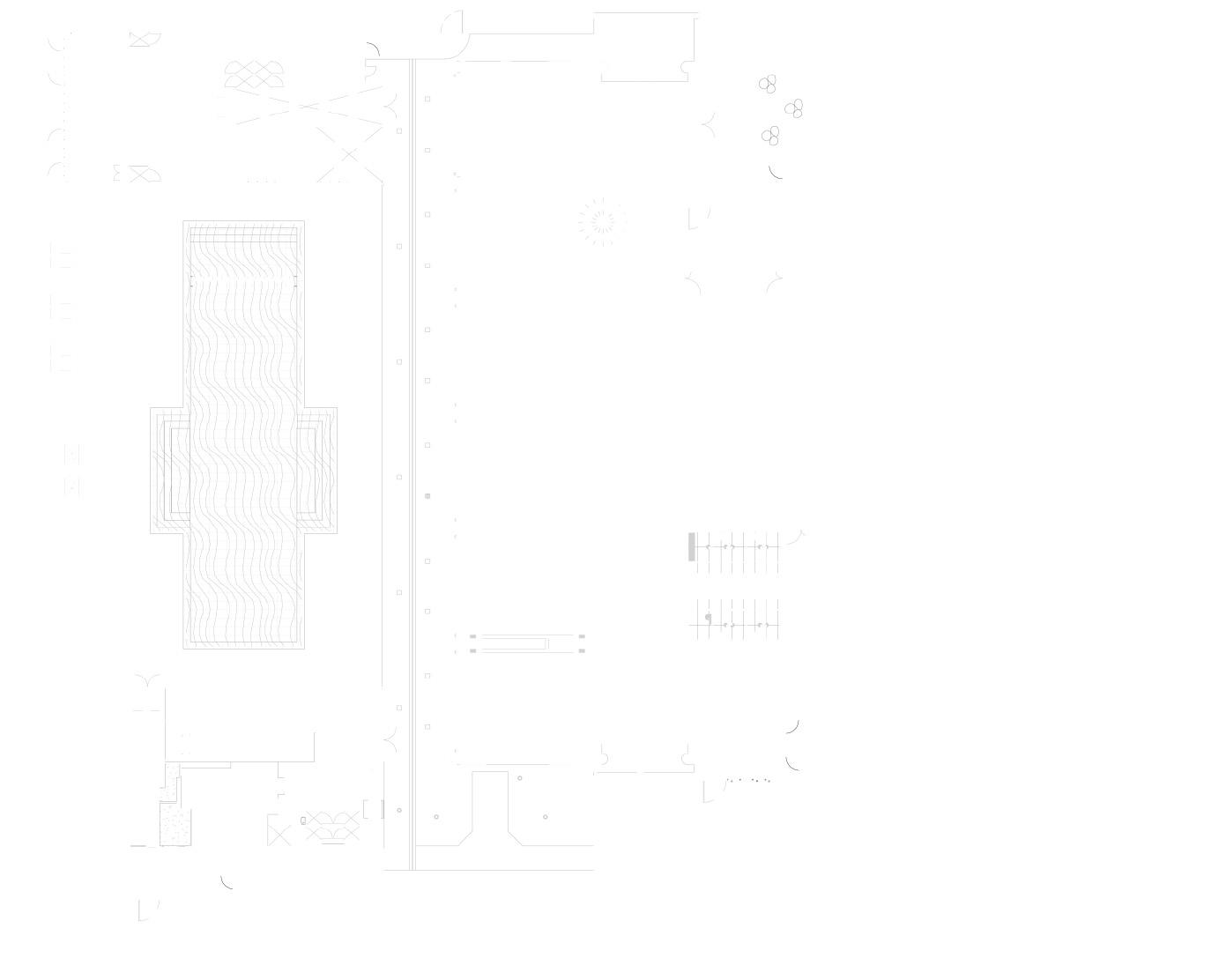

Because of their reduced thickness, reaching just 8 mm, Dekton surfaces are an ideal option for high-rise buildings, because weight is reduced to a maximum while maintaining resistance and stability.

Sobre un podio que contiene aparcamientos, comercios y servicios, se elevan 55 niveles que albergan un hotel, oficinas y apartamentos, equipados con diferentes tipos de Silestone en cocinas, vestíbulos y baños.

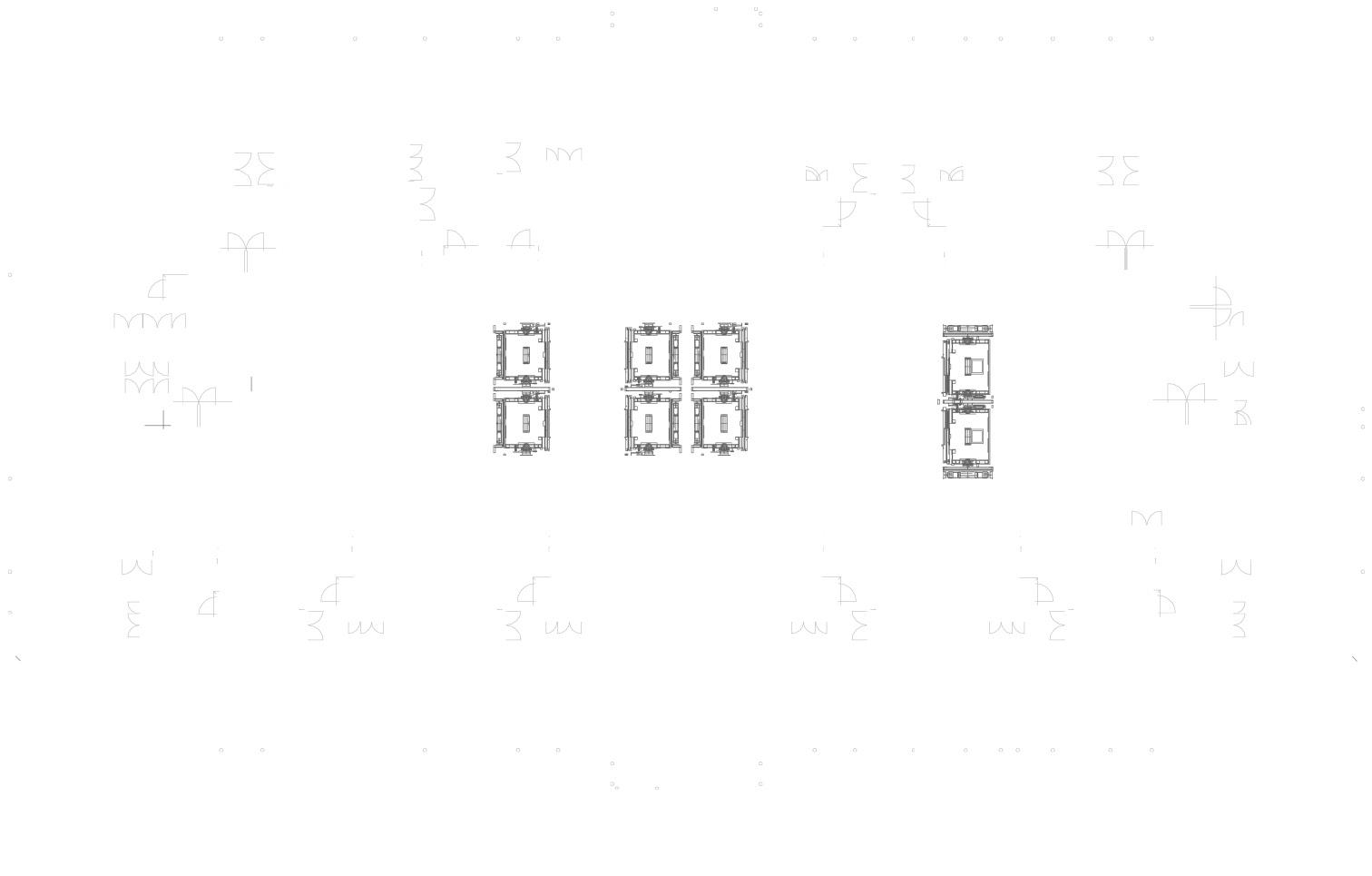
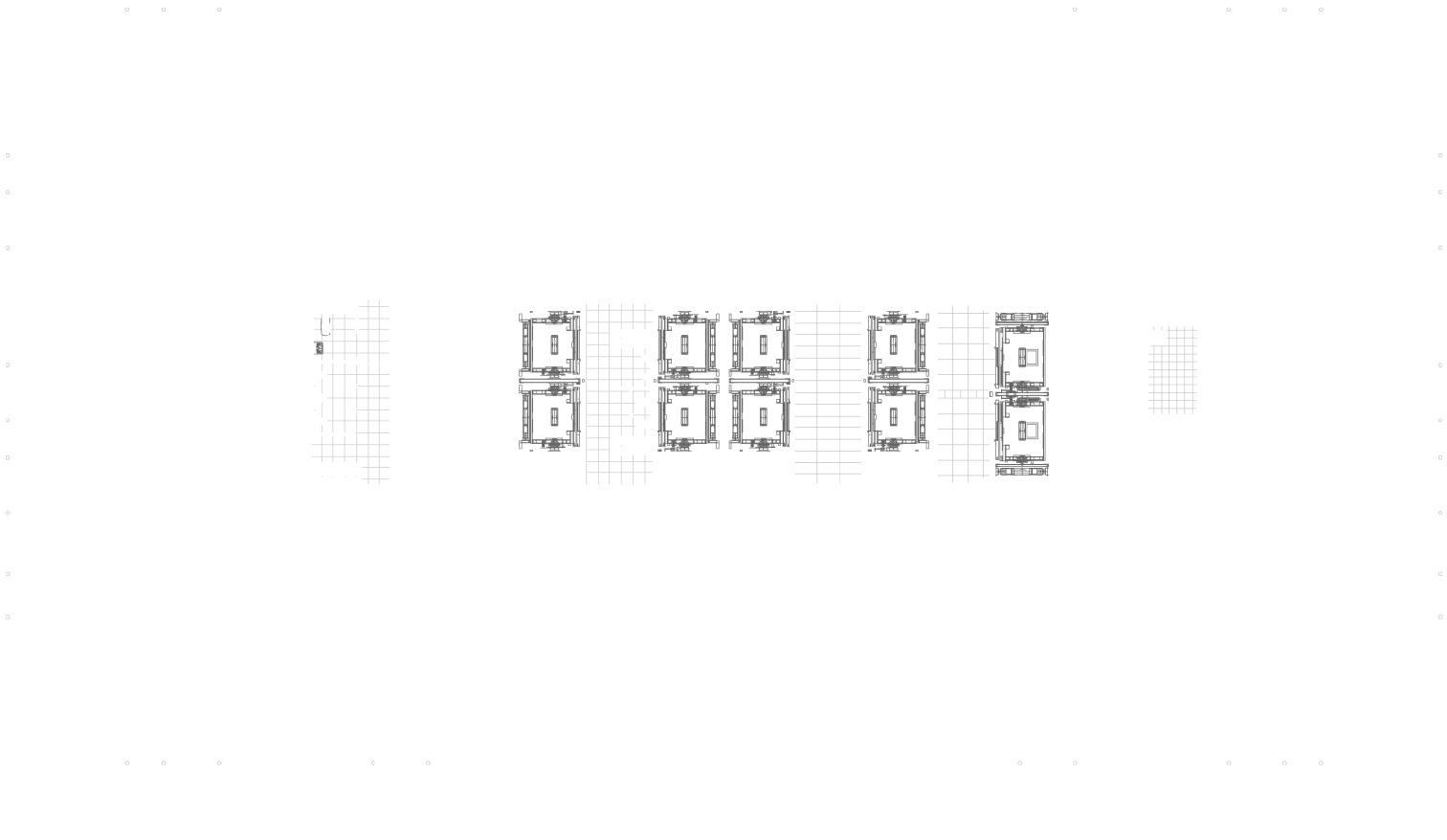
On top of a commercial podium that contains parking, shops, and services rise the 55 floors with a hotel, offices, and apartments, fit out with different types of Silestone in kitchens, lobbies, and bathrooms.
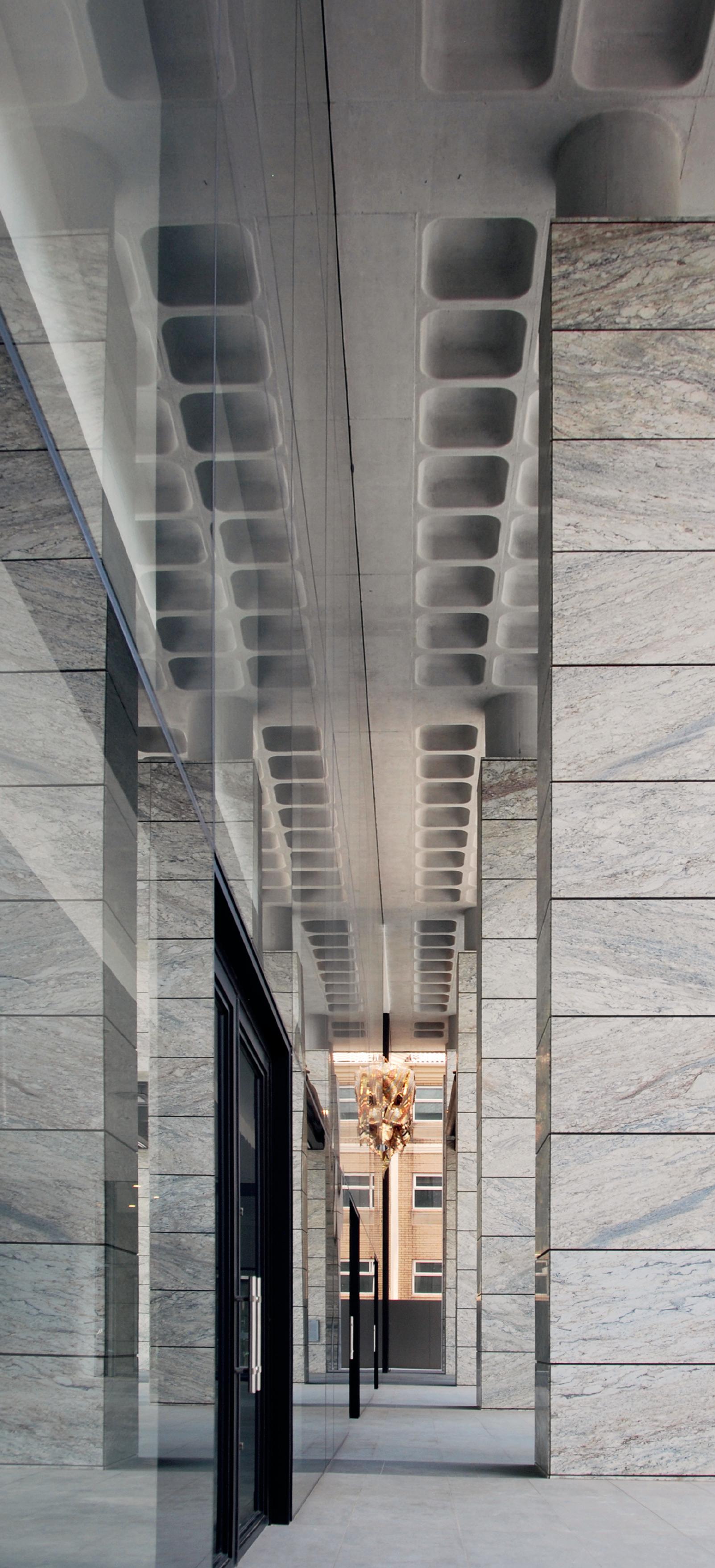

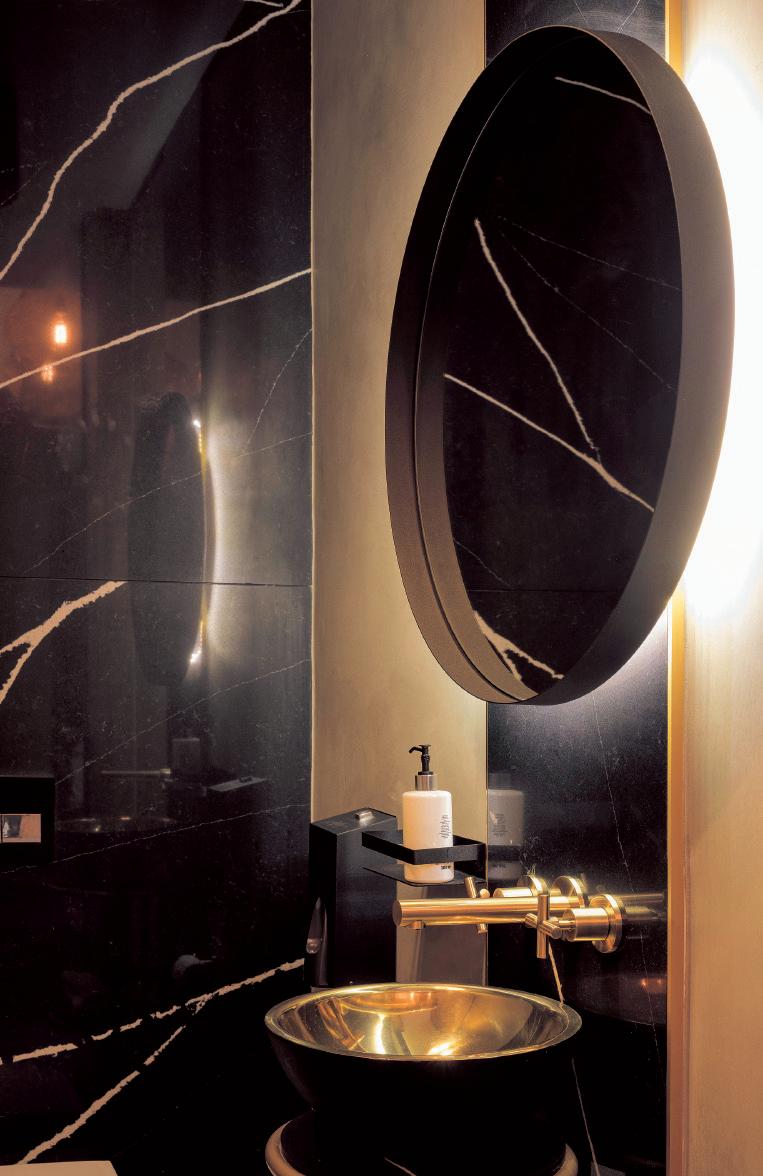
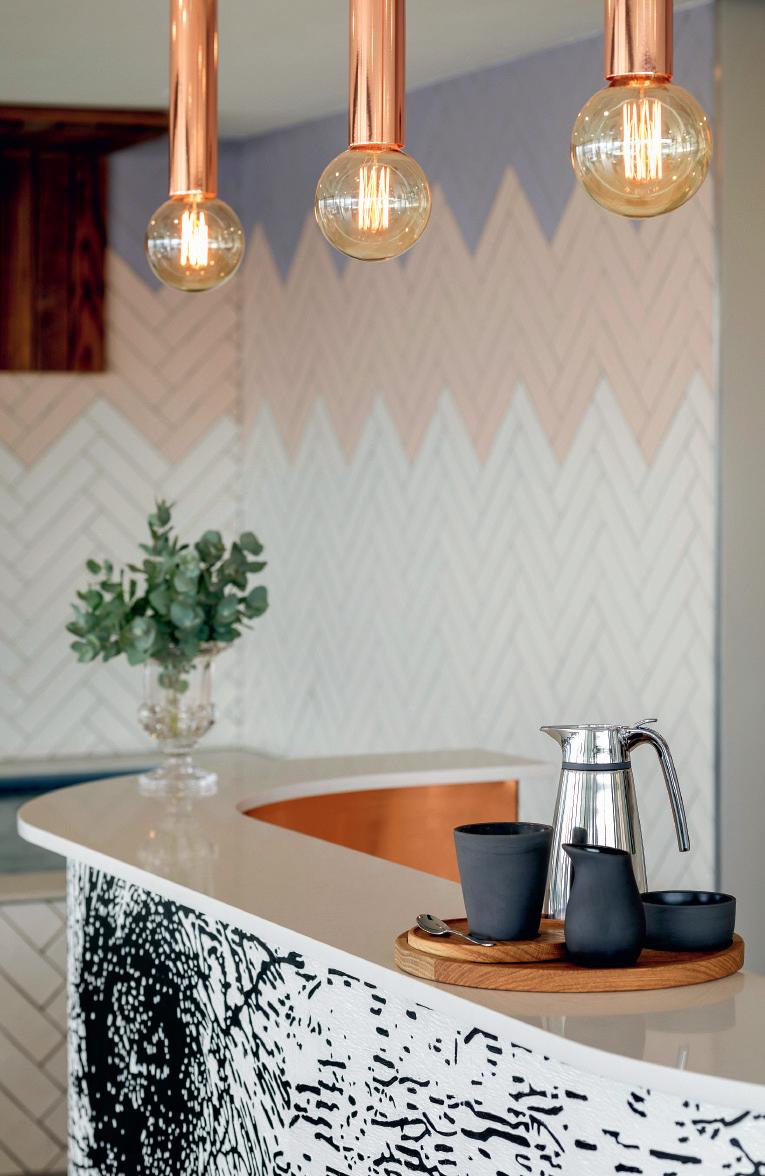


En el exterior, un total de 25.000 m2 de superficie ultracompacta Dekton Gada reviste la fachada de la torre Leonardo, mientras que en el interior se utiliza el modelo antideslizante Dekton Keon para suelos.






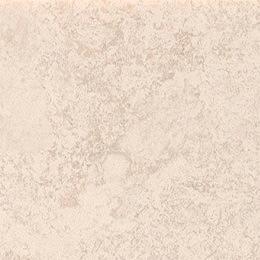
A total of 25,000 square meters of ultracompact Dekton Gada surface were used for the tower’s external cladding, while the non-slip surface Dekton Keon was chosen to cover the floors.

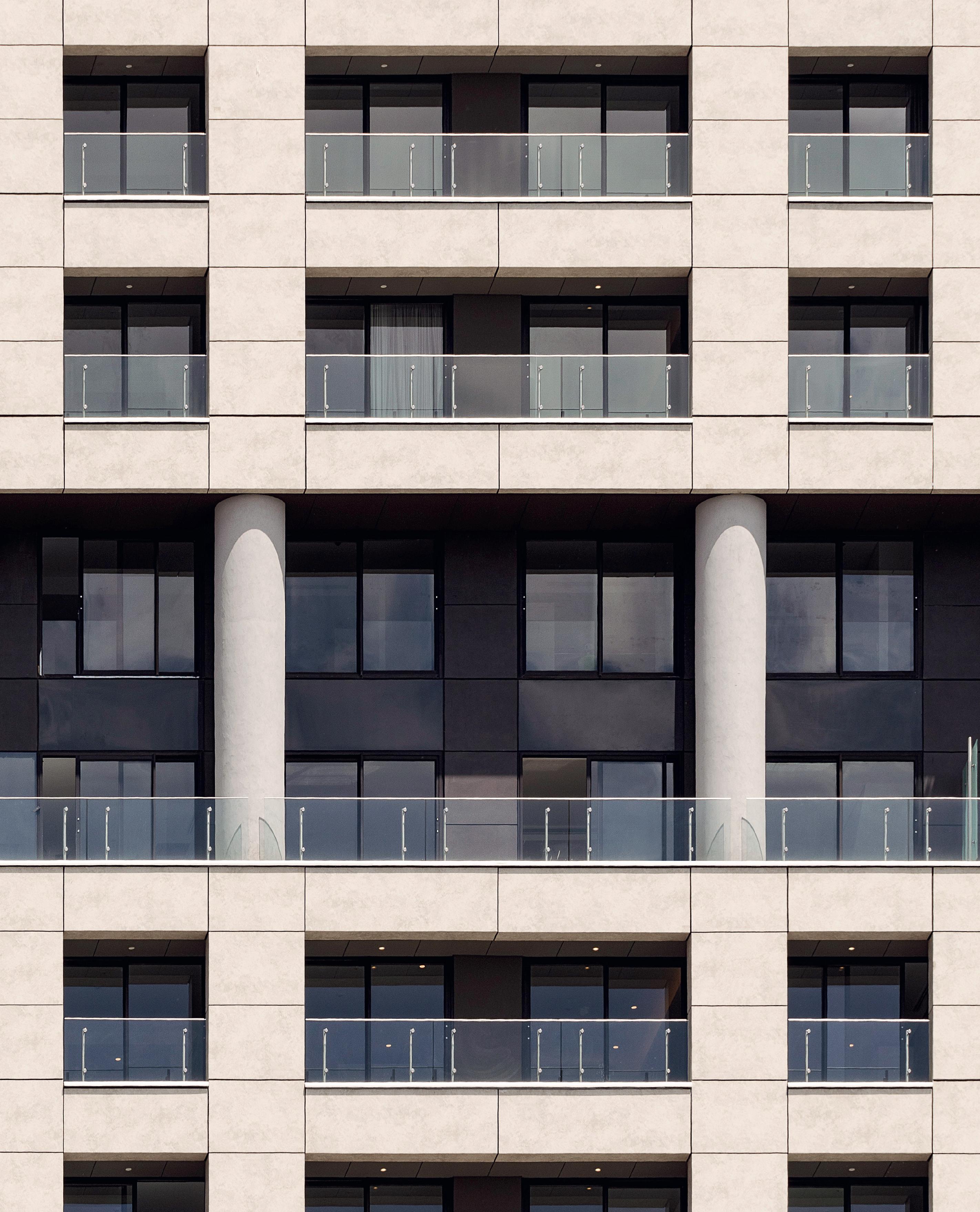
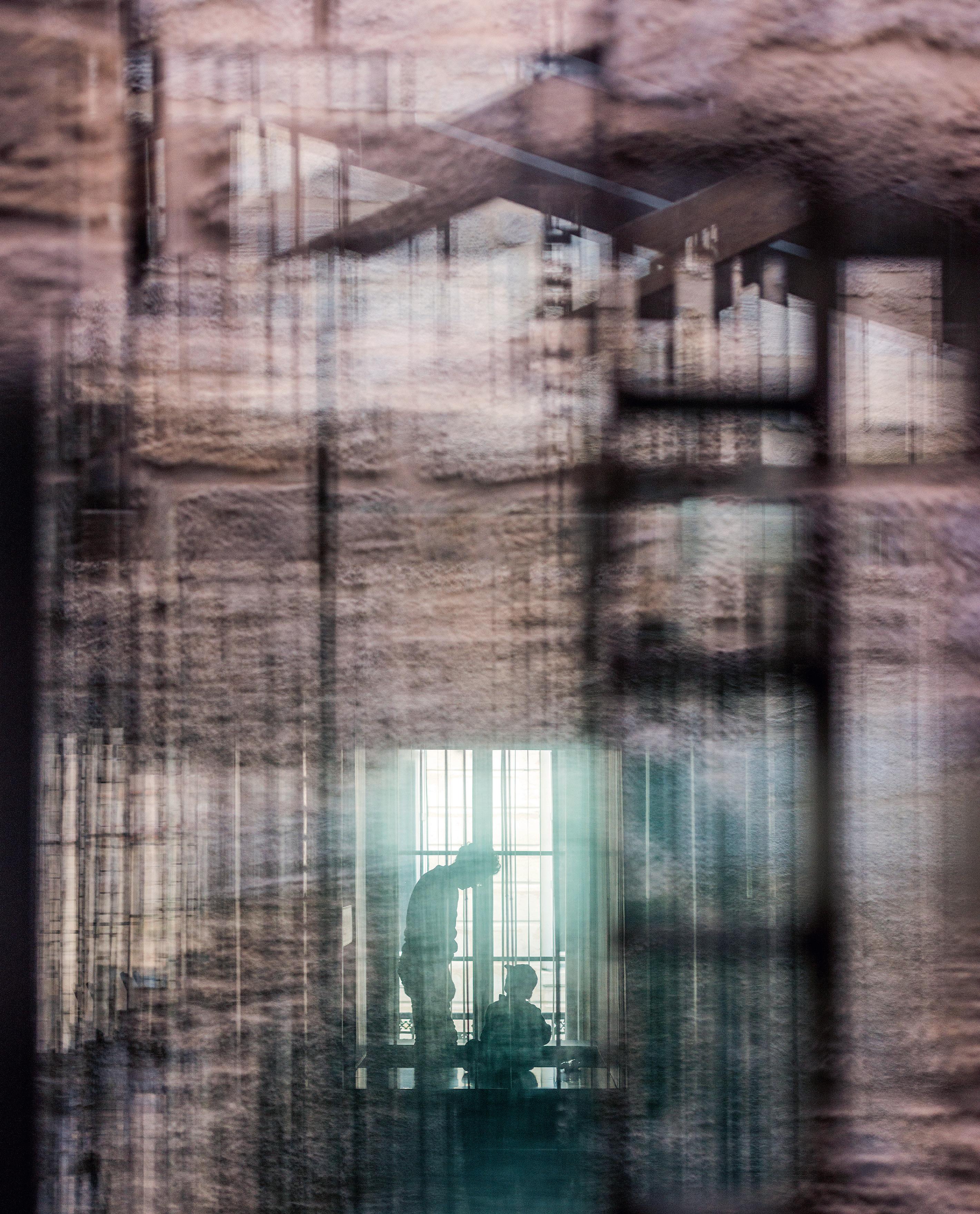
RCR Artotec in Bordeaux
Brazil Cuisine
Dekton Clads Pipo Restaurant in São Paulo

Situado en la ciudad de Burdeos, el proyecto consiste en la renovación de un antiguo almacén con espacios abovedados que funcionaban como bodegas para el acopio de pescado y víveres. La actuación pretende revitalizar la actividad de la zona aprovechando su céntrica localización y la existencia de un acogedor jardín que linda con la propiedad. Por ello, se plantea su reconversión en un edificio de usos mixtos en el que conviven una galería de exposiciones, un taller de arquitectura y la vivienda de uno de los integrantes del estudio. La separación de lo público y lo privado define la actuación, repartiendo los usos en vertical y fragmentando el espacio transversalmente. Las bodegas del sótano se destinan a salas de exposición, mientras que el nivel de calle alberga el atelier y la planta superior, con una cubierta abuhardillada, la vivienda. El tejado, fragmentado por patios de luz, crea un orden de bandas que organizan los usos y las comunicaciones. Esta sucesión de capas acristaladas crea una imagen etérea que disuelve los límites de las estancias. En la última de ellas, que contiene un programa compartido —la sala central de exposiciones y una biblioteca—, la altura de los forjados varía para incrementar su continuidad con respecto al resto de las estancias.
Located in the city of Bordeaux, the project renovates an old warehouse with vaulted spaces that were once cellars for storing fish and supplies. The intervention seeks to reactivate the area by making the most of its central location and the existence of a cozy garden adjacent to the property. The construction is reconverted into a mixed-use building that includes an exhibition gallery, a workshop, and the home of one of the studio’s members. The separation of public and private defines the intervention, organizing the uses vertically and dividing the space transversally. The basement storage spaces are transformed into exhibition halls, the street level houses the architecture studio, and the upper floor, with a characteristic sloping wooden ceiling, contains the dwelling spaces. The roof, fragmented by skylights and courtyards, creates a series of transversal bands that organize the different uses and circulation elements. These layers of glass create an ethereal image that blurs the limits between rooms. In the last one of these, which combines the main exhibition hall and a large library, the height of the slabs varies so that they are in greater continuity with the other rooms.
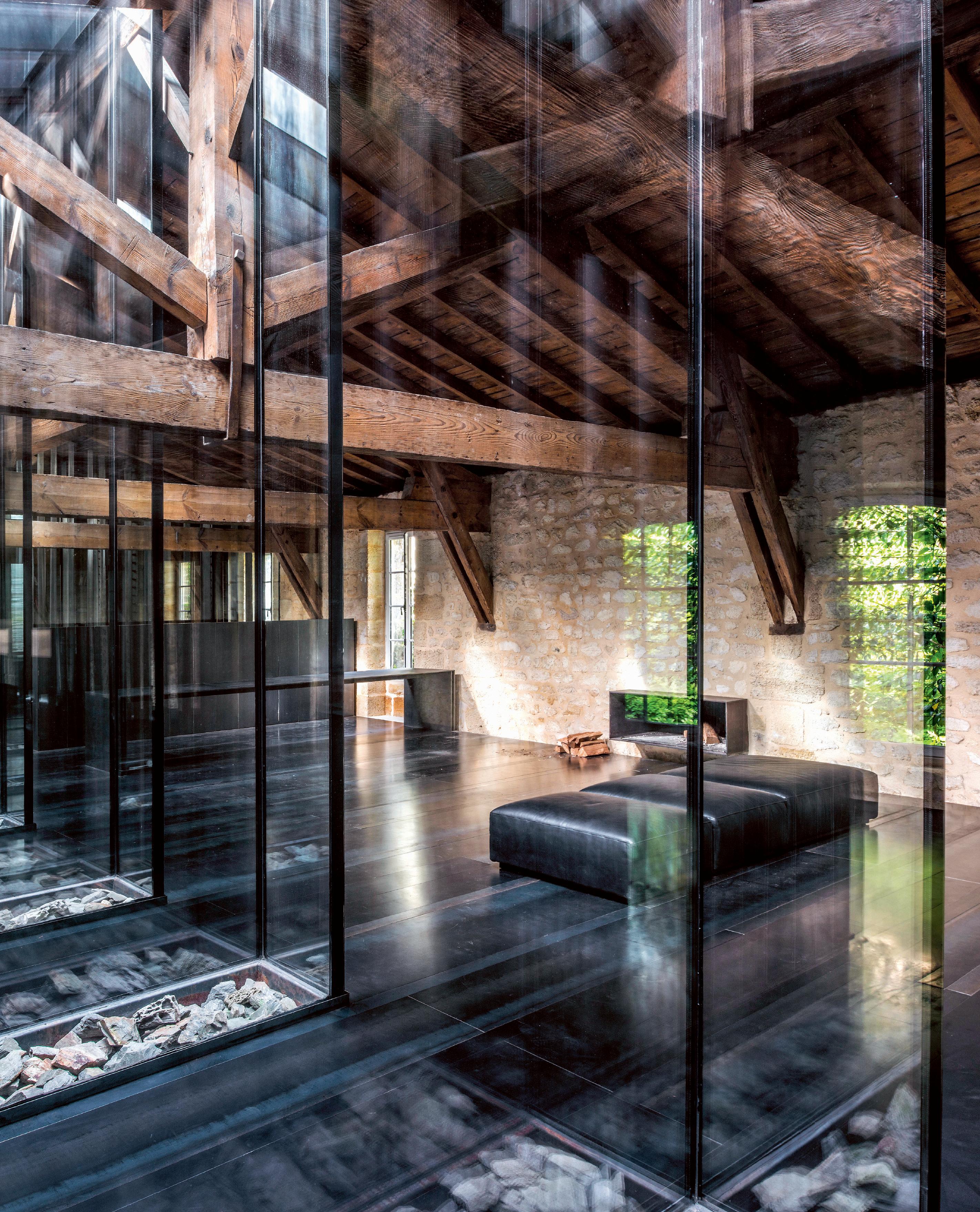
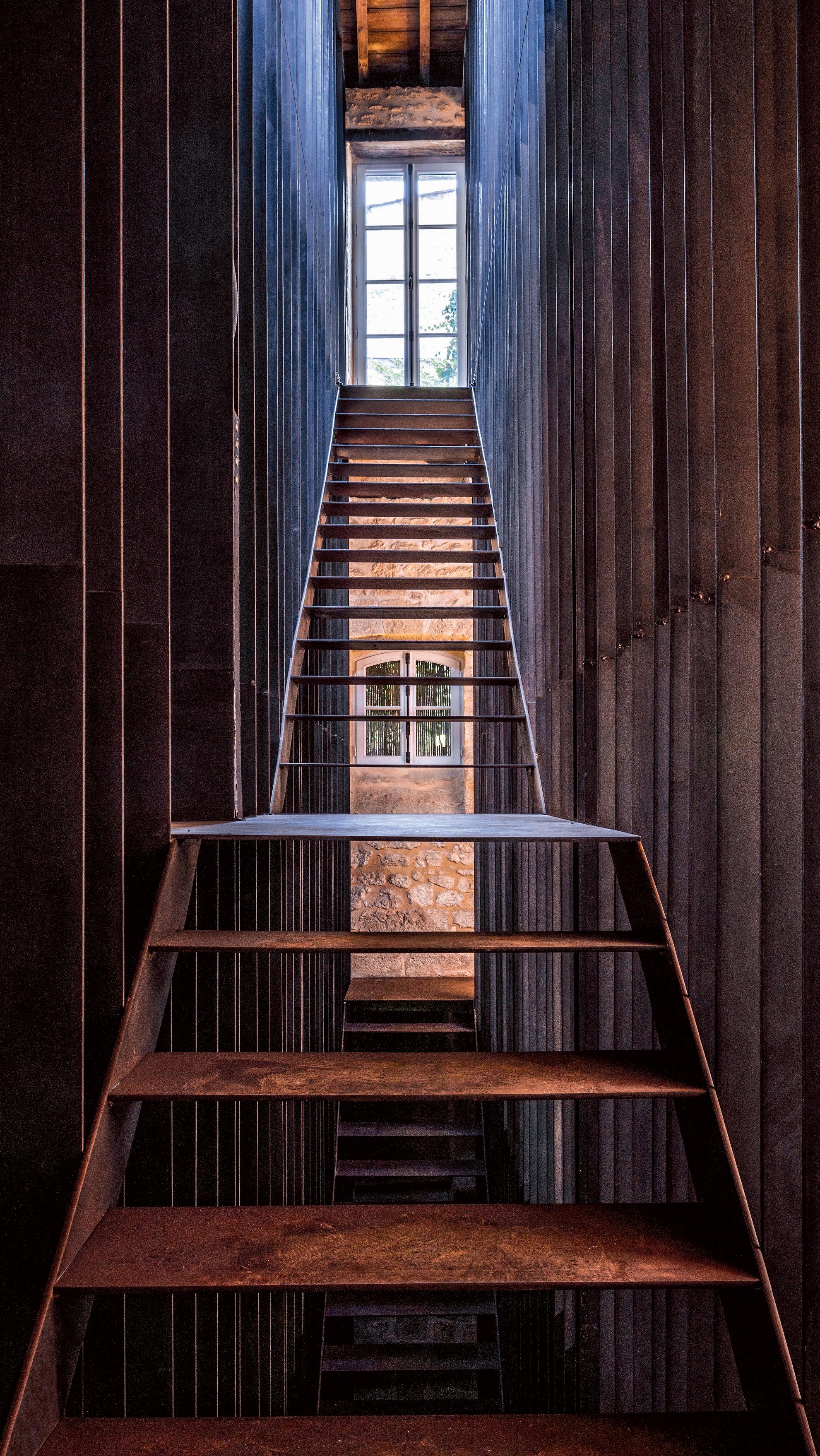
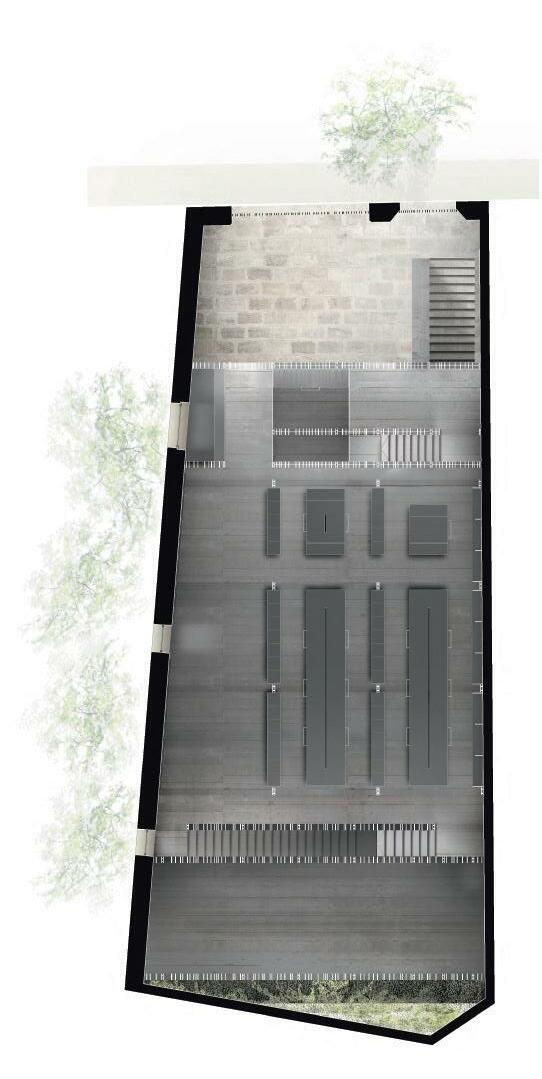

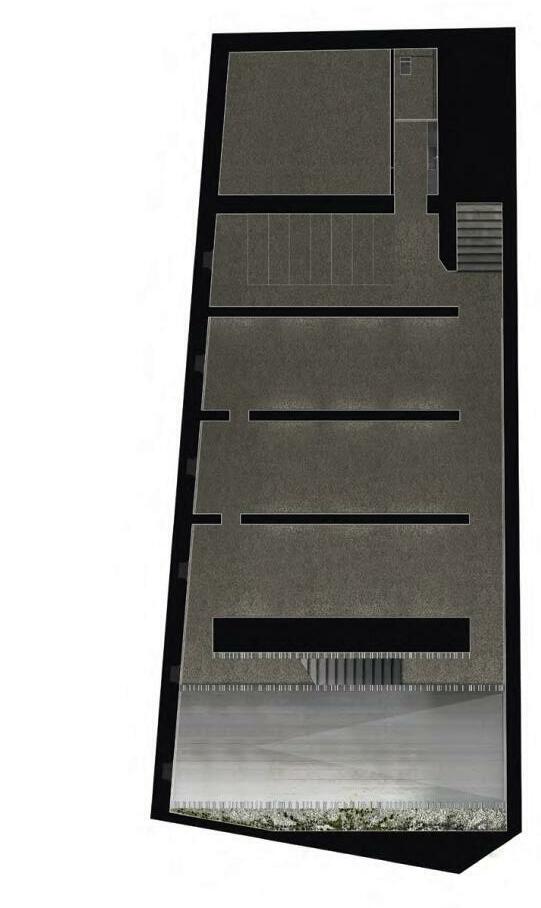
A través de una sucesión de patios acristalados, la luz penetra en el edificio y protagoniza la renovación de este antiguo almacén que acoge ahora una vivienda, un taller de arquitectura y una galería de arte abierta al público.

Light enters the building through a series of glazed courtyards, and becomes a key element in the renewal of this old warehouse that now contains a residence, an architecture studio, and a public exhibition gallery.



Dentro del Museo de Imagen y Sonido de São Paulo (MIS), el restaurante Pipo ofrece una experiencia gastronómica en la que los clientes pueden disfrutar del proceso de elaboración y emplatado del menú diseñado por el eminente chef Felipe Bronze, premiado con dos estrellas Michelin. Las arquitectas Renata Castilho y Camila Buciani, de RCB Arquitetura, fueron las encargadas de proyectar este espacio diáfano, vinculado a la naturaleza, la luz natural y la brisa fresca. Tanto la superficie de trabajo de la parrilla como la pared principal se revisten con Dekton Orix, una tonalidad que pertenece a la colección ‘industrial’ y que aporta una imagen neutra, en contraste con la decoración colorista firmada por el artista TOZ. Siguiendo esta misma línea, las mesas y encimeras utilizan el modelo Dekton Nilium, que reproduce una textura natural salpicada por puntos metálicos dorados y grises. La resistencia de este material a los rayos ultravioleta hace que se pueda utilizar también en la terraza, lo que genera una estética homogénea y disuelve el límite entre el interior y el exterior. Con este mismo objetivo, el área principal se cierra con puertas permeables de listones de madera diseñadas específicamente para este proyecto.
Located in the Museum of Image and Sound (MIS) of São Paulo, Pipo Restaurant offers a gastronomic experience during which the clients can follow and enjoy the preparation and plate presentation process of the menu designed by famed chef Felipe Bronze, distinguished with two Michelin stars. The architects Renata Castilho and Camila Buciani, of the São Paulo-based studio RCB Arquitetura, were commissioned to design this open-plan space, connected with nature, sunlight, and the fresh breeze. Both the countertops of the grill area and the main wall are clad with Dekton Orix, a tone included in the ‘industrial’ collection and that gives a neutral image, in contrast with the colorist decoration signed by the artist TOZ. Along the same line, the walls and countertops are covered with Dekton Nilium, which reproduces a natural texture scattered with golden and gray metallic dots. This material is highly resistant to UV light, so it can also be used on the terrace, creating a uniform aesthetic and blurring the boundaries between indoor and outdoor spaces. Following this same aim, the main space is enclosed with permeable doors of timber strips designed specifically for this project.


El restaurante Pipo incorpora 138 m² de materiales de Cosentino: Dekton Nilium en las encimeras, Dekton Orix en las superficies de trabajo y la pared principal, y Silestone Blanco Capri en el baño.


The design for Pipo Restaurant includes 138 m² of Cosentino materials: Dekton Nilium on tables and countertops, Dekton Oriz on worktops and main wall, and Silestone Blanco Capri for bathrooms.

 Dekton Orix
Dekton Nilium
Silestone Blanco Capri
Dekton Orix
Dekton Nilium
Silestone Blanco Capri
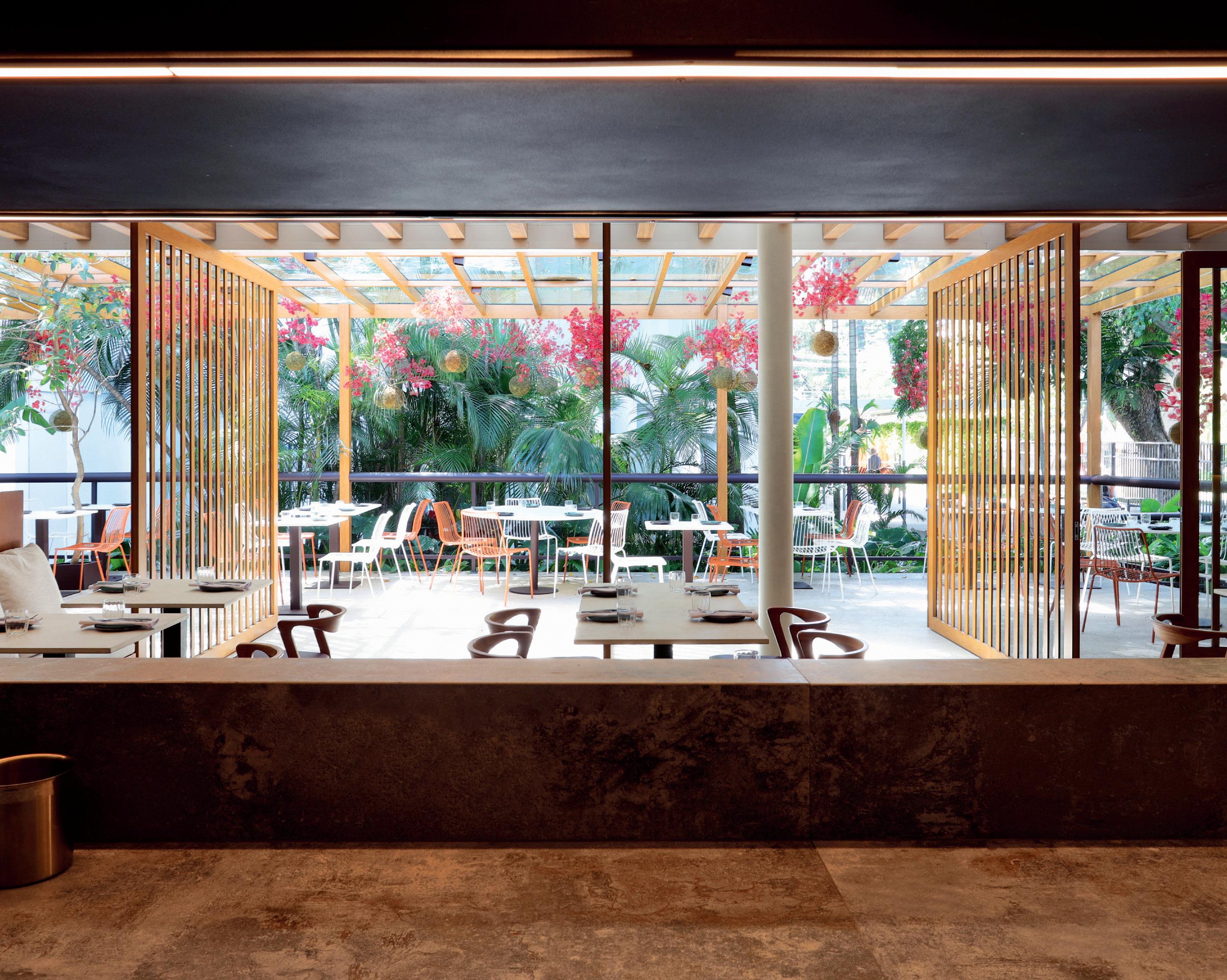
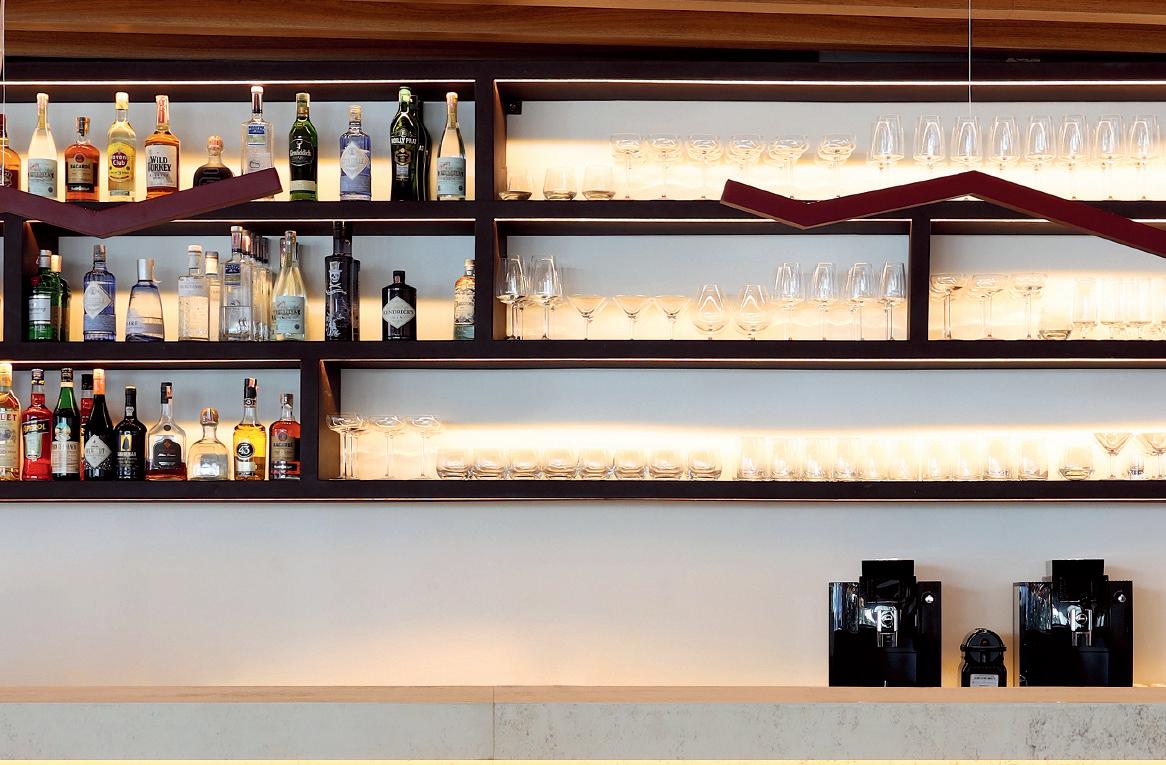

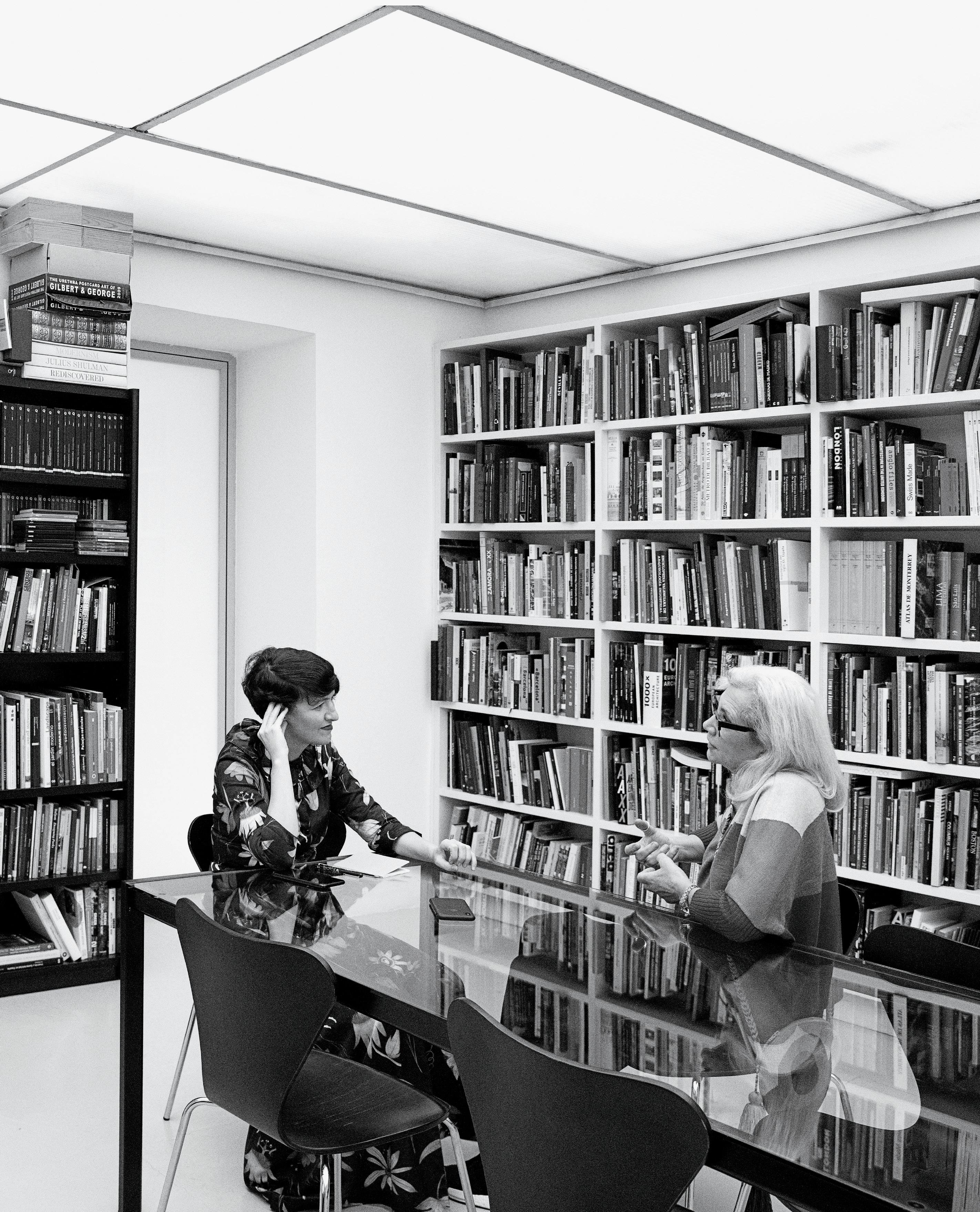 © Miguel Fernández-Galiano
© Miguel Fernández-Galiano
Pinós & Chinchilla
In Dialogue

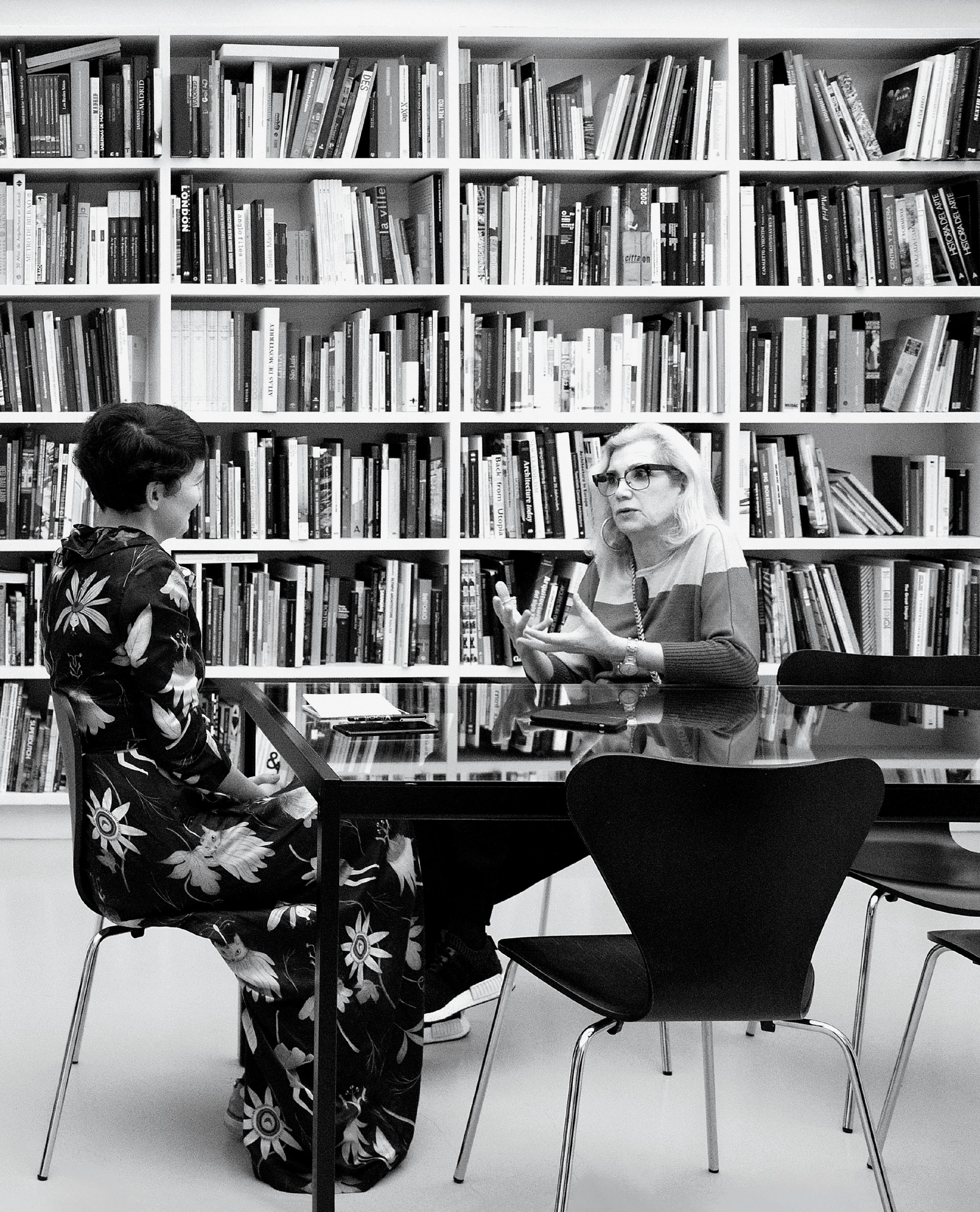
Carme Pinós e Izaskun Chinchilla abordan temas como la arquitectura, la crisis ecológica y la futura exposición de Pinós en el Museo ICO, pero en su conversación aflora un tema al que dedican especial insistencia, la cuestión del género, que es el que, al cabo, recogemos a continuación.
Izaskun Chinchilla: Podemos, si te parece, empezar reflexionando juntas sobre cómo afecta la perspectiva de género a la arquitectura. Te lo pregunto porque no todo el mundo se siente igual de cómodo con este tema.
Carme Pinós: Sí, tengo cosas que decir, y por varias razones, empezando por el hecho de que, cuando se profundiza en la historia, una se da cuenta de que está contada desde un punto de vista muy masculino...
IC: Es cierto: la historia ha sido violencia y fuerza, pero también han ocurrido otras muchas cosas que no forman parte de la historia oficial, ¿no?
CP: Por supuesto que sí. Creo que hemos avanzado mucho y, en este sentido, pienso que cuando el ser humano se hizo sedentario, la divinidad —antes representada por la diosa madre— pasó a tutelar la guerra y, con ello, nació el concepto de patrimonio, el patriarcado. Se dio la vuelta al sistema: el
matriarcado dejó paso a un sistema basado en la sucesión del patrimonio conquistado a través de la violencia, y esto fue así a pesar de que, en último término, sólo la mujer sabía con certeza quién era el padre de su hijo. Como las mujeres quedaban al margen de la guerra, del mundo sostenido en la fuerza, nuestro género fue relegado. Y el resultado, previsible, es que la historia de la humanidad está escrita por los hombres.
Las arquitectas Carme Pinós (1954) e Izaskun Chinchilla (1975) se encuentran en las oficinas de Arquitectura Viva en Madrid para discutir sobre el papel de la mujer en la historia y en la arquitectura.
Architects Carme Pinós (1954) and Izaskun Chinchilla (1975) meet at the offices of the Madrid-based magazine Arquitectura Viva to talk about the role of women in history and in architecture.

Cuando digo que, pese a esta situación de partida, hemos mejorado mucho me refiero al hecho de que ahora la guerra, la violencia, el ejercicio de la fuerza que han sustentado tradicionalmente el patriarcado, ya no ocupa la posición absoluta que ocupaba antes. A ello han contribuido factores de emancipación femenina tan importantes como la liberación sexual, el control de la natalidad o la llegada de las mujeres a puestos sociales de importan-
cia. Todo esto es un gran paso, pero es sólo el primero. Después hay que dar otros, que tienen que ver con que el hombre se involucre más para que la mujer pueda incorporarse de pleno a la gestión del mundo, o con el mero hecho de que este mundo necesita sin más a las mujeres. El mundo necesita a las mujeres porque nosotras somos menos prepotentes, hemos desarrollado más la capacidad de escucha y empatía, probablemente porque llevamos milenios atendiendo y cuidando a los demás, cosas que a los hombres les cuestan mucho. En las sociedades tradicionales, la mujer escuchaba sin poder actuar; intentaba comprender: si un hijo se convertía en asesino, el hombre lo desheredaba, lo rechazaba como hijo, pero la mujer lo seguía considerando como un fruto de su misma sangre.
El mundo está formado por muchas cosas, muchas cosas contaminadas, y esta actitud que, por imposición del patriarcado, tuvieron que hacer suya las mujeres, presenta su lado positivo. En mi arquitectura, por ejemplo, trato de que siempre se dé un diálogo entre dos o tres elementos, que el proceso no consista simplemente en la imposición de un solo discurso. Estoy segura de que esta actitud tiene que ver, en parte, con mi condición de mujer.
«En mi arquitectura, trato de que siempre se dé un diálogo, que el proceso no consista en la imposición de un discurso»
Carme Pinós and Izaskun Chinchilla broach issues like architecture, the ecological crisis and the future exhibition on the work of Pinós at the Museo ICO, but in their conversation the gender issue comes up insistently, and that is the part we are recording here.
Izaskun Chinchilla: To start, and if you agree, let’s reflect together on how the gender factor affects architecture. I am asking first because not everyone feels comfortable discussing this issue.
Carme Pinós: Yes, I have things to say, and for several reasons, because the more you delve into history, the more you realize that it is told from a very male point of view.
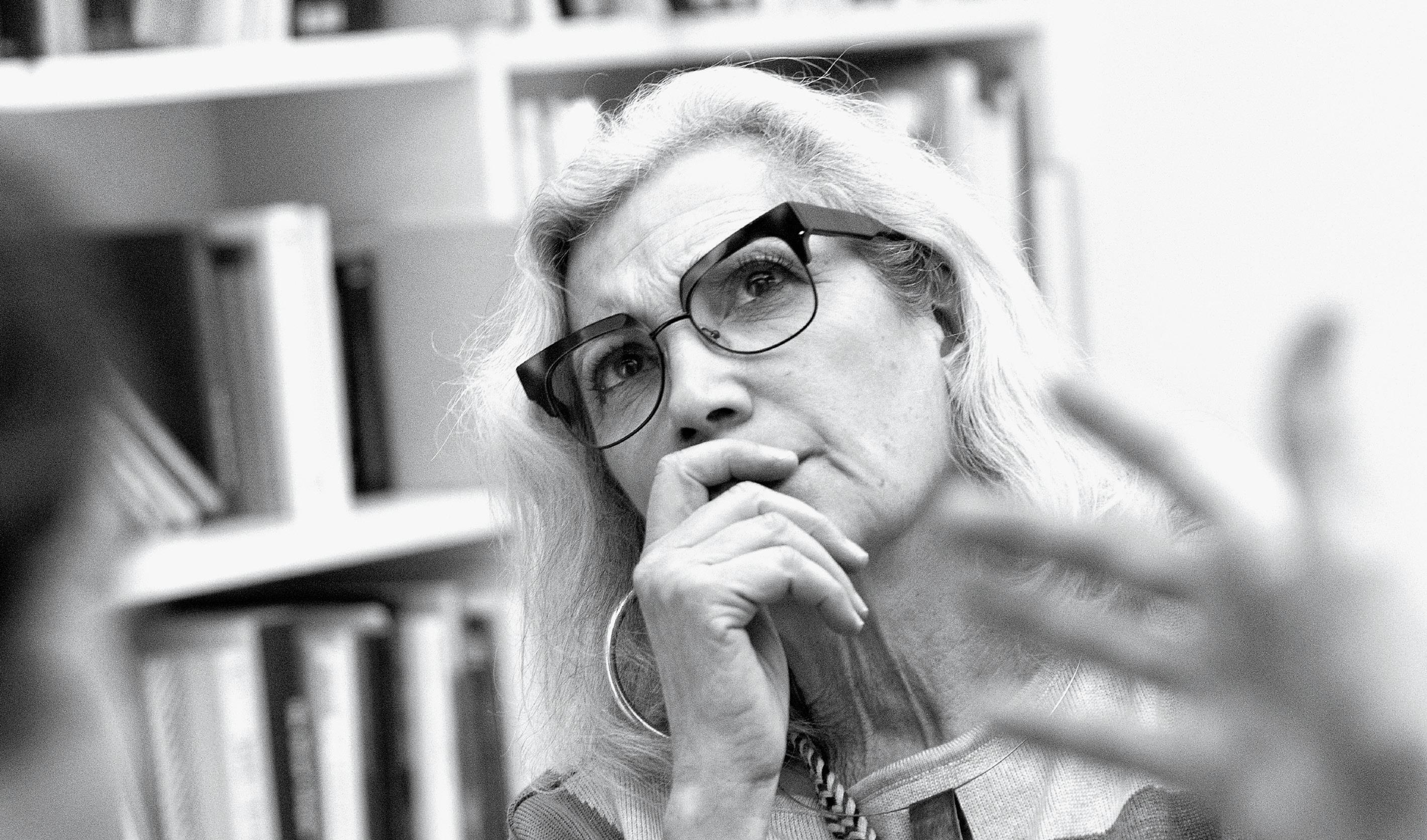
IC: It’s true: history has been violence and strength, but many of the other things that have happened are not part of the official history, right?
CP: Yes of course. I think we have made great progress and, in this sense, I believe that when humans became sedentary, divinity – previously represented by the mother goddess – went on to become the god of war, and this gave birth to the concept of heritage, of patriarchy. The system was turned around: matriarchy gave way to a system based on the succession of heritage conquered through violence, and this was so despite the fact that, ultimately only the woman knew for certain who her son’s father was.
As women were left out of war, of a world sustained by force, our gender was relegated, and the foreseeable result is that the history of humanity is written by men. When I say that, in spite of this starting point, we have improved a lot, I refer to the fact that now war, violence, and the use of force that have traditionally sustained patriarchy do not oc-
listened without being able to act; she tried to understand; if a son became a murderer, the father disinherited him, rejected him as son, but a woman would still consider that son her flesh and blood.
cupy the absolute position they had before. Different aspects of women’s emancipation have contributed to this, such as sexual freedom, birth control or the rise of women to prominent social positions. This is a big step, but it is only the first. Other actions must be taken, like making men get more involved so that women can step fully into world management, or simply acknowledging that this world needs women. The world needs women because we are less arrogant, we have developed a greater capacity for listening and empathy, probably because we have spent thousands of years taking care of others, something that men have a hard time doing. In traditional societies, a woman
The world consists of many things, many contaminated things, and that attitude imposed by patriarchy, and which women had to accept, has its positive side. In my architecture, for instance, I always try to make sure there is a dialogue between two or three elements, and not just one imposed discourse. I am sure that this attitude has to do, in part, with my being a woman. I work with men, and at the studio there are more men than women, but fortunately women are occupying stronger positions at my office, and are gaining more strength in the field. In any case, the most important thing is to favor dialogue and avoid impositions.
IC: You have said several things. The first is the vision of official history as masculine. I would put it differently. I think that male history is the official one, the history you find in books, in museums… But throughout this whole ‘official’ time there were changes in food and gastronomy, in people’s way of dressing, sexual habits and hygiene changed, the idea of medicine also changed... and I think that in these aspects of private life women were extremely im-
“In my architecture, I try to make sure there is a dialogue, and not just one imposed discourse“

portant. From writing letters to creating a comfortable home, women have played a leading role in the greatest events in the history of humanity, although the official history hasn’t paid attention to them. In my view, there is a reassessment of the roles of gender in architecture, an acknowledgement of those aspects in the heritage of humanity that seem minor details in the discourse of major academies or museums, but which are essential to social progress. Those who went to war were able to go because someone had taken care of them when they were little, had provided them health, an education… In all those tasks women have played a
prominent role. That is why I think that perhaps another perspective of art and of history could make us see that we do have a female heritage.

CP:The relationship between architecture and feminity offers interesting examples. A Victorian house can seem very feminine, in the sense that it is very legible, filled as it is with human traces, footprints: you can immediately figure out where the reading, smoking, and cooking took place. It was the product, all of it, of an ethic of detail that followed a discourse, which could be linked, at the same time, to the female universe. Later on the house became more abstract:
with Le Corbusier the dwelling became a ‘machine à habiter,’ but after that it was not even ‘for living,’ but simply a pragmatic way of tackling a program erasing all discourse. I would say the world has gradually given in to abstraction because the market has set more abstract guidelines and less connected to women’s traditional universe, which is more specific and has to do more with caregiving.
IC: Yes, I think the market is perhaps accountable for that shift towards the abstract, but also towards the epic: that situation in which only the great possession, the great feat, the great emblem, the great achieve-
Trabajo con hombres, en el estudio hay más hombres que mujeres, pero, afortunadamente, las mujeres ocupan una posición cada vez más fuerte en mi oficina, y de hecho cada vez están más fuertes en la profesión. En cualquier caso, lo fundamental es el diálogo: no hay que caer nunca en la imposición.
IC: Has dicho varias cosas. La primera es la visión de la historia oficial como masculina. Yo lo diría de otro modo: creo que la historia masculina es la oficial, la historia que está en los libros, que está en los museos… Pero realmente durante todo este tiempo ‘oficial’ también se comía, se desarrolló la gastronomía, la gente cambió muchas veces su forma de vestir, se cambiaron las costumbres sexuales, higiénicas, se cambió la idea de la medicina... y yo creo que en todos esos factores de la vida privada, de la vida íntima, la mujer tuvo un peso extraordinario. Desde la redacción de una carta hasta cómo se concebía un hogar para que resultara agradable, la mujer ha sido protagonista de grandes hitos de la historia de la humanidad a los que, sin embargo, la historia oficial no ha prestado atención. Desde mi punto de vista, hay una parte de la revalorización de los papeles de género en la arquitectura que tiene que ver con el reconocimiento de esos aspectos del patrimonio de la humanidad que aparecen como aspectos menores en el discurso de las grandes academias o museos, pero que son muy importantes para el progreso social. Quien iba a la guerra era porque tenía detrás a alguien que le había cuidado cuando era pequeño, que le había proporcionado salud, que le había dado una educación… En todas esas funciones la mujer ha tenido un papel preponderante. Por eso creo que es, quizá, otra mirada sobre el arte y sobre la historia la que nos podría hacer ver
que tenemos una herencia femenina.
CP: Respecto a la relación de la arquitectura con la feminidad hay ejemplos interesantes. Una casa victoriana puede considerarse muy femenina, en la medida en que se trata de una construcción que resulta muy legible, por estar llena de rastros humanos, de huellas: identificas de inmediato el lugar donde se leía, se fumaba, se cocinaba... Era el producto, toda ella, de una ética del cuidado y del detalle que seguía un discurso, que cabe vincular, asimismo, con el universo femenino. Después, las casas se volvieron más abstractas: con


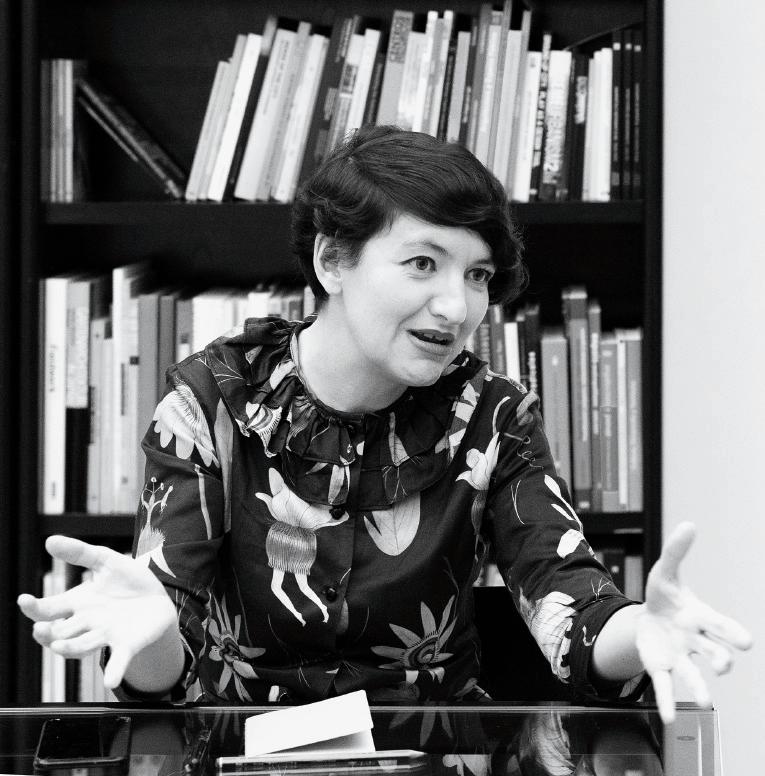
por todas partes de cuáles son las actividades cotidianas. Y eso es lo que la modernidad ha eliminado totalmente. Yo diría que el mercado ha sabido aprovechar esa tendencia, pero diría también que ha existido una complicidad por parte de la academia, la cultura y los arquitectos en el sentido de que todavía seguimos pensando a trasluz de Ornamento es delito: seguimos negando que esos aspectos cotidianos sean relevantes.
Le Corbusier la vivienda quiso convertirse en una máquina de habitar, pero posteriormente ya no fue ni siquiera ‘de habitar’, sino simplemente una manera pragmática de resolver un programa borrando todo discurso. Yo diría que el mundo ha ido entregándose a la abstracción porque el mercado ha ido imponiendo unas pautas cada vez más abstractas y menos relacionadas con el universo tradicional de la mujer, que es más concreto y tiene que ver más con los cuidados.
IC: Sí, yo creo que el mercado es tal vez culpable de esa deriva no sólo hacia lo abstracto, sino también hacia lo épico: esa situación en la que culturalmente sólo se valora la gran posesión, la gran hazaña, el gran emblema, el gran logro. Y se presta una atención mucho menor al detalle, a los elementos que hacen referencia a la vida cotidiana. Como decías, la casa victoriana es testigo y deja huellas
CP: A veces me pregunto por qué las arquitecturas que a mí me desagradan niegan sus lazos con las personas y las cosas: son arquitecturas que, no por casualidad, se fotografían sin gente. Por eso, siempre digo que aspiro a una arquitectura contaminada, que quiero fotografiar una arquitectura en verdad viva, que evidencie cómo se mueve la gente, cómo se siente la gente en ella. Aspiro a la contaminación. Lo trágico es que estas arquitecturas que excluyen lo humano tienen un éxito increíble, también entre la gente de a pie, lo cual me lleva a pensar que quizá esta gente, en el fondo, está necesitada de esa épica de la que hablas.
IC: Tengo la sensación de que precisamente en esa apología de los aspectos más épicos, en esa negación de la importancia del detalle y de la vida cotidiana, está un poco la génesis de la separación entre la sociedad civil y la arquitectura como profesión. Hay un factor coyuntural —tenemos una crisis económica, una crisis del modelo productivo, una crisis ecológica...— y quizá la manera en la que las mujeres se han educado, su cultura y su forma de actuar, es parte de la solución. No se trata de reivindicar el amparo, sino de reivindicar una oportunidad y una estrategia. Siempre digo que hay un primer y un segundo feminismo que abogan por igualar los derechos de las
«La manera en la que las mujeres se han educado, su cultura y su forma de actuar, es parte de la solución»
ment seem to count, and less attention is paid to the details, to the elements of everyday life. As you were saying, the Victorian house is an example, and leaves traces everywhere of its daily activities. And that is what modernity has eliminated completely. I’d say the market has managed to make the most of that trend, but this has happened in complicity with the academy, culture, and architects in the sense that we still think about Ornament is Crime: we still deny that those everyday aspects are relevant.
CP: Sometimes I ask myself why the architectures I dislike deny their ties with people and things: buildings that, not by coincidence, are photographed without people. That’s why I always say that I look for a contaminated architecture, I want to photograph architecture that is alive, which reflects how people move, how they feel inside it. What’s sad is that these architectures that exclude the human are incredibly successful, also among everyday people, which makes me think that perhaps people are in need of that epic you are talking about.
IC: I have the feeling that precisely that praise of the more epic aspects, that denial of the importance of details and of everyday life, is somehow the origin of that separation between civil society and architecture as a profession. There is a temporary factor – we’re in an economic crisis, a crisis of the production model, an ecological crisis – and maybe the way in which women have been educated, their culture and their way of acting is part of the solution. This is not a call for protection, but a call for an opportunity and a strategy. I always say there is a first and a second feminism that advocate equal rights for women and for men: the right to

vote, the right to take on public posts or the right to have a political role in society. And, next, the right to be part of an executive committee or of company management: the possibility of being part of the decisionmaking groups in society, but trying to make sure that equal rights involve equal roles, that is, making the woman perform like a man. We are in a situation in which there should be a revision of feminism associated to the idea that the environment and nature put us, as human species, in our place: a more vulnerable place where we might not
labelled or pigeonholed. I see life as a whole, and in life there are aspects that respond to a male vision and others that come from a female vision. So when you say you wouldn’t want to be a company director because you would have to give up many things in life, I think no one who steps into that role should be expected to give up certain things. That’s why I say that, in the end, the market is the winner in all this: the only thing that counts is productivity, short-term benefits which demand huge sacrifices… This is what we should fight for: a fuller life with multiple and complementary visions.
want to be men. Perhaps I have no interest in being president of a political party or of a company if that means I won’t be able to balance my private life and my public life, if that means I’ll have to give up maternity… CP: But society too, and not just men, maintains the traditional gender roles. Today we know what type of feminism we need to defend, but I don’t want anything given to me, so to speak. I don’t want to be chosen for a post just because I’m a woman. I consider myself a better architect than many other architects. I have a vision of the world that is complemented by other visions of the world. History, culture, genetics, or biology have led us to perceive things in different ways. In this context, women must claim the essential and active role of the female condition. I don’t want to be given half of something: I forgo charity and don’t want to be
IC: Joining messages, I think that the transition of women into the labor market is a collective advantage, not for women, but for society as a whole. It’s a matter of vindicating, reasserting the value, and placing at the service of society a series of tools – which have been acquired and naturalized – for work and for dialogue, as well as a cultural heritage which up to now haven’t been part of the conversations about public life. Do we give immigrants permission just to live in our country or do we let them change the rules? Because maybe the right thing is not only letting them live like we do, but letting them change some of our rules so that society can evolve towards greater cosmpolitanism.
CP: Every time there has been a rise in knowledge, diversity, cross-cultural contamination, it has brought moments of peace and also of prosperity. But cultural exchange has always needed mutual involvement, otherwise the result is isolation, and, when you close yourself to the world and to others, prosperity ends. That’s why I think exclusionary nationalisms only lead to conflict.
“The way in which women have been educated, their culture and their manner of acting, is part of the solution“
mujeres y de los hombres: poder votar, poder ejercer roles públicos o poder tener un papel político dentro de la sociedad. Y, después, poder formar parte de un comité ejecutivo, o de una dirección empresarial: poder formar parte de los estamentos que toman las decisiones importantes desde el punto de vista público de la sociedad, pero intentando que en esa equiparación de derechos haya también una equiparación de roles, es decir, haciendo que la mujer actúe como el hombre. Estamos en una situación en la que debería haber una revisión del feminismo asociada a la idea de que el medio ambiente y la naturaleza nos ponen, como especie humana, en nuestro sitio: en un lugar más vulnerable donde quizá no queramos ser hombres. Quizá yo no tengo interés en ser presidente de un partido político o de una empresa si eso significa que no voy a poder conciliar mi vida privada con mi vida pública, si eso significa que voy a renunciar a una maternidad presente...
CP: Pero es la sociedad, no sólo el hombre, la que mantiene los papeles tradicionales del género. A estas alturas, parece estar claro el feminismo por el que debemos abogar, pero, por decirlo así, yo no quiero que me regalen nada. No quiero que me seleccionen para un puesto
o un para un concurso por el mero hecho de ser mujer. Me considero mejor arquitecto que muchos arquitectos. Tengo una visión del mundo que se complementa con otras visiones del mundo. La historia, la cultura, la genética o la biología nos han llevado a que unos percibamos la realidad de una manera y otros de otra. En este contexto, la mujer ha de reivindicar el papel fundamental y activo de la condición femenina. No quiero que me den la mitad de algo: renuncio a la caridad y a que me califiquen o encasillen bajo un cierto patrón. Veo la vida como un conjunto, y en la vida hay aspectos que se deben a la visión masculina y otros que proceden de la visión femenina. Por eso, cuando dices que no querrías ser director porque tendrías que renunciar a muchas cosas de la vida, pienso que la persona que ha llegado a ese cargo y se supone que debe dejar de lado ciertas cosas tampoco tendría por qué hacerlo. De ahí mi afirmación de que, a la postre, es el mercado el que ha salido ganando: lo único que cuenta es la productividad, los beneficios a corto plazo y que exigen un sacrificio inmenso… Es contra esta situación contra la que debemos luchar, en pos de una vida más completa y dotada de visiones múltiples y complementarias.

IC: Por aunar los mensajes, creo que la incorporación de la mujer supone una ventaja colectiva, no para las mujeres, sino para el conjunto de la sociedad. Se trata de reivindicar y volver a poner en valor y a disposición de toda la sociedad unas herramientas —que se han adquirido y se han naturalizado— de trabajo y de diálogo, y un patrimonio cultural y un acervo que hasta ahora no han formado parte de las conversaciones sobre la vida pública. ¿Dejamos a los inmigrantes sólo vivir en nuestro país o les dejamos también que cambien las reglas? Porque a lo mejor deberíamos no sólo dejarles vivir como nosotros vivimos, sino permitir también que cambien parte de nuestras reglas para que nuestra sociedad evolucione hacia un cosmopolitismo mayor.
CP: Cada vez que se ha dado un auge de conocimiento, de diversidad, de contaminación de unas culturas con otras, se han generado momentos de paz y, también, momentos de cierta prosperidad. Pero queda claro que el intercambio de culturas ha supuesto siempre una implicación común: en caso contrario, el resultado es el aislamiento, y, cuando uno se cierra al exterior y a los demás, la prosperidad se acaba. Por eso creo que los nacionalismos excluyentes sólo llevan al conflicto.
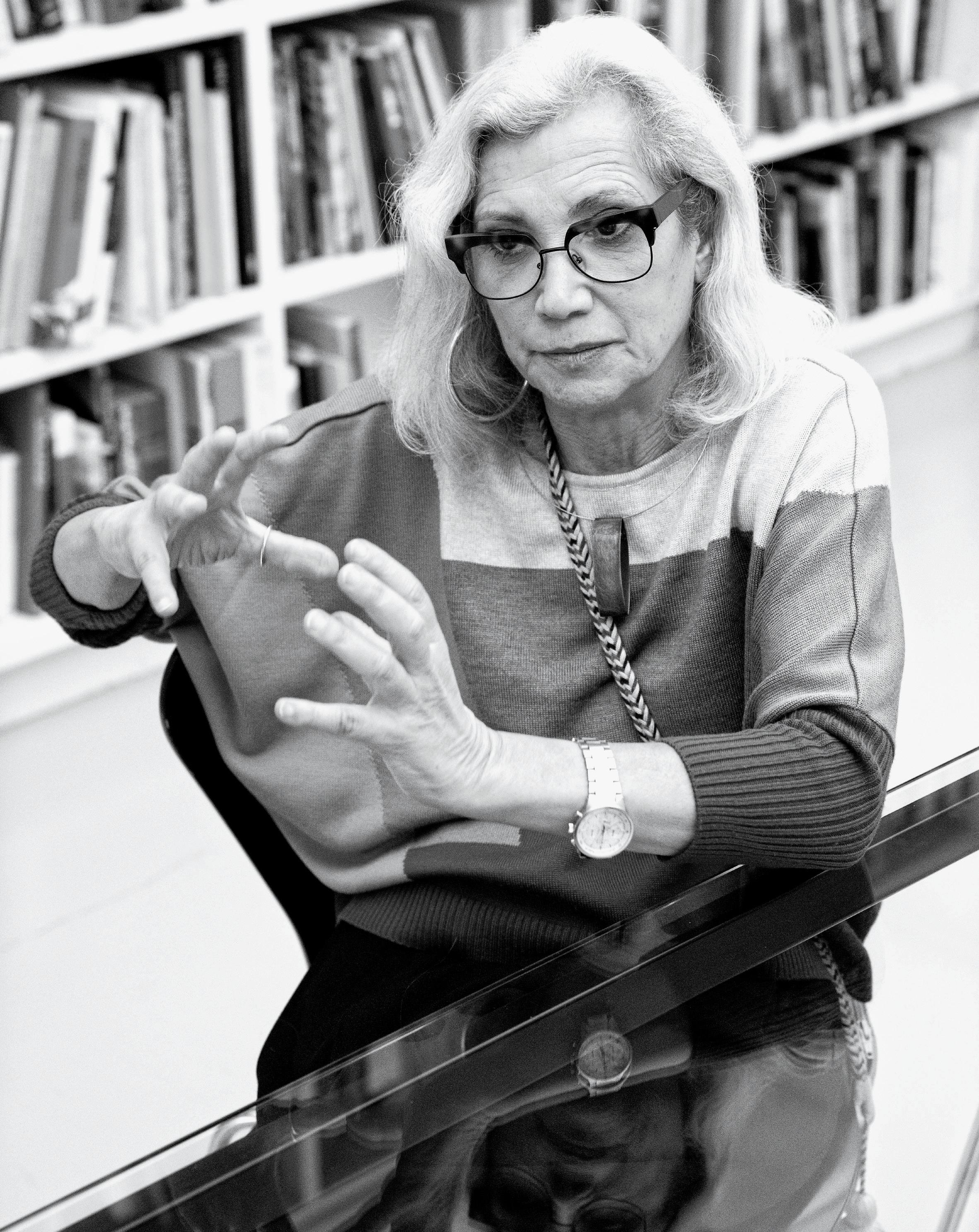
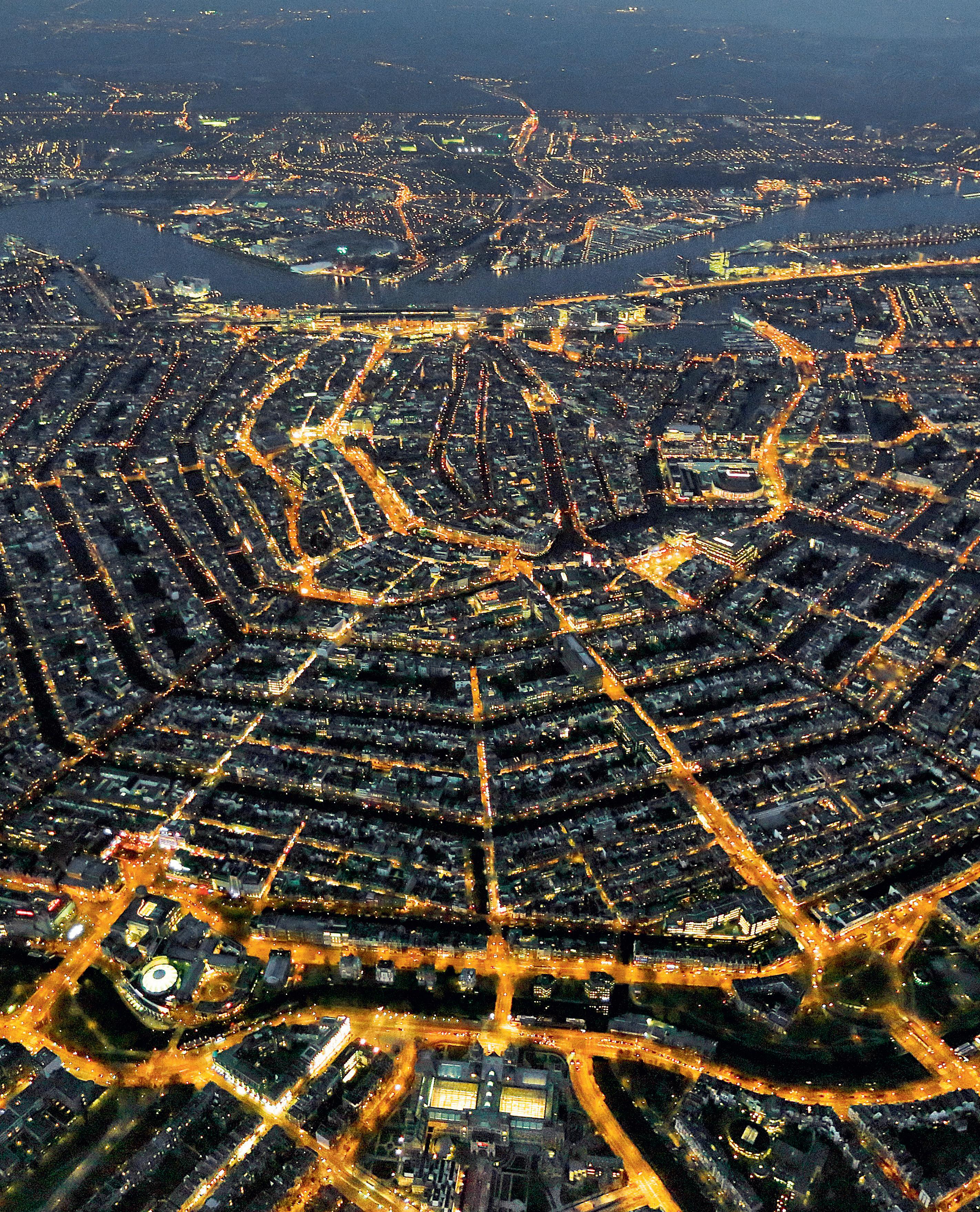
Comercio, ecología y diseño se mezclan entre los canales de esta colorida ciudad con uno de los centros históricos más extensos de Europa.
Commerce, ecology, and design mix between the canals of this colorful city with one the largest historic centers in Europe.
Para facilitar la venta a los comerciantes que usaban los canales para transportar mercancía se estableció en 1862 en el canal Singel este mercado flotante donde al menos quince puestos ofrecen la flor típica del país, el tulipán.
To make it easier for the traders who used the canals to transport goods, this floating structure was built in 1862 on Singel Canal, where at least fifteen stalls sell the country’s typical flower, the tulip.
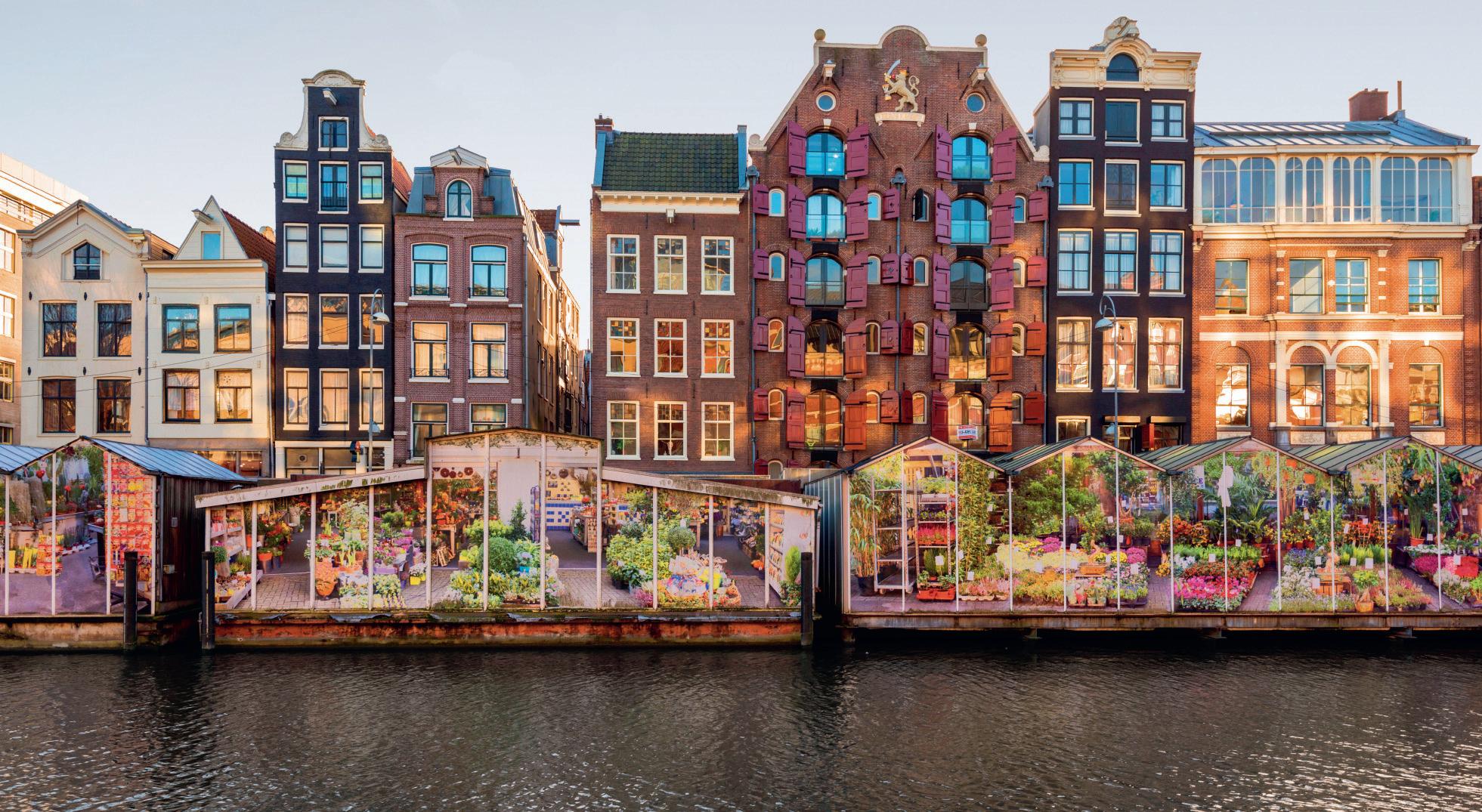
En la parte occidental del puerto, esta extensa operación urbana diseñada por MVRDV ha convertido una presa y unos silos en un edificio de usos mixtos cuyos apartamentos difieren en tamaño, precio y organización.
In the western part of the port, this extensive urban operation designed by the architecture studio MVRDV has turned a dam and a number of silos into a mixed-use building with apartments of different sizes, prices, and layouts.
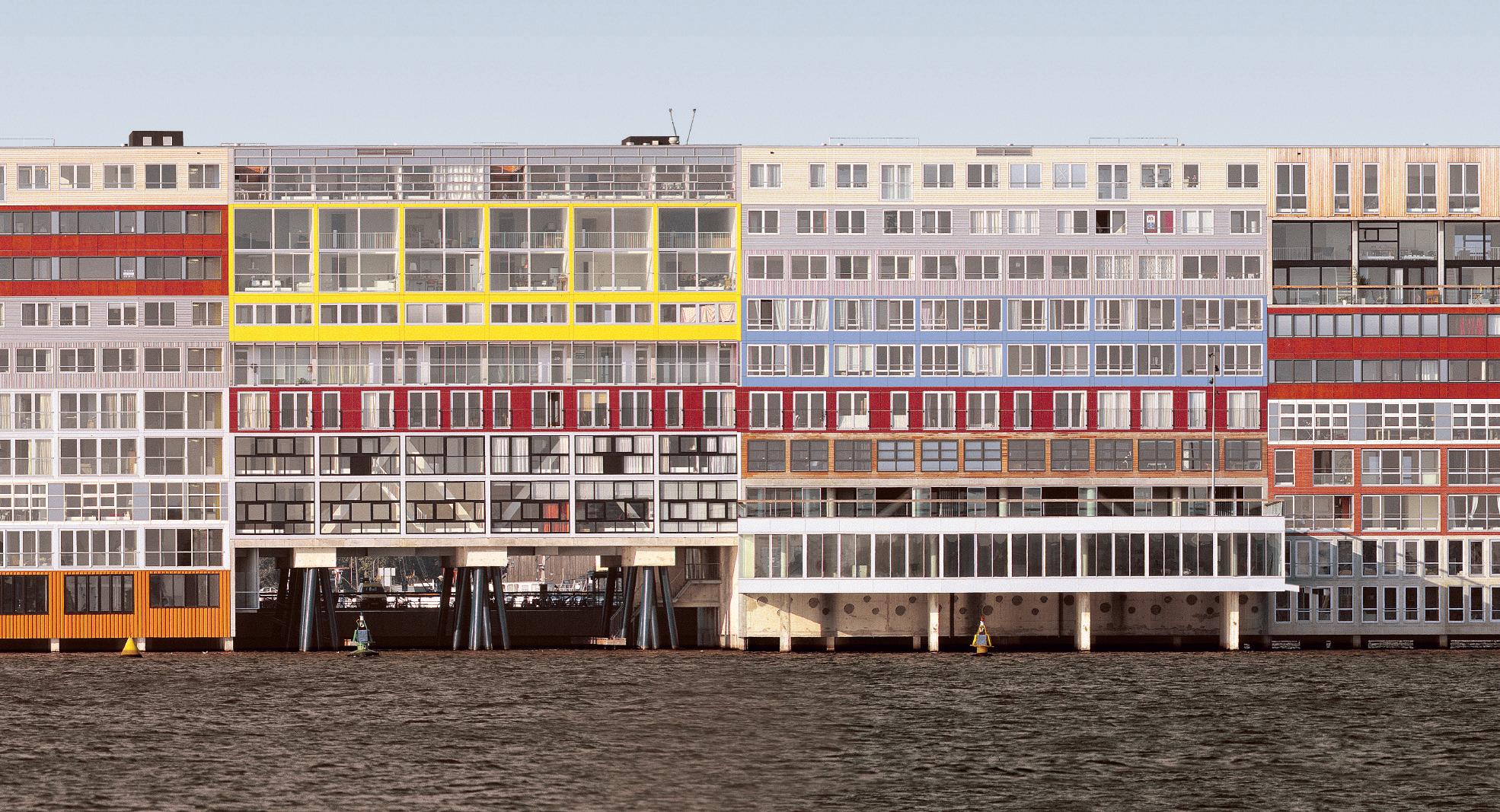
Cultural Venue Museumplein
Concebido como depósito de colecciones nacionales, el Rijksmuseum reúne 5.000 obras de maestros holandeses y flamencos. Frente a él, se encuentran el museo de arte contemporáneo Stedelijk y el dedicado a Van Gogh.
Built to serve as a deposit for the national collections, the Rijksmuseum gathers 5,000 works by Dutch and Flemish authors. The Stedelijk and the Van Gogh museums are located across from it.
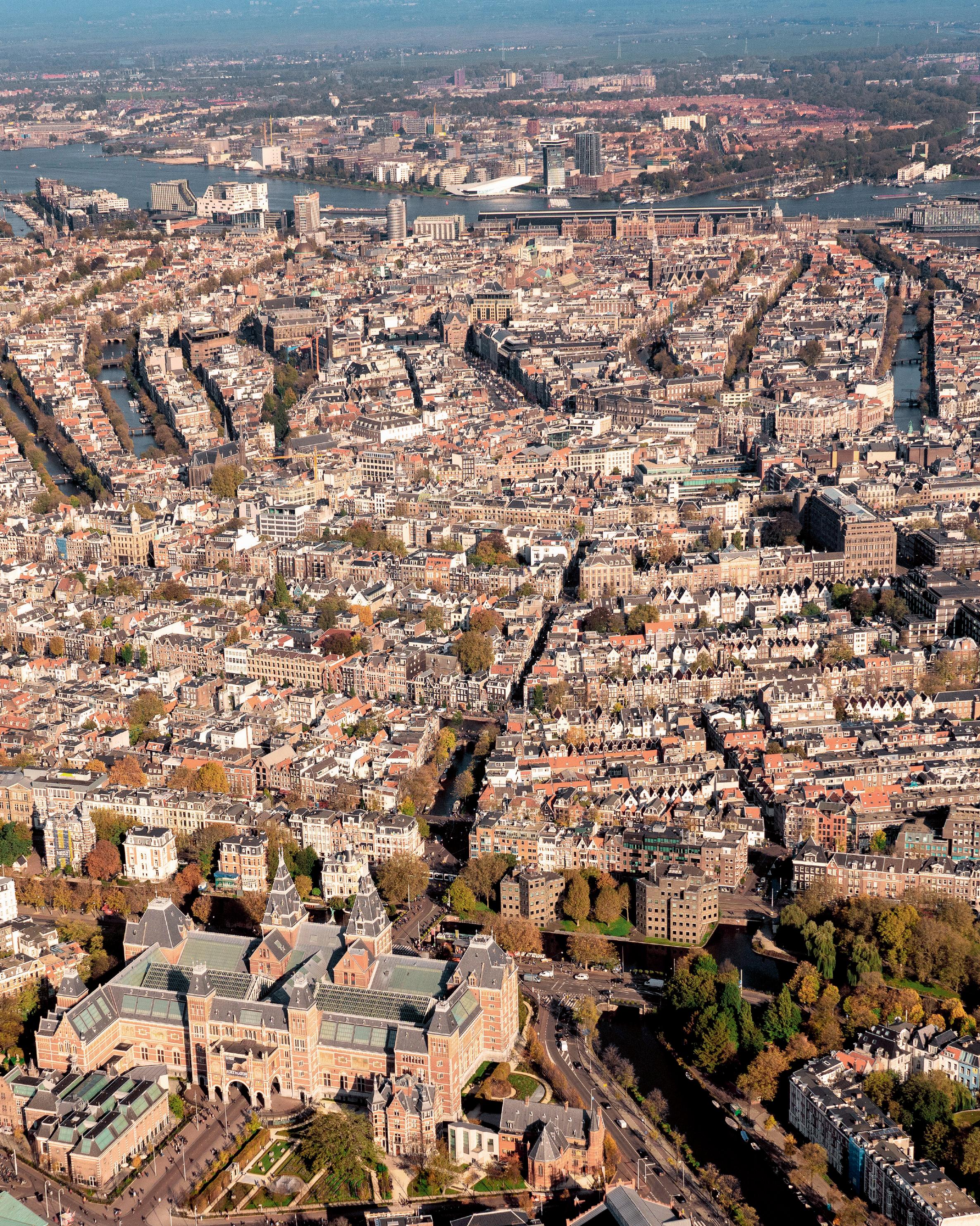
La casa más antigua de madera de Ámsterdam se encuentra en un patio medieval de 1346, un remanso de tranquilidad habitado en su origen por beguinas, una hermandad de mujeres cristianas al margen de la iglesia.
The oldest wooden house in Amsterdam is situated inside a medieval courtyard dating from 1346, a haven of peace originally occupied by the Beguines sisterhood, and today by older single women.

06
Construidas en 1923 para una cooperativa de obreros, estas viviendas destacan por su decorativa fachada.
© Oleg Pokrovskiy
Reconvertido en hotel, este expresivo edificio se considera el primer ejemplo de la Escuela de Ámsterdam.
Diseñado en 1896 como sede de la bolsa de valores por H. P. Berlage —considerado padre de la arquitectura holandesa moderna— este gran hall fue pionero en el uso racional de materiales como el ladrillo, el hierro y el vidrio.
Designed in 1896 as the home of the commodity exchange by H.P. Berlage – considered to be the father of modern Dutch architecture – this large hall pioneered the rational use of materials like brick, iron, and glass.
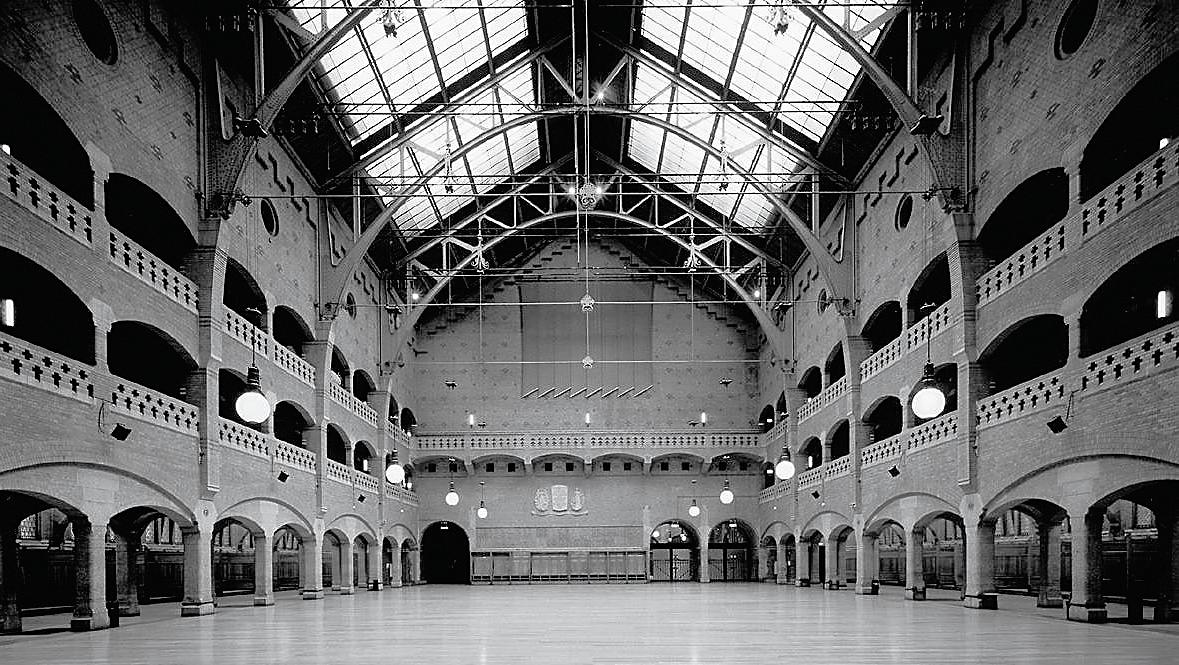
Brick Expressionism Het Schip
Ejemplo clave del estilo expresionista en ladrillo, el complejo Het Schip (1919) está formado por 102 apartamentos, un salón de actos y una oficina de correos que hoy acoge el Museo de la Escuela de Ámsterdam.
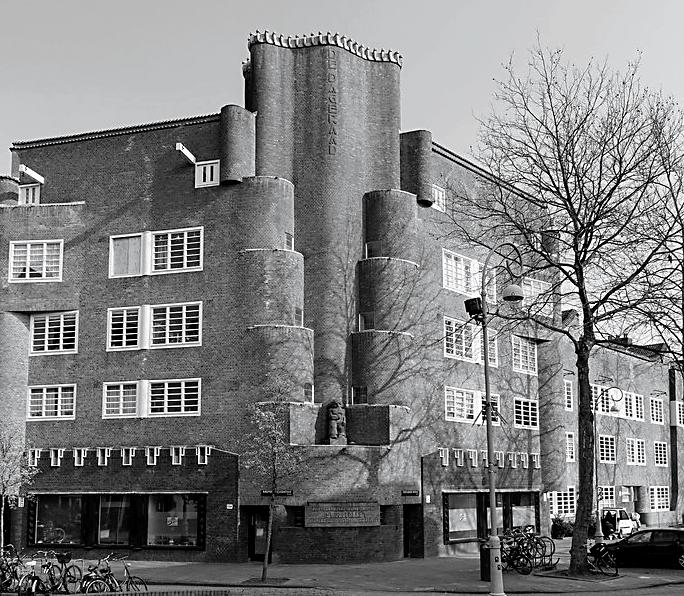


Neighborhood Moederhuis
Diseñado como un refugio para madres en 1978, este edificio de Van Eyck hoy funciona como hotel.
Designed as a shelter for mothers in 1978, this building by Van Eyck functions today as a hotel.
El orfanato de Van Eyck (1960) es un emblema de la corriente estructuralista que busca integrar los aspectos sociológicos en un orden geométrico. Junto a él, las oficinas Tripolis (1990) se insertan también en una red celular.
Amsterdam Orphanage (1960) by Van Eyck is a symbol of the structuralist current that tries to place sociological aspects in a geometric order. Next to it, the Tripolis Offices (1990) are also inserted in a cellular network.
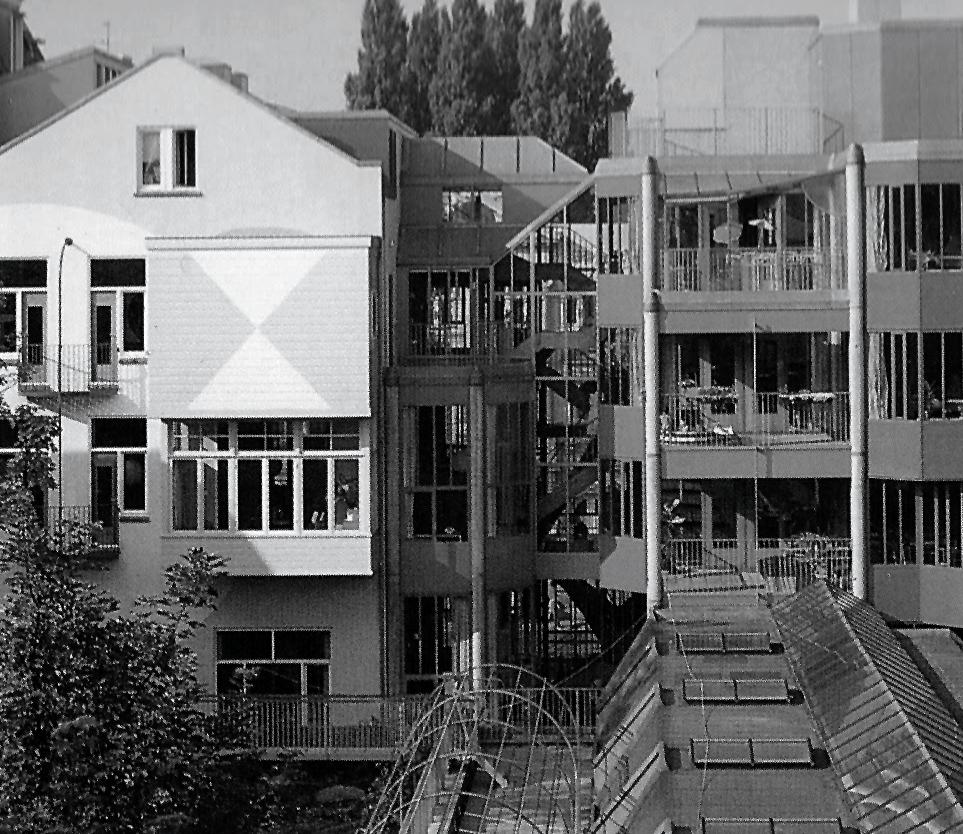
Edificado a partir de una misma unidad modular, este complejo residencial para ancianos fue concebido en 1971 por Herman Hertzberger como un área urbana experimental donde todos los servicios son accesibles.
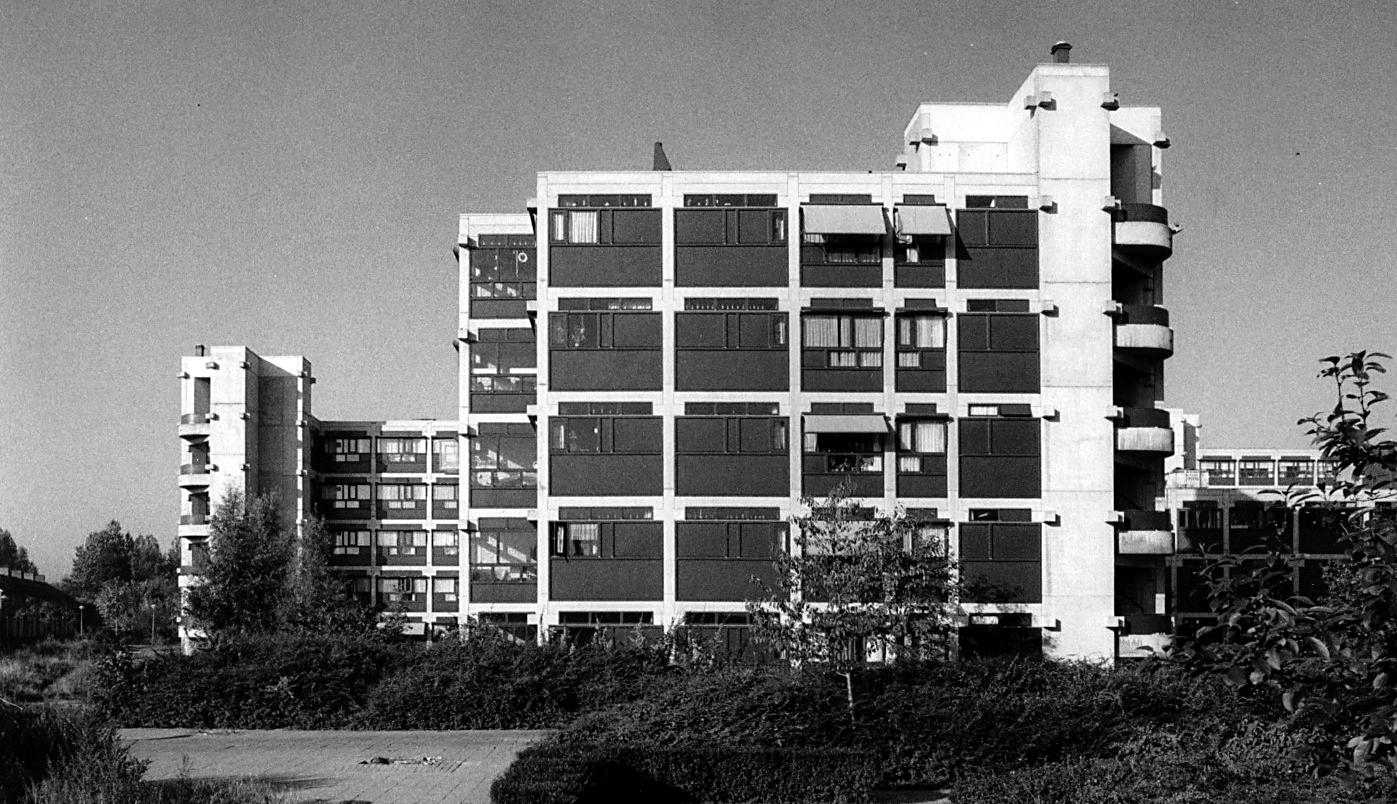
Built from a same modular unit, this residential complex for the elderly was designed in 1971 by Herman Hertzberger as an experimental urban area where all the services are accessible.

Educational
Los principios pedagógicos de Maria Montessori —libertad, movimiento y experimentación— se plasman en la escuela Apollo de H. Hertzberger (1983) a través de espacios conectados que generan una ciudad en miniatura.
The pedagogical principles of Maria Montessori – freedom, movement, and experimentation –are reflected at the Apollo School by Hertzberger (1983) through connected spaces that create a miniature city.
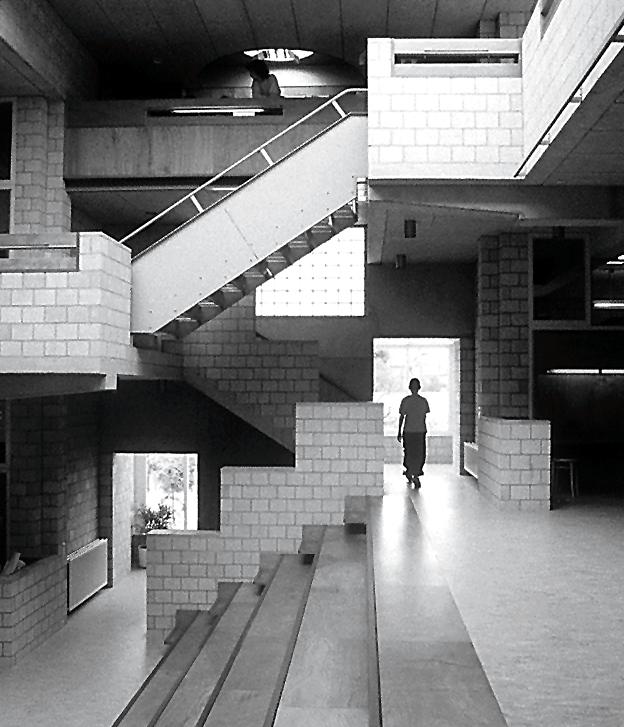
WoZoCo
La solución en voladizo que propuso MVRDV para 13 de las 100 viviendas WoZoCo —destinadas a población mayor de 55 años— permitió aumentar la densidad y liberar espacio público a nivel de calle.
The cantilevers proposed by MVRDV for 13 of the 100 apartments of WoZoCo – for residents 55 years of age and over – allowed increasing the density and freeing up public space at street level.
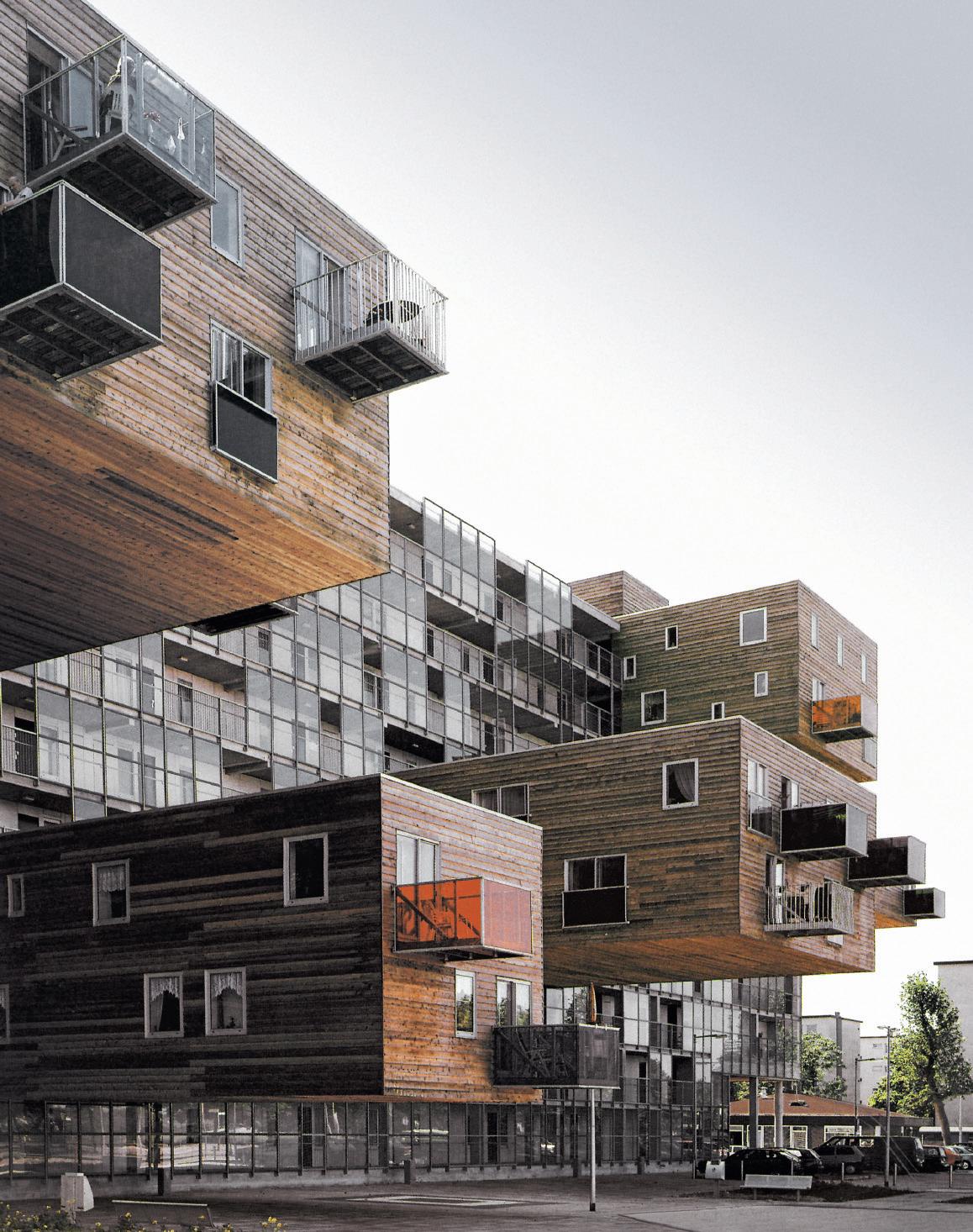
En la isla artificial de Borneo, Miralles Tagliabue construyeron en 1996 estas coloristas viviendas.
Enric Miralles and Benedetta Tagliabue built these six colorist dwellings on Borneo Eiland in 1996.
Sculptural Building
Sarphatistraat Offices
Frente al canal Singel, el pabellón de cobre perforado —diseñado por Steven Holl— contrasta con el edificio existente de ladrillo, mientras que en el interior los espacios se fusionan a través de la iluminación y el color.
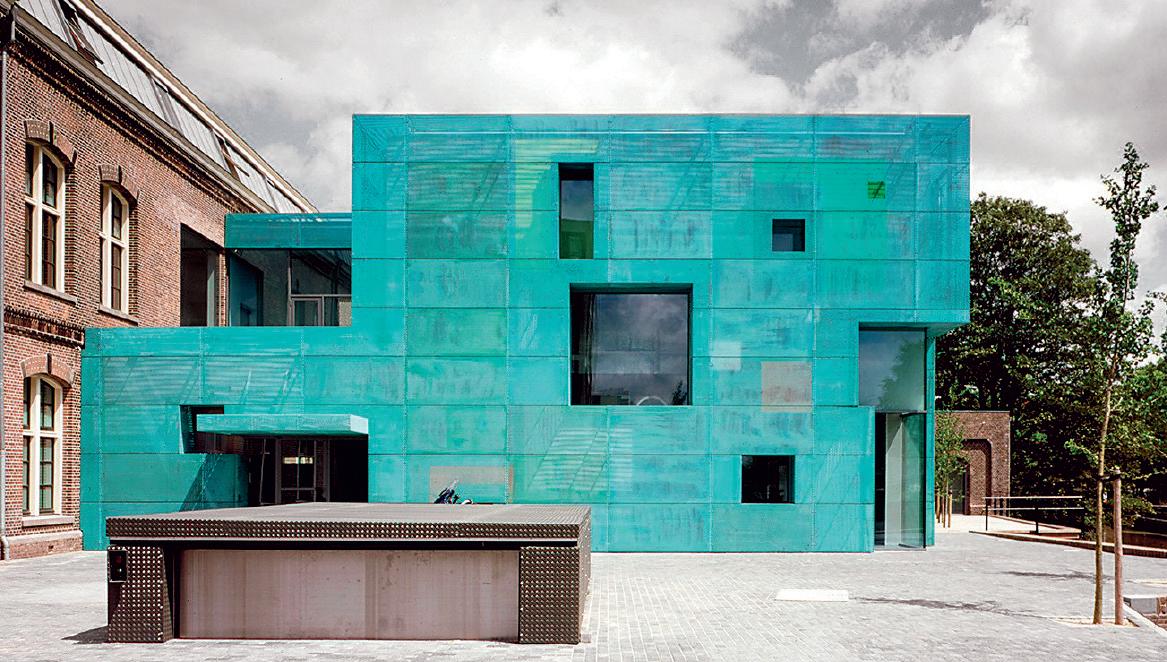
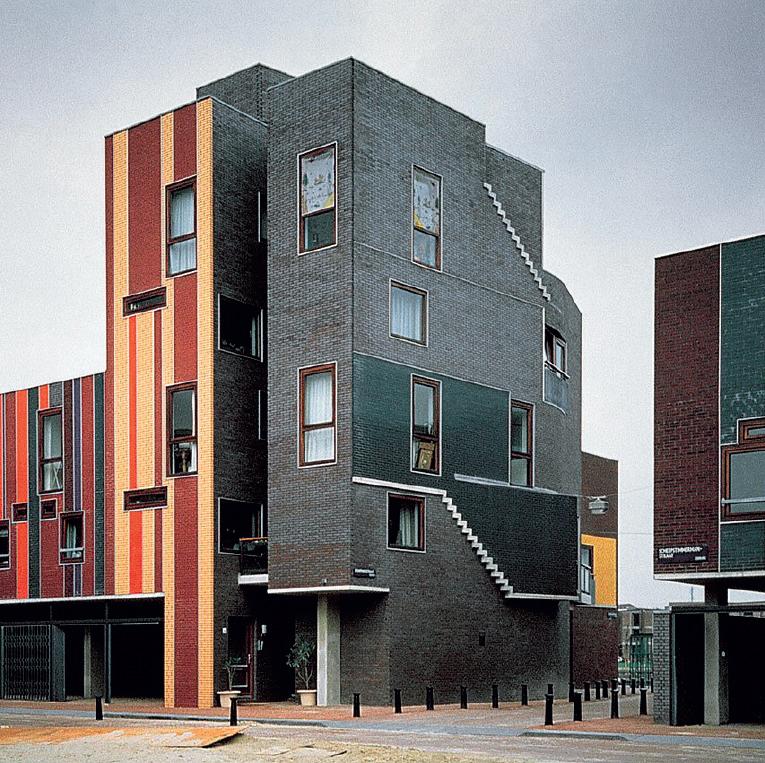
Facing Singel Canal, the perforated copper pavilion – designed by Steven Holl – creates a contrast with the existing brick building, while the interior spaces are fused together through lighting and color.
Diseñado por el equipo de Renzo Piano, este museo con forma de barco y fachada de cobre hace referencia al puerto circundante, y tiene una rampa de acceso a la cubierta que funciona como plaza pública.
Designed by the studio of Renzo Piano, this boat-shaped museum with copper facades makes reference to the surrounding port, and has a ramp that leads up to the roof, which becomes a public plaza.

David Chipperfield transformó esta oficina en una escultura geométrica que presta atención a los detalles y los materiales.
David Chipperfield converted this office into a geometric sculpture that focuses on details and materials.

En el distrito empresarial Zuidas, junto al centro de convenciones RAI, este hotel de imagen totémica —proyectado por OMA/ Reinier de Graaf— cuenta con múltiples usos entre los que destaca un plató de televisión.
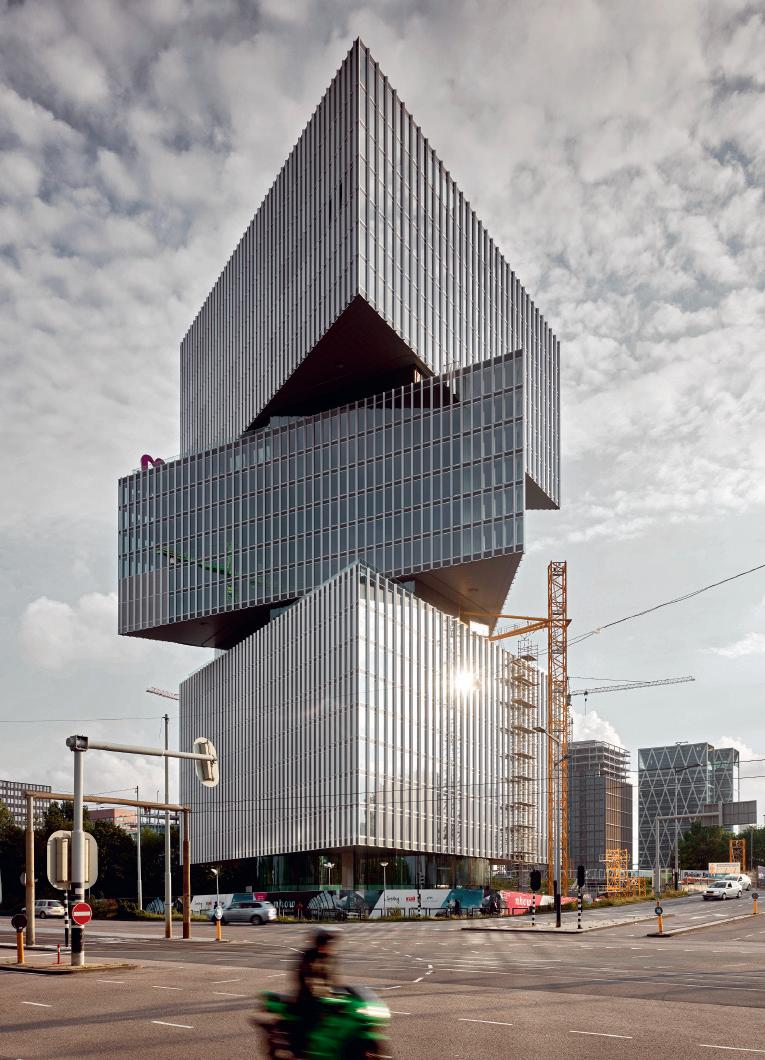
In the Zuidas business district, close to the RAI Amsterdam convention and exhibition center, this hotel – designed by OMA/Reinier de Graaf –serves multiple purposes and includes a live television studio.
National Museum
The New Rijksmuseum
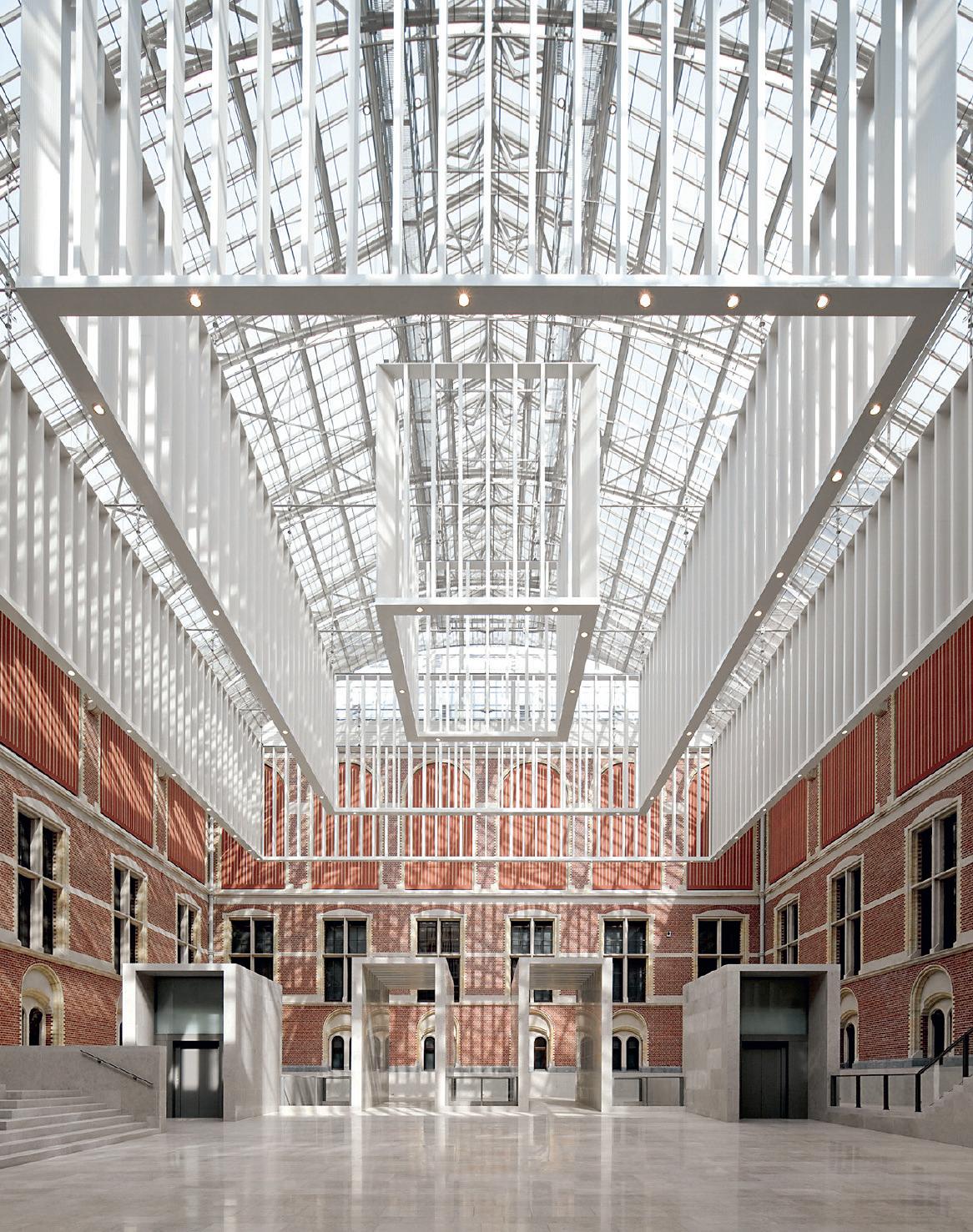
Ravel Residence
Tras una singular piel de ventanas circulares, la residencia Ravel —diseñada por OZ— ofrece alojamiento para 800 estudiantes mediante un proyecto flexible y reciclable que fomenta las relaciones sociales.
Behind a striking facade covered with circular windows, Ravel Residence – designed by the practice OZ – offers housing for 800 students with a flexible and recyclable project that favors social interaction.
La intervención de los sevillanos Cruz y Ortiz solventa el acceso a este museo del siglo xix, que contiene una gran colección de pinturas del Siglo de Oro neerlandés en la que sobresalen 22 obras de Rembrandt.
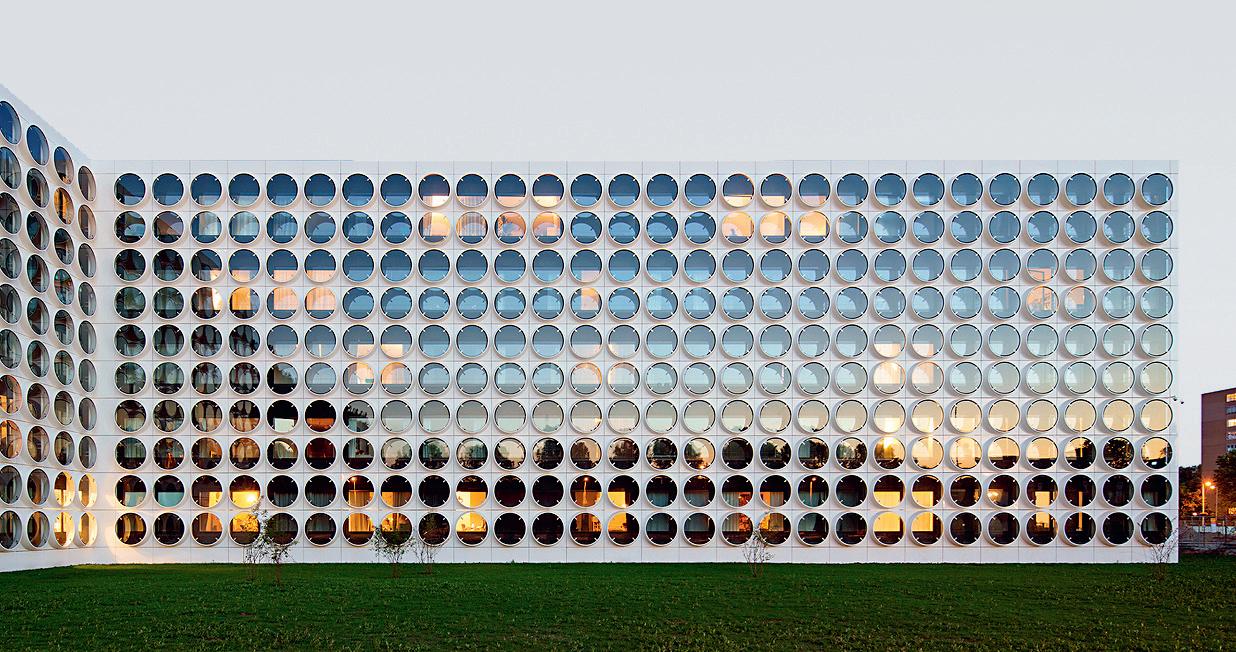
Urban Art
Keith Haring Mural
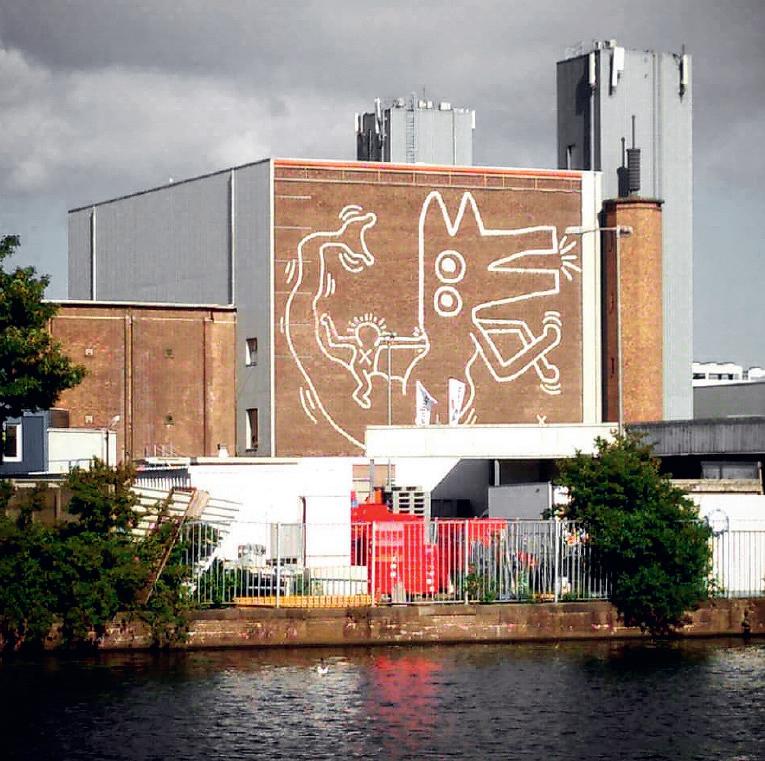
Este mural del influyente artista Keith Haring ha sido restaurado, tras estar oculto durante 30 años.
After being covered for 30 years, the mural by artist Keith Haring has been restored and unveiled.
Lo que en su día fue una plataforma marítima para transmitir los primeros programas de televisión se trasladó en 2011 al puerto de Ámsterdam y aloja hoy un bar y un restaurante con vistas panorámicas.
Once a sea platform used to broadcast the first television programs, the structure was moved in 2011 to the port of Amsterdam, and now houses a restaurant and bar with panoramic views.

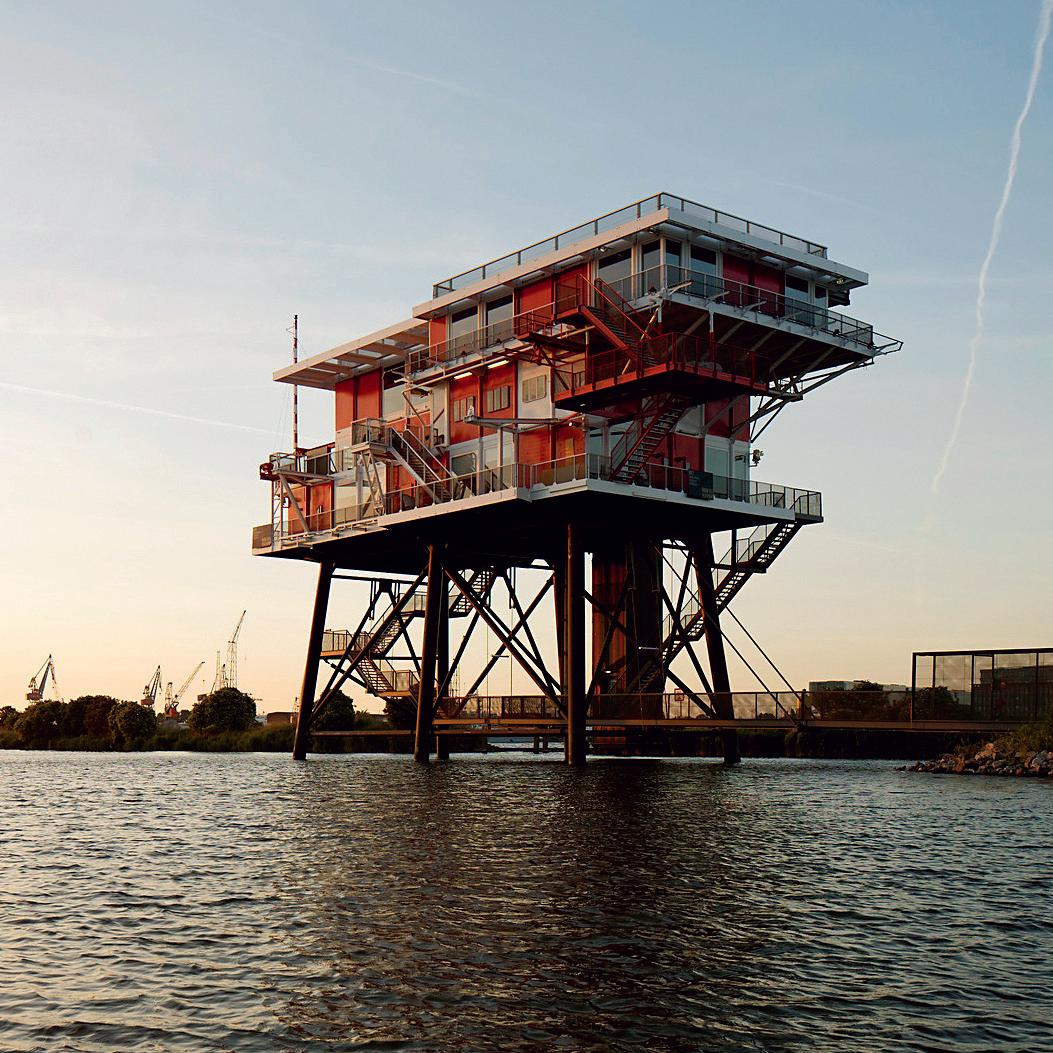
Dentro del complejo Westergas —una antigua zona industrial que se ha convertido en destino cultural—, esta cervecería, además de servir, elabora aquí su propia cerveza y ofrece visitas guiadas así como música en directo.
Inside the Westergas – an old industrial area that has become one of the largest cultural hubs in the city –, this brewery produces and serves its own beer, and offers guided tours of its facilities as well as live music.
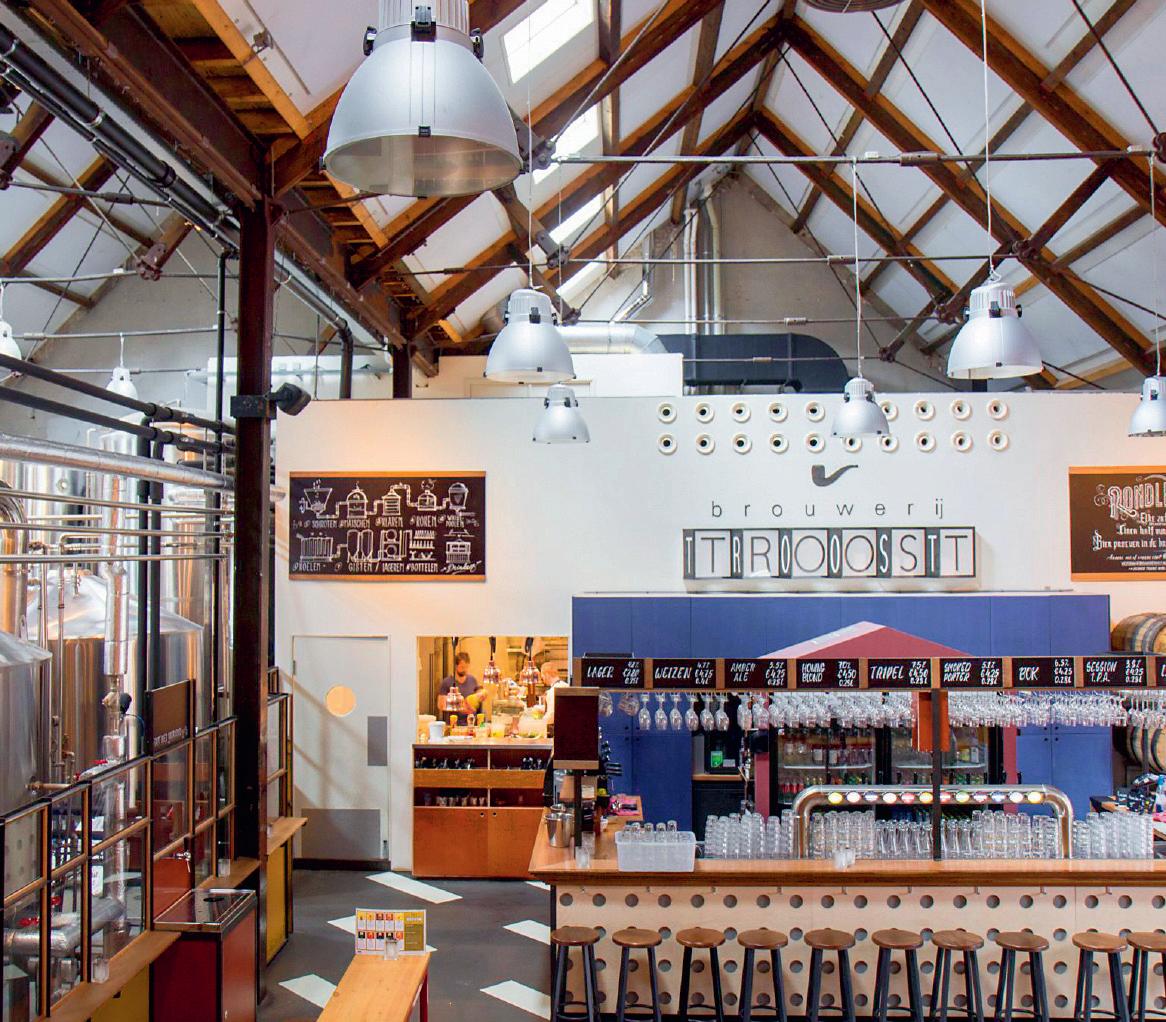
Más de 400.000 bicicletas circulan por la ciudad, que cuenta con aparcamientos en altura como éste.
More than 400.000 bicycles circulate around the city, which has high-rise parking lots like this one.
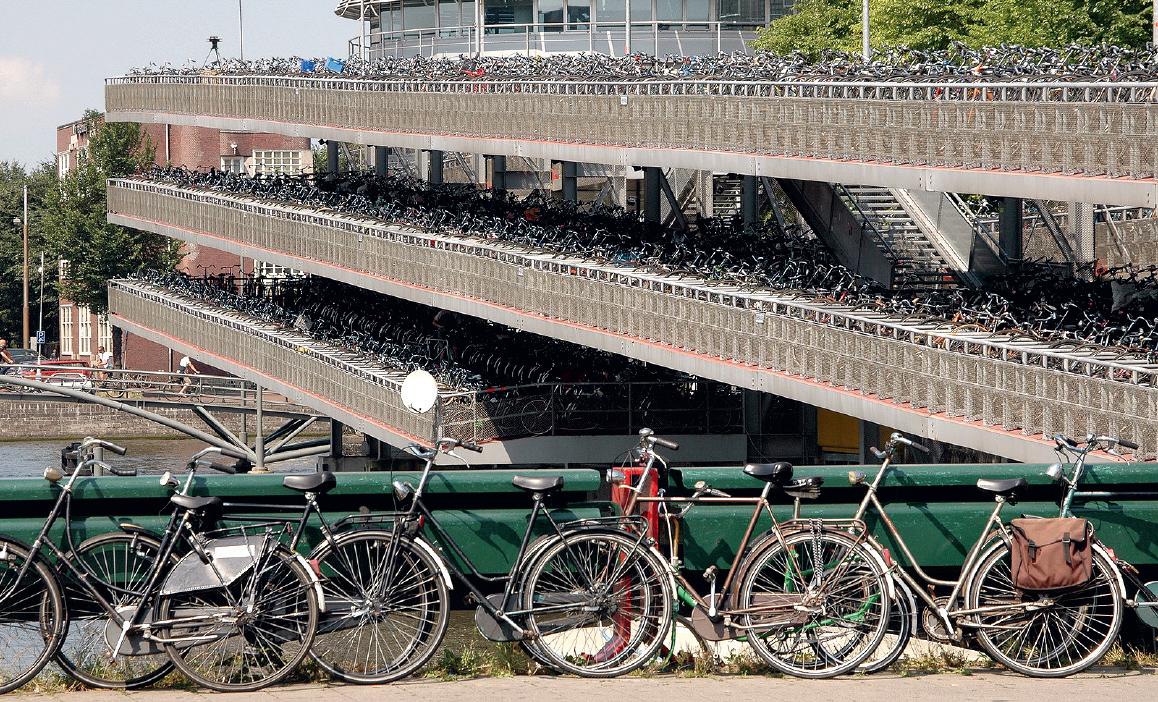
source: trivago.es
Su maximalista diseño, firmado por el aclamado Marcel Wanders, evoca la Edad de Oro neerlandesa.
Boutique Hotel
Its maximalist design by the famed Marcel Wanders evokes the Dutch Golden Age.
Andaz by Hyatt 27 Shopping Hotel Droog
Droog es una de las marcas nacidas en los últimos años que han contribuido al auge del diseño holandés a nivel internacional. Además de un nuevo concepto de hotel, este lugar acoge todo tipo de actividades como desfiles, fiestas o exposiciones. Droog is one of the new brands behind the rise of Dutch design around the world. Aside from new hotel concept, this place holds all sorts of activities like runway shows, parties, and exhibitions.
History Museum
Anne Frank House
Tras la publicación de su diario, en 1960 se abrió como museo la casa en la que A. Frank estuvo escondida.
After the publication of her diary, the house where Anne Frank hid opened up as a museum in 1960.

source: votpusk.ru
Esta combinación de tienda y galería de exposición muestra la historia del diseño en madera laminada a través de muebles, miniaturas, obras de arte, objetos o gadgets, tanto históricos como contemporáneos.
This combination of shop and exhibition gallery shows the history of plywood design through furniture pieces, miniatures, artworks, objects or gadgets, both historic and contemporary.
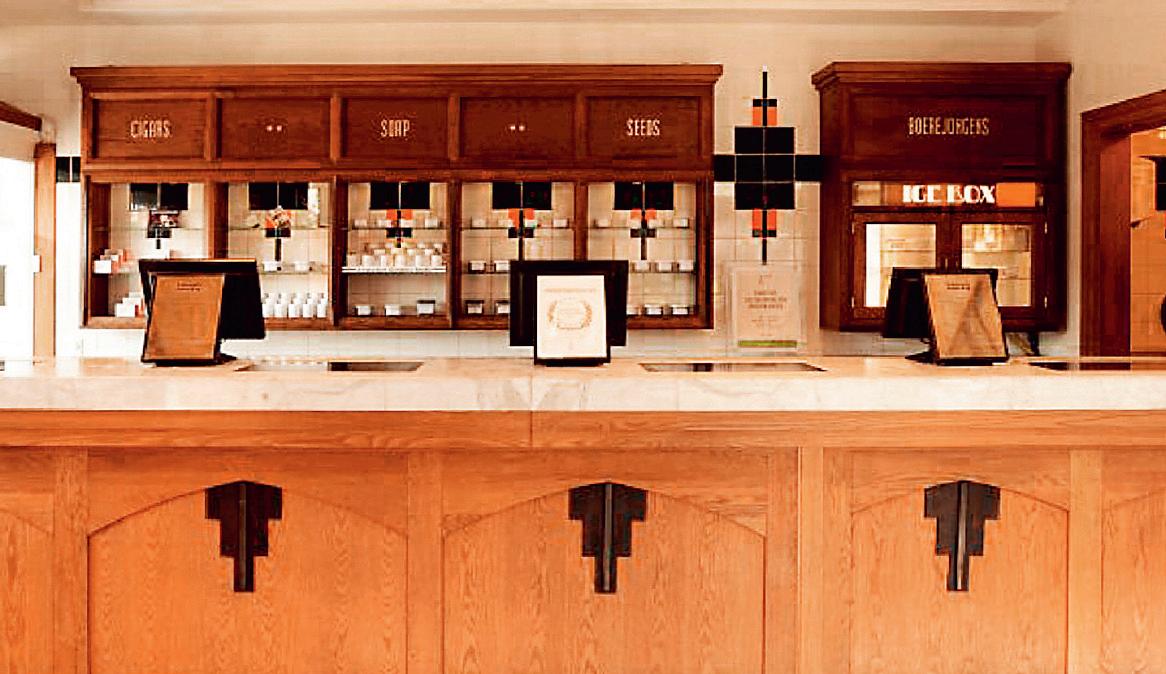

source: moooi.com

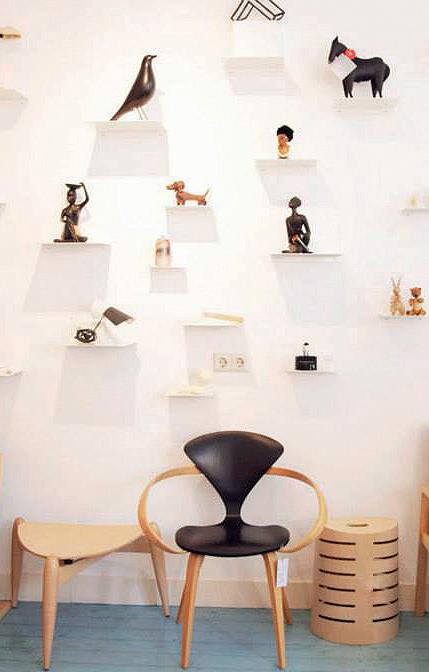
Coffeeshop Boerejongens
La marihuana forma parte de la vida pública de Holanda desde los años 1960, cuando los primeros coffeeshops abrieron sus puertas. La cadena Boerejongens se aleja de la estética habitual con un diseño clásico y luminoso.
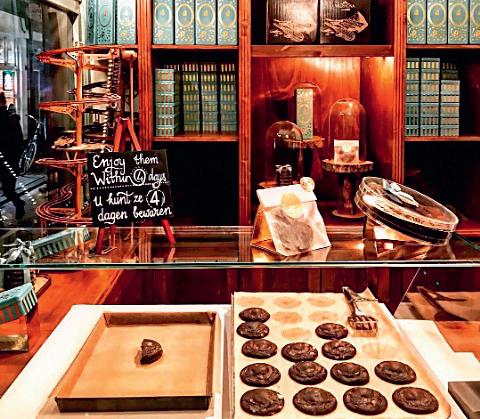
Marihuana is part of public life in Holland since 1960, when the first coffeeshops opened their doors. Boerejongens is a chain that moves away from the usual aesthetic with a classical and luminous design.
source: community.lametayel.co.il
Van Stapele Koekmakerij
Sus crujientes galletas rellenas de chocolate blanco derretido te llevan en un viaje al pasado de la ciudad.
The bakery’s crispy cookies filled with white chocolate take you on a journey to the past of the city.
Amsterdam
01. Bloemenmarkt
Singel, 1012 DH Amsterdam 9 am-5:30 pm Mon-Sun
02. Silodam
Silodam, 1013 Amsterdam excursie@silodam.org
03. Museumplein
1079 RA Amsterdam rijksmuseum.nl stedelijk.nl vangoghmuseum.nl
04. Begijnhof
Oostzaanstraat 45 hetschip.nl +31 20 686 8595
Damrak 243 beursvanberlage.com +31 20 530 4141
IJsbaanpad 3B
Louis Bouwmeesterstraat 377
Localización y datos prácticos Location and useful information
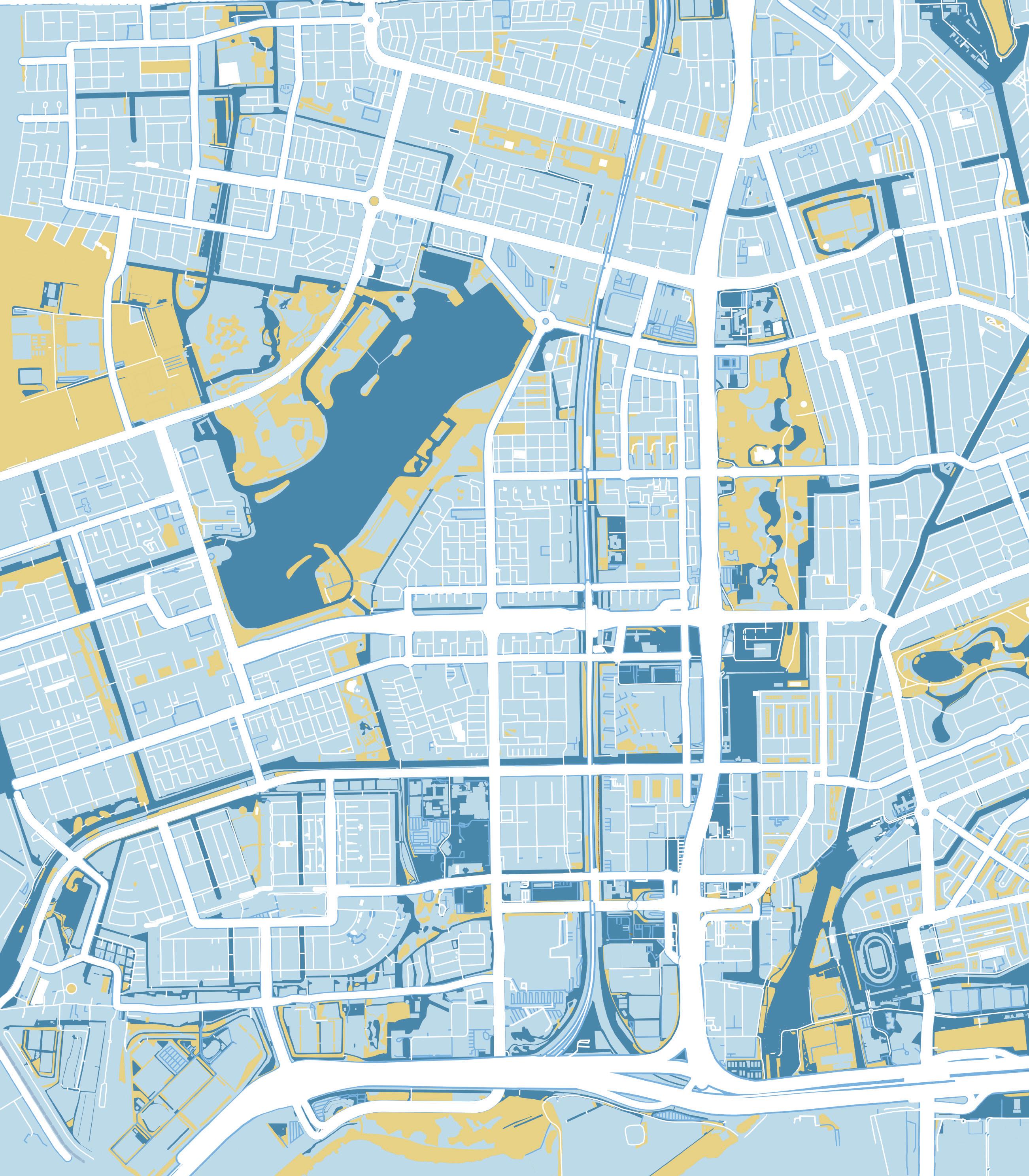
13. WoZoCo
Ookmeerweg, 1069
14.
Borneo Isle, 1019
15. Sarphatistraat Office
Mauritskade 29HS, 1092
16. NEMO
Oosterdok 2 nemosciencemuseum.nl +31 20 531 3233
20 Rijksmuseum
Museumstraat 1 9am-5pm Mon-Sun
21. REM Island
Haparandadam 45-2 remeiland.com
+31 20 688 5501
22. Keith Haring Mural
Willem de Zwijgerlaan 334
23. Brouwerij Troost
Pazzanistraat 27 brouwerijtroostwestergas.nl
26. Andaz by Hyatt
Prinsengracht 587 +31 20 523 1234
27. Hotel Droog
Staalstraat 7 droog.com
9 am-7 pm Mon-Sun
28. Anne Frank House
Westermarkt 20 annefrank.org
29. Wonderwood
Nieuwezijds Voorburgwal 373
+31 20 622 1918
05. Scheepvaarthuis
Prins Hendrikkade 108 +31 20 552 0000
Burgemeester Tellegenstraat 128, 1073 KG
11. Moederhuis
Plantage Middenlaan 33 quentinzoo.com +31 207920117 zoo@quentinhotels.com
Willem Witsenstraat 12, 1077 AZ Amsterdam
Antonio Vivaldistraat 5
18 RAI Nhow
17. Ravel Residence 06. De Dageraad
Europaboulevard 2b, 1078 +31 20 800 3200
19. Freshfields Office
Strawinskylaan 10, 1077 +31 20 485 7000
+31 20 737 1028 4 pm-1 am Mon-Sun
24. The Winter Garden
Dam 9, 1012
20 499 0163
25. Flietsflat Station Stationsplein, 1012
Rusland 3 +31 20 625 3738
30. Boerejongens
Baarsjesweg 239 +31 20 810 0025
31. Van Stapele
Heisteeg 4 +31 20 777 9327 vanstapele.com

